A Detailed Guide To Hiking Mount Hallasan, Jeju Korea
Are you planning to hike Mount Hallasan on your trip to Jeju Island , South Korea ?
Mount Hallasan is the highest mountain in South Korea, offering a once-a-lifetime experience for adventure seekers. Completely separated from the bustle of city life, hiking Mt. Hallasan is an opportunity to immerse and enjoy the beauty of nature.
In this travel guide, I’ll share useful information to plan a perfect hiking trip to Mount Hallasan, Jeju island.

About Mount Hallasan
With an altitude of 1,950m, Hallasan is the highest mountain in South Korea . It’s also known as Yeongjusan, which translates to “Mountain high enough to pull the galaxy.”
Hallasan Mountain has a unique ecosystem and biodiversity along with volcanic geology and volcanic topography.
For example, you can see the Baengnokdam crater at the top, the steep rocky walls of Yeongsilgi Rock, and about 40 Oreums (the parasitic cone).

Hallasan Mountain occupies the most beautiful spot on Jeju Island as it’s located in the center of this island. All four directions, East, West, South, and North, will lead to this impressive mountain.
With steep cliffs, oddly-shaped rocks, and slopes covered with trees, visiting Hallasan is a must for outdoor enthusiasts. The mountain has seven hiking trails: Gwaneumsa, Seongpanak, Eorimok, Yeongsil, Donnaeko, Eoseungsangak, and Seokguram.
Travel tips
- Guide : Check out my Jeju travel guide for your trip planning.
- Accommodation : I recommend booking your hotel in Jeju in advance. Yeha Guesthouse is an excellent place for a budget stay in Jeju city.
- Transport : Compare the best flight prices with Skyscanner . For your comfort, I recommend booking a private transfer to Hallasan Mountain . Also, don’t forget to check my Jeju bus guide to get around the island easily.
- Tour : You can join a small group hike to Mt. Hallasan . The trip includes the Mt. Hallasan hike (Eoseungsaengak Trail), Cheonjiyeon Falls, and Jusangjeolli cliff.
Mount Hallasan’s opening hours
Before climbing the mountain, you need to check the opening schedule of Hallasan National Park. Please note that it is forbidden to stay overnight on the mountain here.
Hallasan national park trails open at 5 am from May to August and 6 am from September to April.
To ensure everyone has enough time to return before dark, the hiking time is limited and varies with the seasons.
Rangers will stop you from climbing higher if you don’t reach the uppermost shelters by certain times (usually 1 pm or noon in the winter).
Below is the timetable showing when you’re last allowed to hike up the mountain.

Best time to visit Hallasan
The best time to hike Mount Hallasan is in spring and autumn. At this time, the weather is pleasant, and nature is blooming, creating beautiful scenery.
There is limited time for climbing. If you are late, you can’t climb anymore, so you should carefully plan your trip.
You should get up as early as possible, prepare your things, and spend about 1 to 1 hour and 30 minutes to reach the foot of Hallasan mountain by bus or car.
To have enough time to reach the top, you should climb the mountain at the following times:
- Winter – 9 am or earlier
- Spring and Fall – 9:30 am or earlier
- Summer – 10 am or earlier
Longer hiking trails
For longer hiking routes such as Eorimok Trail or Yeongsil Trail, you should start early, at 7 am.
Also, if you choose the longer routes, you shouldn’t add too many other attractions because you won’t be able to visit all of them in 1 day.
Short hiking trails
Eoseungsaengak Trail and Seokgulam Trail only take about 1 hour or 2 hours, respectively, so it’s more relaxing to hike.
You can start either morning or afternoon. Please note that most tours visit Eoseungsaengak Trail in the afternoon, around 3:30 pm.

Places to stay in Jeju
To climb Hallasan mountain, you can book a hotel room in Jeju city or the Seogwipo area.
Jeju City is more vibrant, with great nightlife and eateries. It’s a starting point for most tours.
For a budget stay in Jeju, I highly recommend Yeha Guesthouse , a pleasant stay just a few minutes from the bus terminal. The guesthouse has complimentary breakfasts and free washing machines.
Seogwipo area
The Seogwipo area is quiet and close to Jeju’s South Coast attractions: Jeongbang Waterfall , Oedolgae , and Cheonjiyeon Waterfall.
Thira Hotel is a great place to stay in Seogwipo. It has a good location and offers spacious rooms with an onsite restaurant.
Mount Hallasan hiking routes
Hallasan is divided into seven different hiking trails, but only Seongpanak and Gwaneumsa lead to the summit of Baekrokdam, where the crater lake is located.
All trails at Hallasan Mountain are not more than 10 km long. Those who want a more relaxing and gentle experience of exploring the scenery can choose the routes leading to the back of the mountain.
The Eoseungsaengak and Eoseungsaengak trails are the shortest and least demanding, and you can still see impressive mountain scenery.
1. Gwaneumsa Trail
The Gwaneumsa Trail, a north course of Hallasan, is one of the most scenic trails on this mountain.
This route will take you to Baengnokdam, the summit of Hallasan. It’s 8.7 km and takes about five hours one way. For this trail, you should begin latest at 10 am and reach the uppermost shelters by 1 pm in the summer or 12 pm in the winter.
There is a campsite at the trail entrance, and you can enjoy forest bathing while observing the natural ecosystem.
Please note that Gwaneumsa Trail requires a reservation.
- Gwaneumsa Temple → Summit (Dongneung Peak)
- Distance: 8.7 km
- 5 hours/way
- Difficulty: 4/5, view: 4/4
- Pros: great views along most of the trail.
- Cons: steep, longer, and closed frequently.

How to get to Gwaneumsa Trail
From Jeju Intercity Bus Terminal, take the intercity bus #281 to Seogwipo (25 mins), and get off at Jeju University. Then take the intercity bus #475 (15 minutes) and get off at the entrance of the Gwaneumsa Trail. You’ll see the Gwaneumsa campsite.

2. Seongpanak Trail
Seongpanak Trail, the eastern course of Hallasan, will also take you to the summit, along with Gwaneumsa Trail. It’s the longest Hallasan trail, 9.6km, and takes four and a half hours one way.
This route has the most gradual ascent and a side trail to Sara Oreum Observatory.
It’s recommended to hike Seongpanak Trail in a group. Be careful of wasps in the summer and accidents such as broken legs or physical exhaustion during descending.
Please note that a reservation is required for hiking Seongpanak Trail. You can do it with the Hallasan reservation website .
- Seongpanak → Summit (Dongneung Peak)
- Distance: 9.6 km
- 4 hours 30 minutes/way
- Difficulty: 5/5, view: 4/4
- Pros: It’s not as steep as the Gwaneumsa trail.
- Cons: The views from the trail are not as good as those from the Gwaneumsa trail.
How to get to the Seongpanak trail
From Jeju Intercity Bus Terminal, you can take the intercity bus #281 or #181 bound for Seogwipo (40 minutes). Then, get off at the entrance and walk about 2 minutes to Seongpanak Trail.

3. Eorimok Trail
The Eorimok Trail starts at the entrance of the Eorimok Trail (970m above sea level) in Hallasan National Park to Nambyeok (1,600m above sea level).
It’s a 6.8km trail and takes about 3 hours one way.
You should check the weather information before visiting because Witsae Oreum and Nambyeok are prone to severe weather changes, so you may face risk factors such as fog and lightning.
- Eorimok → Nambyeok Bungijeom
- Distance: 6.8 km
- 3 hours/way
- Difficulty: 3/5, view: 2/4
- Pros: shorter hikes with lovely oak trees and a shallow incline.
- Cons: It doesn’t get you to the top of Mount Hallasan.
How to get to the Eorimok trail
From Jeju City Intercity Bus Terminal, take intercity bus number 240 (35 minutes) toward Jungmun (1100 Road). Then, get off at the entrance of Eorimok and walk for about 15 minutes to reach the Eorimok Trail.
4. Yeongsil Trail
The Yeongsil Trail is a 5.8km trail, and it takes about 3 hours and 15 minutes one way when departing from the Yeongsil Management Office.
If you depart from the Yeongsil Service Area, expect about 2 hours and 30 minutes of hiking.
You can descend by using the Donnaeko and Eorimok trails.
Except for the ridge of Yeongsil Crater (1300m ~ 1550m above sea level), which has a relatively steep slope, most of it is flat terrain and easy to visit.
- Yeongsil → Nambyeok Bungjeom
- Distance: 5.8 km
- About 2 hours 30 minutes/way
- Difficulty: 2/5, view: 3/4
- Pros: short hike along a ridge and past several waterfalls.
- Cons: It doesn’t take you to the top of the Korean Hallasan mountain.
How to get to the Yeongsil trail
From Jeju City Intercity Bus Terminal, take the intercity bus 240 (50 minutes) toward Jungmun (1100 Road). Then get off at the Yeongsil ticket office and walk for about 45 minutes to find the entrance to the Yeongsil hiking trail.

5. Donnaeko Trail
The Donnaeko trail starts at the Visitor Information Center (500m above sea level) in Seogwipo City and to the Nambyeok Junction (1,600m above sea level).
Following the Nambyeok Circulation Route connected to Witse Oreum, you can descend along the Eorimok and Yeongsil Trails.
The Donnaeko trail doesn’t have spring water, so you must bring extra drinking water. Since the Nambyeok Junction area has severe weather changes, you should use the designated trail and visit in a small group rather than an individual.
- Donnaeko Trail Information Center → Nambyeok
- Distance: 7 km
- 3 hours 30 minutes/way
- Difficulty: 2/5, view: 2/4
How to get to Donnaeko trail
From Jeju Intercity Bus Terminal, take the intercity bus #281 to Seogwipo (50 minutes) and get off at Seogwipo Industry Science High School.
Transfer to city bus 611,612 and get off at Chunghon Cemetery Square. Then walk 1km (20 minutes) to find Donnaeko Visitor Information Center.
6. Eoseungsaengak Trail
Eoseungsaengak is one of the shortest trails on Hallasan. This easy hike takes just 30 minutes to hike to the top, starting at the Hallasan National Park Visitor Center. You can join a small group hike to Eoseungsaengak Trail. On this tour, you’ll also visit Cheonjiyeon Falls and Jusangjeolli cliff.
When reaching Eoseungtaeng Oreum, you can view the peak of the Hallasan and Jeju plains.
- Eorimok → Eoseungsangak Peak
- Distance: 1.3 km
- About 30 minutes/way
- Pros: shortest hike
- Cons: It doesn’t take you to the top of Hallasan mountain.
How to get to the Eoseungsaengak trail
From Jeju City Intercity Bus Terminal, take intercity bus number 240 and get off at Eorimok.
Read more : Check out my Eoseungsaengak trail guide if you plan to hike this route. For a hassle-free experience, it’s best to join a tour .
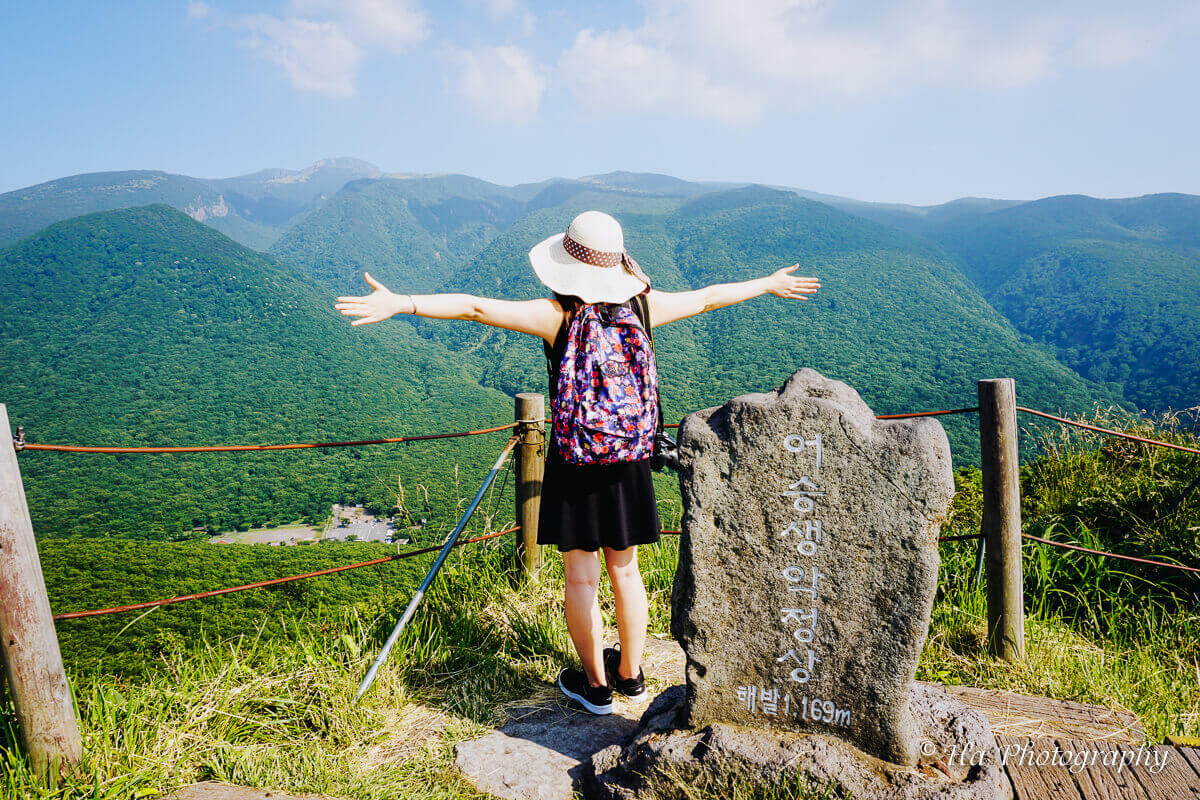
7. Seokgulam Trail
Seokguram Trail is a course frequented by many visitors looking for a light hike.
- Chunghon Memorial Site parking lot → Seokgulam temple
- Distance: 1.5 km
- About 50 minutes/way
How to get to the Seokguram trail
It’s near Jeju City, so you can reach the trail entrance in about 20 minutes by car. You can also take the intercity bus number 240.
From the entrance of Cheonwangsa Temple, walk for about 10 minutes along the forest road to reach the parking lot of the Chunghon Cemetery, where the trail begins. It takes 50 minutes to reach Seokguram temple, 1.5 km one way.

How to choose a suitable Hallasan hiking route
The most popular routes are Eoseungsaengak Trail and Seokgulam Trail. They are both easy and quick trails for hiking.
The Eorimok Trail or Yeongsil Trail is reasonable if you have more time.
For professional climbers with good health, Seongpanak Trail or Gwaneumsa Trail will be challenging enough and take you to the best view of Hallasan Mountain.
Tips : Please note that the hiking time suggested above is for reference only, and you should allocate more time on your trip. You’ll need time to rest, admire the scenery, take pictures, etc.
Do you need a guide for Mt. Hallasan?
There’s no need for a guide as Hallasan hiking routes are very detailed. You’ll see a map, instructions, and signs along the way.
Almost everyone climbs independently, so there is no need to hire a guide. However, hiking with someone is better than walking alone in case of unexpected circumstances and accidents.
What to pack for Mount Hallasan
Depending on the difficulty of hiking routes, the level of preparation is different.
Challenging trails like Seongpanak Trail and Gwaneumsa Trail require professional climbing equipment, while Eorimok Trail and Yeongsil Trail are easier to prepare.
If you travel to Jeju in winter, you need to prepare clothes and climbing equipment more carefully because, at this time, the road is slippery and much more challenging to climb than in other seasons.
In general, here is a packing list for Hallasan.
- Clothes: Sports clothes are the ideal choice for hiking. Eorimok Trail and Yeongsil Trail are easy to go to, and you can wear simpler clothes.
- Bring a jacket because it will be cold at the top
- Hat, sunglasses, and sunscreen
- Sports shoes or specialized climbing shoes.
- Hiking gears for more challenging routes
- Medicine: bandages, insect repellent cream.
- Water and snacks
Mt. Hallasan sightseeing and service fees
Below are the service fees for Mount Hallasan. While it’s free to visit and hike Mount Hallasan, you’ll need to pay for camping and a shower.
- Ticket price to visit Mount Hallasan: free
- Small (for 3 people or less): 3,000 won
- Medium (for 4-9 people): 4,500 won
- Large (10 people or more): 6,000 won
- Adults: 600 won
- Teenagers: 400 won
- Children: 300 won
- Two-wheel vehicles 500 won
- Compact cars (under 1,000 cc) 1,000 won
- Mid-size cars (under 4 ton trucks) 1,800 won
- Small bus (11-15 seats) 3,000 won
- Mid-Large bus (over 16 seats / over 4 ton trucks) 3,700 won
Pin it for later!

Ha is an avid traveler and writer with a background in marketing & hospitality. She's lived in a few countries and traveled to more than 30. When she's not traveling or writing, Ha loves trying new recipes.
Similar Posts
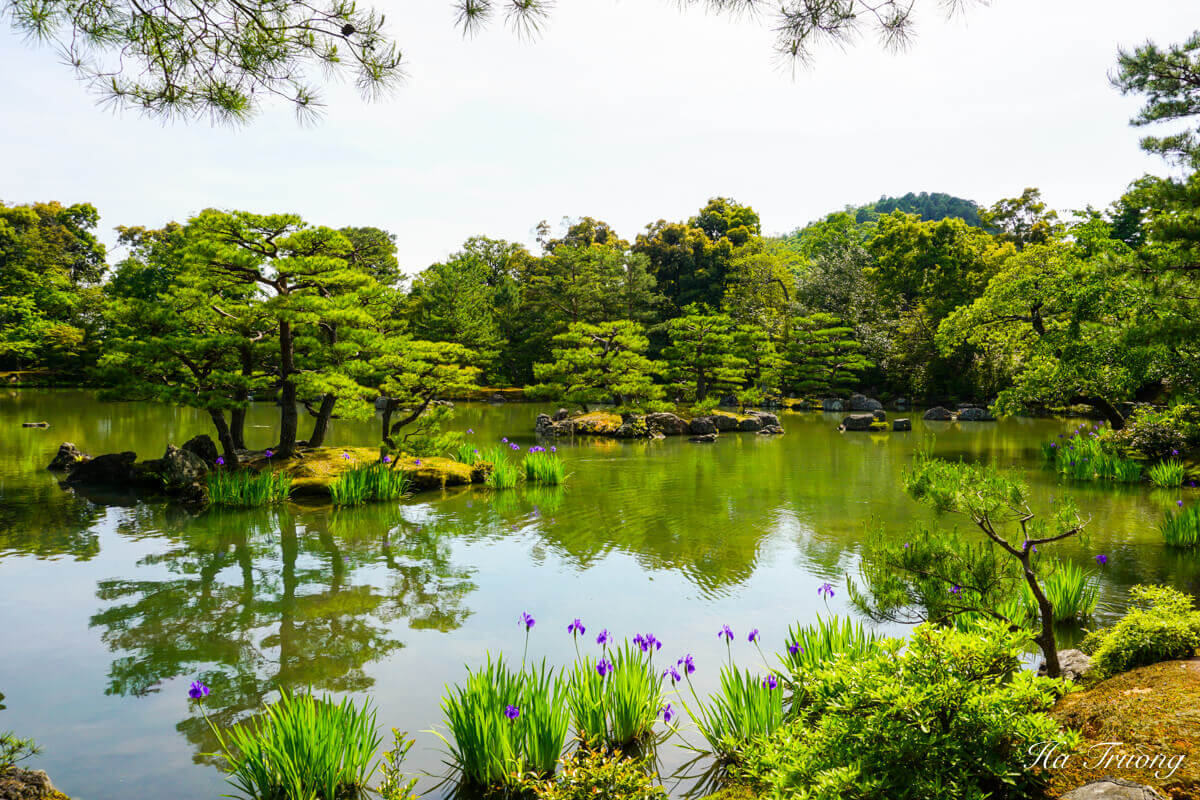
When is the best time to visit Japan?
Japan, the land of the rising sun, is famous for its beautiful natural scenery, ancient architectural works, and unique cultures…
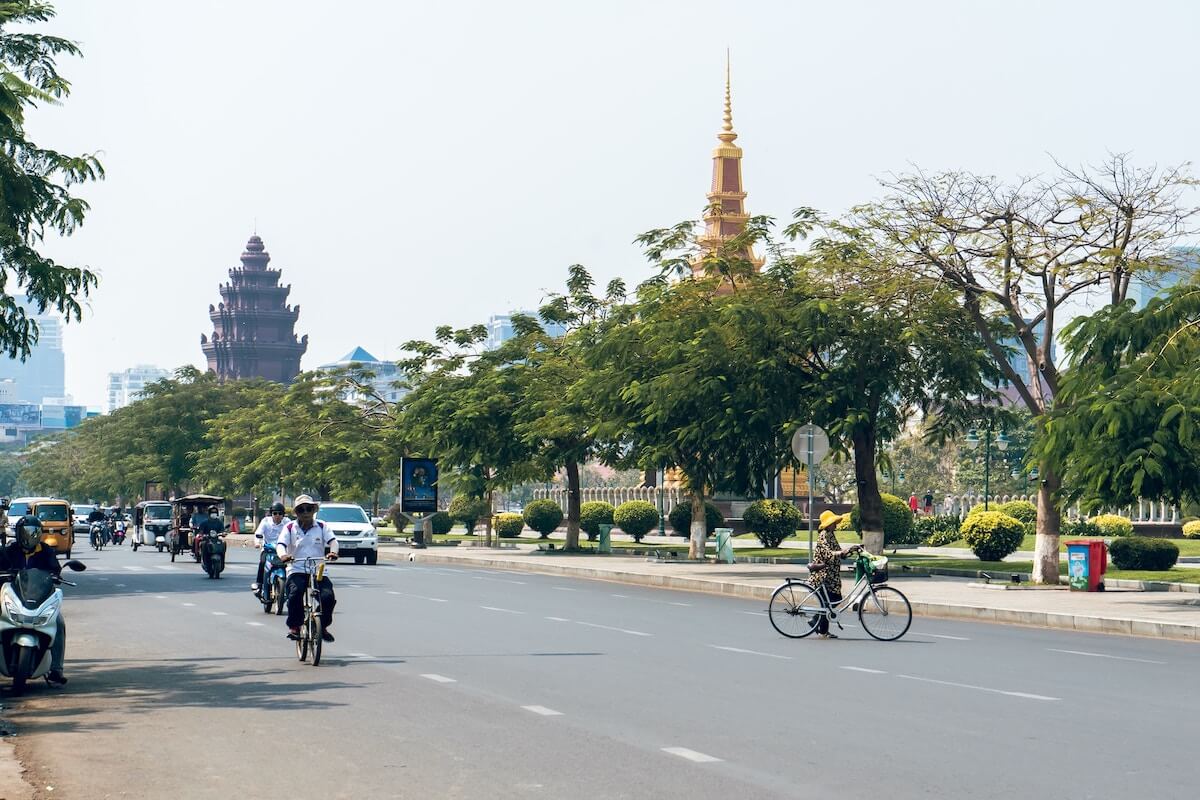
2 Days in Phnom Penh Itinerary: Essential Guide
Phnom Penh is a city that buzzes with energy, swaying between chaos and profound historical roots. I can almost hear…

Useful Korean Phrases and Words for Travelers
If you’re planning to visit South Korea, I highly recommend learning some basic Korean to make the most of your…
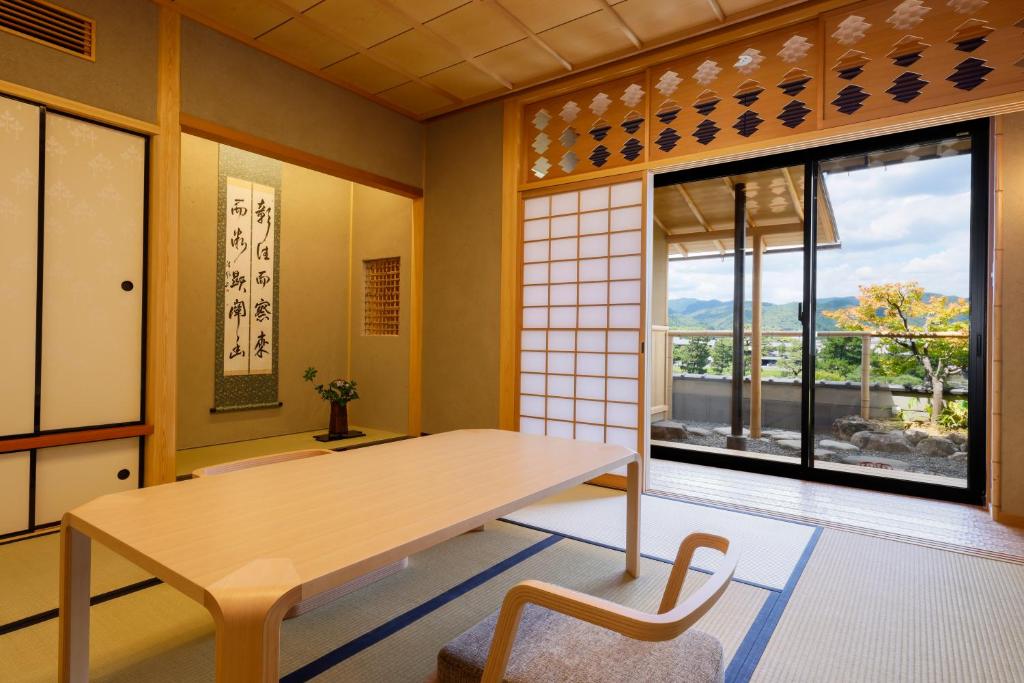
5 Best Ryokans in Arashiyama for Unforgettable Stay
Planning a trip to Kyoto‘s scenic Arashiyama district? Enjoy authentic Japanese culture and comfort by staying at one of these…
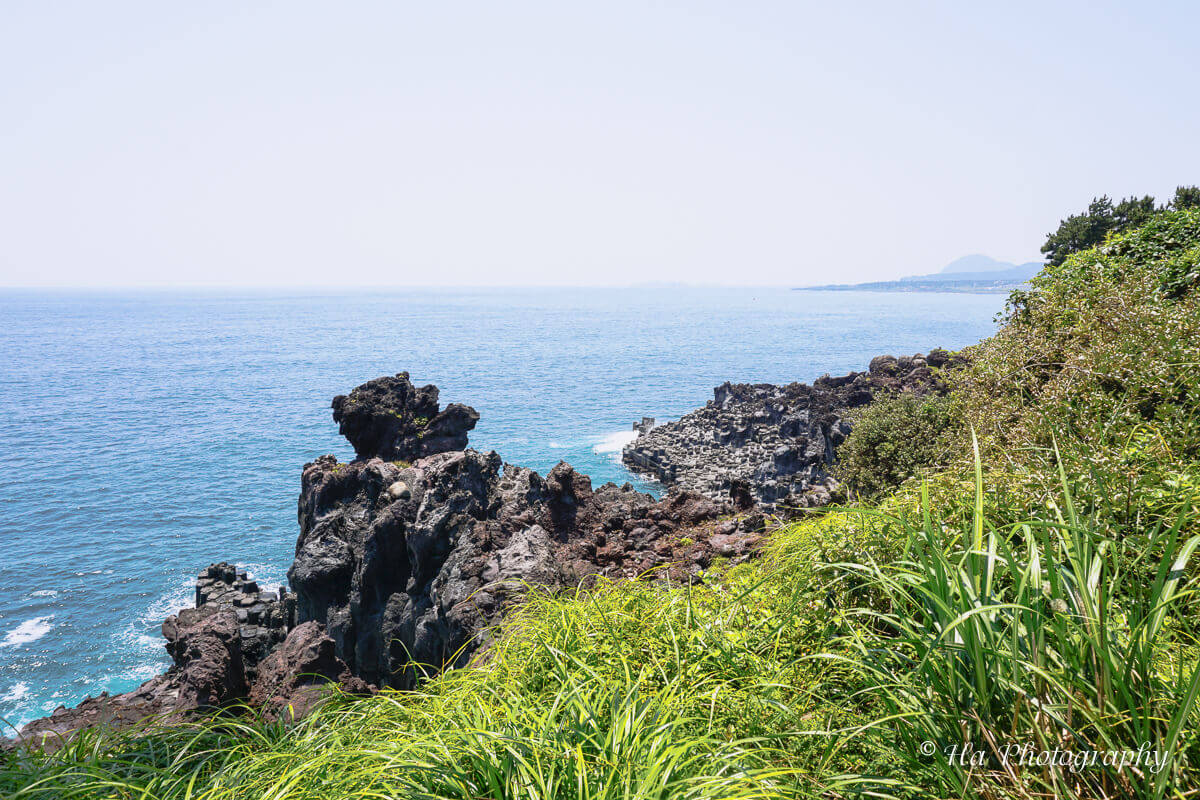
12 Reasons to Visit Jeju Island, Korea
Jeju Island – You might’ve seen it trending on travel blogs, or perhaps it’s a saved postcard on your Pinterest…

Colombo to Kandy Sri Lanka: Transport Guide
Home of the Temple of the Tooth Relic, Kandy is an excellent destination to visit after your trip to Colombo….
I have a friend that teaches in South Korea who is currently travelling around the country a little bit during her break, so I’m going to mention this to her because it looks incredible! Hadn’t heard of it before reading your post.
What unique hikes. Your guide is extremely helpful. I travel with young kids so it’s important for us to know exactly what we are getting ourselves into. Thanks for compiling so much useful information on hiking Jeju into one place!
You also have to register for the Gwaneumsa Trail! It was really disappointing because after registering at the support center at the beginning of the trail, they told us we can’t go up the mountain, we have to stop at the shelter. Because you have to latest at the shelter at 1 pm.
We are so disappointed and frustrated and hope you can also write the registration and latest arrival at the shelter on your website. You should be latest at the beginning between 10-10.30 am.
Hi Ha, thank for you blog post. I really appreciate it. Are toddlers/kids (1-2 years old) allowed in Mt. Tallasan, esp. in long trails such as Seongpanak and Gwaneumsa trails? And also on short trails such as Eoseungsaengak Trail? Thank you.
Hi Sydney, I’m not sure about traveling with toddlers for these trails. I recommend contacting the Jeju Tourist Information Center office for permission-related questions. Their office is Lobby, 23 Seondeok-ro, Jeju City.
Hi Ha, Thank you for sharing the comprehensive information in your post. I have made reservation for Seongpanak Trail however we cannot visit Jeju due to personal reasons. From my reservation or in the VisitHalla.. website, I cannot find the entry to cancel the reservation? Is it only available in Korean web page but not in forgein language page? Many thanks again.
Hi Fan, VisitHalla has the Language setting on the upright corner which you can choose English. I suggest contacting the site which you made a reserve, or you can also contact VisitJeju (Jeju tourism) – they have an online chat!
Leave a Reply Cancel reply
Your email address will not be published. Required fields are marked *

Hiking Hallasan in Jeju: A Guide to South Korea’s Tallest Mountain
Well, guys. It happened. After years of not hiking Hallasan (한라산), I’ve finally done it. I’ve hiked South Korea’s tallest mountain and not only did I hike it, I did two different trails going up to and down from the summit so I could give you all the most complete guide possible. Read below so you know what to expect and to learn more mistakes.
I’m not going to lie to you guys; I’ve been putting off hiking Hallasan for years. Since my first trip in 2016, I’ve been to Jeju like four times and just never set aside a day for one of Korea’s most famous mountains. Considering my most recent trip was my fifth visit, I gave myself plenty of time on the island, and one of my new year’s resolution was to do ten new hiking trails, I really had no choice but to buckle down and do it!
JEJU TRAVEL TIPS
- Getting in: Take it from me and just fly in. Flights are regular and easy and short. The boat takes 4 hours FROM Mokpo, which is like 4+ hours by bus from Seoul
- When to Visit: Jeju is pretty beautiful year round but it does get very hot and very crowded come summer. I personally love cherry blossom and canola season which is late March and early April. Late October and early November is also lovely for fall foliage.
- Where to Stay: This depends on if you have a car and what you want to do. I have a guide on where to stay in Jeju that breaks it down more thoroughly. My easy answer – stay in Seogwipo to be central. It’s more charming than Jeju City and close to a ton of attractions.
- Stay in Touch: Korea has eSIMs! Order ahead here.
- Where to Book Activities: Checking Klook or Trazy for the best deals.
- Getting Around: Rent a car! It gives you so much freedom to roam about. I found the best deal on Expedia via Hertz, but keep in mind Hertz is through Lotte, so when you arrive y ou’ll follow rental car signs for Lotte. There are no signs for Hertz! Regardless of what you do, download the Kakao T app for taxis and KakaoMap for navigation.
For a more tips, check out my Jeju travel guide.
Now, I’m just going to get it out before I get into this guide – this hike has to be one of my least favorite hikes in all of the mountains I’ve done in the world. Don’t get me wrong, Nui Dinh and Yen Tu in Vietnam are by far the worst by a large margin, but this was not a fun experience. Before I get into a more detailed guide, let me just do a section of tips for anyone who’s not going to bother reading the whole post.

Tips for Hiking Hallasan (Don’t Make My Mistakes)
1. don’t forget to make a reservation.
When hiking Hallasan summit trails, Gwaneumsa or Seongpak, you now have to make a reservation online at Visit Halla . It’s free and in English and immediate – just don’t forget! You literally need to hold the QR code up at a turn style thing to get in.
2. If you have anything below an okay fitness level, start by 6:30 AM.
There are two trails to the summit – Gwaneumsa (8.7km) and Seongpak (9.6km). They say it takes roughly 5 hours to hike up one of them, but it took me 7. If you don’t pass by one of the shelters by a certain time, they make you turn around, and you have to start descending by 2pm from the summit. I started hiking a little after 7am and literally had 10 minutest tops to enjoy reaching the crater and summit before I had to start going down.
3. The Gwaneumsa Trail is better if you don’t have the right gear
If you’re deciding to do one trail, do the Gwaneumsa trail. Sure the stairs suck, but Seongpak is mostly rocks and then some snowy/icy patches where I almost ate shit multiple times coming down. I’m traveling carry-on only, so I didn’t have room for my hiking boots or to even get poles, so I just had my running sneakers. You absolutely need poles to hike the Seongpak travel and the rocks started digging into my feet. The Gwaneumsa trail is mostly stairs, which is it’s own hell but more doable with normal shoes.
4. The crater isn’t that great
If you’re the kind of person (aka me) who hikes for the views and not necessarily because you enjoy the act of hiking, then honestly – don’t waste eleven hours hiking Hallasan to reach the summit. Maybe in the winter with all the snow it’s beautfiul and then in the summer when it’s all green and there’s more water in the lake… But the actual crater is fine and the views from the top are fine. The best view is on the Gwaneumsa trail when you reach the Samgakbong Shelter (삼각봉 대피소) and a little after that. Otherwise, you’re more or less among the trees so there’s nothing to really see until you reach the crater, and even then chances are it’s kinda cloudy so you won’t see much. It only took me 4 hours to reach Samgakbong, so the whole day would’ve probably been 6-7 hours instead of 11.
5. Double check your headphones are charged
Better yet, don’t forget your corded headphones when at home like I did. Because let me tell you, 11 hours of hiking Hallasan without being able to get mentally lost in an audiobook or music was hellish. My airpods didn’t charge the night before so I was left with nothing but my thoughts. I did try to play an audiobook when I was alone, but otherwise nada.
6. Bring enough food and drink.
There is absolutely NOWHERE on the mountain to get food, drink, or water. I don’t know why there are random “potable water” signs on the maps because there aren’t. Bring some of those hydration packets to put in your water so you stay hydrated. I finished my bigger water bottle by the time I got to the top and was increasingly thirstier as I descended.
7. Don’t forget allergy medicine and some tissues
At least in spring the yellow dust, fine dust, and normal allergies can really come out of nowhere. Before I left the US, I was totally fine, but as soon as I settled in Jeju, the sneezing started with vigor. It was brutal the first 2-3 hours of this hike and I literally resorted to sneezing in my hands and shaking them off to the side because I had nothing to blow my nose with. YES, I KNOW THINGS AREN’T ALWAYS GLAMOROUS HERE!
Anyway, learn from my absolutely nasty mistake and make sure to get tissues or a handkerchief before embarking on this hike. If you don’t have your own allergy medicine, my friend, Autumn recommended AllerShot from Korean pharmacies (they’re purple pills).
A Complete Guide to Hiking Hallasan
Okay with all that out of the way, here’s a more in depth guide to hiking Hallasan including a breakdown of all the possible trails and more details on the two I did. Enjoy!

About Hallasan
At 1,947, (6,388ft), Hallasan is South Korea’s tallest mountain and is considered one of its three main mountains with Jirisan and Seoraksan . (The tallest on the whole peninsula is Baekdusan, but that’s halfway in North Korea and China.) According to the information outside of the entrance of Gwaneumsa Trail, “Halla” means the mountain is “high enough to reach the Milky Way.”
The mountain itself is a shield volcano with its last eruption occurring in 1007 AD. If you look at a map, you can see how much of Jeju it takes up!
Other Names Hallasan is may be known by:
- Hanla Mountain
- Hanra Mountain
- Mount Halla
- Mount Auckland
- Hyeolmangbong
Myths & Legends about Hallasan
There are quite a few legends surrounding Hallsan; I’ll just share a few below if you’re interested.
Baengnokdam
The crater at the top of Hallasan is called Baengnokdam (백록담) which means white deer lake. According to legend, a Taoist hermit descended from the heavens on a white deer to drink the water here.
Because a hunter accidentally ripped off God’s belly button, he retaliated by ripping off the peak of Hallasan leaving the crater behind. He then formed Sangbangsan with the ripped off piece.
At one point it was believed Hallasan had special plants that granted immortality. China’s emperor, Qin Shi Huang at one point sent his men to come find the plant.
Trails for Hiking Hallasan that reach the summit
There are 7 total trails you can follow to enjoy Hallasan, but only two will go to the summit at Baengnokdam. I went up one and down the other, so I’ll go into detail on them below, but I’ll also add some information on the other trails if you want something less intense!

Gwaneumsa Trail
- Korean Name: 관음사 탐방로
- Length: 8.7km
- Elevation Gain: 1380m (4,528ft)
- Entrance: Here (If you can’t get it to come up on navigation, 관음사휴게소 or 064-721-8036)
- Getting There: If you’re not driving, use Bus 475 to get to Entrance to Gwaneumsa Temple Trail Stop (관음사 탐방로입구)
- Stay Nearby: There’s a campground right in the parking lot. Otherwise, the closest spots are Hotel Nanta or Ganeun-gil Pension . The closest major area is Jeju City, and if you want to be along Bus 475 route, stay near Jeju University.
- Need Reservation: Yes
Gwaneumsa Trail is considered the steepest trail when hiking Hallasan with a 1,380m elevation gain over 8.7km but also the most scenic. I’d say over half of it falls under the red zone and the amount of stairs had the front of my thighs sore for two days after. Most Koreans will actually hike up Seongpanak Trail and come down Gwaneumsa, and honestly I can’t figure out if it would be better or worse to go down all those stairs.
Either way, looking back I’d choose to descend Gwaneumsa regardless. Descending Seongpanak was horrible and it turns out going down stairs is better than rocks that are sometimes covered in icy snow!
But I’m getting ahead of myself, here’s exactly what it was like going up Gwaneumsa is like.

ENTRANCE & BEGINNING (570m)
*I started a little after 7:00 AM*
Located below Jeju City, I’d say there’s more parking available at the entrance to Gwaneumsa vs. Seongpanak, but who knows how crowded things get in the summer! Once you pull in and park, there will be some toilets to use and then the entrance to the trail. This is where you’ll need to pull out your e-mailed reservation and show the QR Code. Chances are some ahjummas will be there to do it for you to keep things moving.
If you want to delay the inevitable, there’s also a few boards with information on Hallasan and Gwaneumsa trail to read. Also for those wondering, the trailhead starts at 570 meters above sea level. Only 1,380 meters to ascend!

3.1 KM OF MODERATE TRAIL
The first 3.1km trail is moderate (NOT easy despite the green color) and starts picking up pretty quickly. It’s all in the woods, and the above trails are more or less what you can expect to see. There’s not a ton to see except maybe a cave on the side and all the backsides of the hikers passing you by. Not bad but I worked up a sweat by the time I got to my first resting point.

TAMNA VALLEY BRIDGE (탐라계곡 목교)
The first point on the trail map is Tamna Valley Bridge (Tamnagyegok Mokgyo), but the bridge comes a bit later in the valley (gyegok) portion of “Tamnagyegok.” There is a platform to sit and rest for a moment, so I took the opportunity to eat some kimbap and drink some water. Nothing like tuna kimchi triangle kimbap when you’re hiking mmmm.

Before you get to the bathroom stop, you’ll walk down a steep set of stairs… to walk back up another set of steep stairs. Yes, it does indeed suck but honestly things get worse later, so I kind of forgot about this part until now. This is your view of Tamna Valley!

A little after this platform, you’ll get to a bigger rest stop with one of two restrooms on this trail. If you’re the type who has to pee so suddenly you can’t hold it, make sure you go because the next one won’t be for a few hours! There is also this stair section if you want to sit and rest here instead of back at the platform.

~3 KM DIFFICULT TRAIL (Gaemideung)
If you weren’t tired before, you’re about to be tired – yay! The next portion of trail is considered difficult and you’ll ascend about 525m over 3km. The estimated time is 2 hours and 20 minutes, so do with that information what you will. There’s a point in the middle of this section that says “Gaemideung (개미등)” which translates to an ant’s back, but I don’t remember seeing anything notable.
I just remember there were a lot of stairs and rocky paths. Honestly, I turned my brain off a bit to get through this part.

SAMGAKBONG SHELTER (1500m)
*** I got here around 11:00 AM ***
The absolute best part of this whole hike was reaching Samgakbong Shelter (삼각봉 대피소). It’s a circular building with a bathroom, and it’s where most people take their lunch break before finishing the trail. It took me roughly 4 hours to get here, and I foolishly thought it meant I was fairly close to the peak because it’s 6km in and I had only 2.7km to go. Delusional.
Frankly speaking, this section and the easy section after are the most beautiful part of this whole hike especially in late spring. I think the peak and crater are probably prettier in winter with all the snow or in summer when it’s green and the lake is fuller, but in April, it’s just kind of mustard beige and honestly, I’d rather turn around and have the rest of my day than spend 3 hours going 2.7km and then 4 hours balancing on rocks going back down.
Anyway….

The times change depending on the season, but you HAVE to get to Samgakbong Shelter by 12:30 PM or else they won’t let you go further. You literally have to go through a turn style to keep going, so there’s no way to circumvent this. Koreans don’t mess around with mountain safety!

EASY SECTION
This section was my favorite section and not just because it was easy. You’re kind of in what feels like a valley and it’s just so stunning. Cross over Yongjingak Hyunsu Bridge (용진각 연수교) and just enjoy the views. Honestly could’ve posted even more photos, every corner is so pretty!

SHARP INCLINE/REST
Hope you enjoyed your brief reprieve because it’s all stairs and sharp incline from here! I think it’s this point that I would take a break on every irregular stair and if that was too far away, I’d count to ten and then rest. I will say at the very least, you’re not really in the woods anymore, so you get constant views of the valley and some peaks out to Jeju. There are two rest stops I can think of but nothing like Samgakbong Shelter. This one had a particularly stunning view of to the valley below:

And then this one was also pretty stunning:

I think right before I got here some very nice ahjumma told me I was close and I thought that meant this was the peak. It was not and I died a little. I feel like maybe those snowy paths are waterfalls in the summer because there are supposed to be some waterfalls on this trail, but I’m not sure.

Really, though, these last 2.7km of hiking Hallasan were just stairs upon stairs upon stairs. At least they were wooden stairs free of snow instead of rocks! But yeah, I was struggling and my thighs were screaming. I was poppin’ my energy gummies pretty regularly for a burst of energy.

BAENGNODAKDAM (1950m)
*I got here around 2:00 PM*
Finally finally you reach a flatter section and go around an outcrop and are treated with the peak! Yay! By the time I got there at 2:00 PM, it was pretty cloudy and it does get quite chilly and windy up there. Some people had sweatshirts and jackets on.
Behold the famous crater and crater lake:

I mean, if you’re impressed, good for you! I wasn’t super impressed but I guess summer it looks a lot more interesting. Either way, I only had about 5 minutes to admire it because everyone has to start descending at 2:00 PM, so there was an ahjussi up there to say “Time Over.” I didn’t even have time to enjoy my celebratory chocolate bar!
Anyway that’s the Gwaneumsa Trail! You can choose to go back down the same trail or go down Seongpanak Trail. I went down Seongpanak solely so I could compare the two, and I can tell you going down this trail is a terrible, terrible idea. But I’ll get into that in the next section.

Seongpanak Trail
- Korean Name: 성판악 탐방로
- Length: 9.6km
- Elevation Gain: 1200m (3,973ft)
- Entrance: Here (064-725-9950 for navigation)
- Getting There: If you’re not driving, use Buses 281 or 181.
- Stay Nearby: The closest areas are Starry Forest , Yolowa Pension , and Pampas Pension . Both buses above leave from Jeju City and Seogwipo bus terminals, so you can also stay near them to be on the bus route.
The Seongpanak Trail is supposed to be a more gradual incline than Gwaneumsa but it’s also a 1km longer and a LOT rockier. Like way, way rockier and I felt like I was constantly wishing I had just gone down a bunch of wooden stairs than precariously balance in running sneakers. While I think you can do Gwaneumsa pretty easily with just regular sneakers, you 100% want hiking poles and sturdied hiking shoes for Seongpanak!
Anyway, I’m going to write this as though you’re going from the entrance to the top to make things easier.
ENTRANCE & BEGINNING
The entrance to Seongpanak Trail is more towards the Northeast or Central East coast and about a 10-15 minute drive to Gwaneumsa. (At least a taxi will cost you around 15,000 KRW). There’s a sort of museum and visitor center but otherwise parking seemed a lot more limited, and they specifically ask you to take public transportation or a taxi if you start from here.

~5 KM EASY SECTION
The nice thing about the Seongpanak trail is that the first 5km is fairly easy and the incline is very gradual. The path looks like the above for the most part – rocks and some boards for stairs. I was able to go down this section pretty quick in my exhaustion, so I have a feeling going up would be pretty pleasant!
Also if you’re luck you might just see a cute deer or two.
SOKBAT SHELTER
The first big break is Sokbat Shelter (속밭대피소). There’s some easy section after and then starts a really steepest section, so be sure to go to the bathroom and get some food before continuing!

DIFFICULT SECTION
The difficult section lasts for about 3.3km and by the time you’re done you’ll be at 1500m high. The map estimates this will take around 1 hour 40 minutes, and it pretty much looks like the above with stairs.
About 1.7km in, you’ll also get to the entrance to Sara Oreum (사라 오름), which leads to a lake and will add an extra 1km onto your hike.
Now, while the stairs are steep and there I thought it was a break compared to the green part to come later. The stairs have regular handles to hold onto and were more or less clear.

JINDALLAEBAT SHELTER (1500m)
At 1500m is the major shelter – Jindallaebat Shelter (진달래밭 대픽소) and if you go in the right season, it’ll be surrounded by pretty purple azaleas but I was still too early. I imagine May would be a good month for them to be in bloom?
This is also your last chance to go to the bathroom until your descent!

2.3 KM “MODERATE” TRAIL
The rest of the trail promises to be moderate and should take about 90 minutes to get to the peak. Honestly, this felt like a cruel joke. This was easily the hardest section because most of the trail looked like above or below:
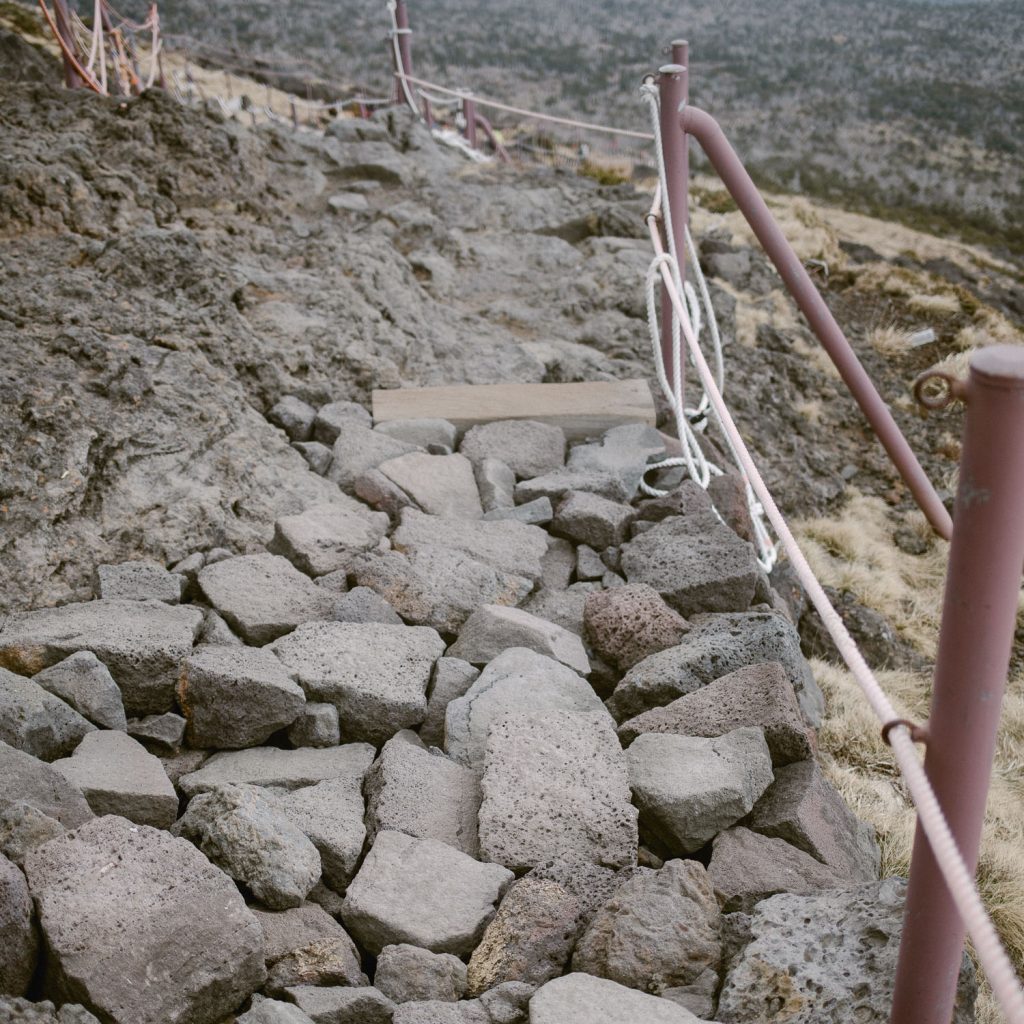
There were small sections just completely covered in icy snow, and the handles were either super low or nonexistent, so if I didn’t have a really nice ahjussi to help me, I would’ve literally sat on my ass and slid down.
This section alone is why you need poles when hiking Hallasan! I’m sure it would’ve made all the different in my experience if I had poles to help balance and my actual hiking shoes. Oh well, you live and you learn and you write a blog post so others can learn from your mistakes.

And finally the peak! Woohoo! If you hiked up Seongpanak, I highly recommend going down Gwaneumsa solely because the view around Samgokbong Shelter is so beautiful, and the paths are nicer. Also, there are a lot more maps to let you know where you are along Gwaneumsa! They were nonexistent on Seongpanak after the first 5km.
Other Trails for Hiking Hallasan
So while Gwaneumsa and Seongpanak are the two trails that will take you to the summit, there are still other trails for hikking Hallasan and might be a little easier. Sometimes they can connect and take you to the crater, but from my research, these paths have been restricted for years, so don’t count on them being open by the time you go.
Obviously, since I didn’t hike them I have no firsthand experience, but here’s some quick info in case you want to try any of them out.

Donnaeko Trail
- Korean Name: 돈내코 탐방로
- Length: 7km
- Elevation Gain: 1,150m (3,772ft)
- Entrance: Near this parking lot
- Getting There: Use Bus 611
- Stay Nearby: Entrance to the east of Seogwipo
- Need Reservation: No
It looks like there’s some swimming in Donnaeko Valley fairly close to the trail entrance – nice way to end things if you’re hiking Hallasan in the summer!

Yeongsil Trail
- Korean Name: 영실 탐방로
- Length: 5.8km
- Elevation Gain: 420m (1,377ft)
- Entrance: Here (Parking Lot Here and towards Seogwipo)
- Getting There: Use Bus 240 – Note it’s still quite a ways away from trail entrance, so if you’re not driving, you might be better off getting a taxi.
Yeongsil and Donnaeko trails connect at the Nambyeok Junction if you want to do two trails.

Eorimok Trail
- Korean Name: 어리목 탐방로
- Length: 6.8km
- Elevation Gain: 630m (2,067ft)
- Entrance: Here (towards Jeju City)
- Getting There: Use Bus 240, but still have a ways to walk to get to entrance
Eorimok also ends at Nambyuk Junction, so you can take Donnaeko or Yeongsil down for something different.

Eoseungsaengak Trail
- Korean Name: 어승생악 탐방로
- Length: 1.3km
- Elevation Gain: 200m (656ft)
- Entrance: Same as Eorimok here
- Getting There: Use Bus 240 but still a ways away
This is the shortest and easiest trail for hiking Hallasan! Should take maybe 30 minutes all in all and might be a good one to end on to the end of Eorimok.

Seokguram Trail
- Korean Name: 석굴암 탐방로
- Length: 1.5km
- Elevation Gain: ~200m (656ft)
- Entrance: Here (Unsure of parking though)
- Getting There: Bus 240
This is another super short trail in Hallasan. It’s somewhere near Jeju City as well.

Post-Hike Options
I was too exhausted to eat anything real right after I finished. By the time I took a taxi to back to Gwaneumsa parking lot, stopped at a 7/11 to chug gatorade, cider, and chocolate milk, and then drove about 30 minutes back to my apartment, it was around 8:30 PM. I showered and literally climbed into bed and passed out. At one point I realized I hadn’t brushed my hair and couldn’t find my lotion, so I just slept with knotted hair and dry skin lol.
If you’re NOT as tired as I was, I highly recommend seeking out some delicious Korean BBQ to refuel, maybe even a black pork bbq spot. I really liked Jeju Ko for their seasoned kalbi option! In Jeju City, there’s the black pork street (흑돼지거리 ) though I haven’t been. I did like Jerahan Bossam if you want to try bossam (pork shoulder).
What Else to Do in Jeju
There’s honestly SO many cool things to do in Jeju, it’s hard to keep count. If you, like me, are hurting a bit after your day of hiking Hallasan, I’d take it easy and do some cafe hopping and maybe some easy sightseeing to the coastal beaches. There are hot springs in the Southwest around Sangbangsan but I didn’t bring a swimsuit to see if they’re worth it! You can also search for jimjilbangs near where you’re staying – they’re Korean bathhouses. Honestly, I thought about it because sitting in a hot tub sounded heavenly .
And there you have it – a complete guide to hiking Hallasan including tips so you learn from my mistake and a quick guide to every potential trail you could take! If you have any questions or anything to add, comment below – I see those before I see anything else!
For more hiking guides in Korea:
- A Hiking Guide to Odaesan National Park
- A Guide to Hiking Gyeryongsan
- Hiking Between Two Mountain Temples in Jogyesan
- Hiking Wolchulsan to Cross One of Korea’s Must See Bridges
- Hiking Daedunsan in the Fog
- How to Hike Guryong Valley in Jirisan
- Jirisan’s Baemsagol Valley Course
- Hike Seoraksan, One of Korea’s Tallest Mountains
SHARE THIS ON PINTEREST

want to support?
I’m always grateful when friends and readereach out wanting to support There She Goes Again . Truthfully, I’m just happy my posts are helping people travel! If you’d like to support the blog, here are some companies and brands I’m affiliated with. Simply click the links, and I receive a small commission at no extra cost to you!
- Booking (Hotels)
- Sixt (Car Rental)
- Klook (Tours)
- Viator (Tours)
- Get Your Guide (Tours)
- Trazy (Korea Tours)
- Tiqets (Entrance Tickets)
BLOGGING / SOCIAL MEDIA
- WPX Hosting (Advanced)
- Bluehost (Beginners)
- Lezé the Label (Clothing)
- Printfresh (Pajamas, etc)
- Promptly Journals
- Encircled (Clothing)
- Girlfriend Collective (Athleisure)
- Birkenstock (Sandals)
- Bookshop (For Local)
- Amazon Books
rather get a monthly update in your inbox? subscribe below!
You have Successfully Subscribed!
Leave a reply cancel reply.
Your email address will not be published. Required fields are marked *
This site uses Akismet to reduce spam. Learn how your comment data is processed .

A Complete Guide to Hiking Mt. Hallasan – the Highest Peak in South Korea!
Are you looking for a little challenge on your next trip to Jeju Island and wondering whether hiking Mt. Hallasan is for you? Or are you already determined to do so and now you are simply looking for the details you need to start planning?
No matter where you are, in this guide to hiking Mt. Hallasan, we will be covering it all. We hiked to the peak of Mt. Hallasan as part of our Jeju Island trip in June. And, to be honest this hike ended up being one of our Jeju Island highlights!
In this guide we give you the information you need to plan a successful hike up to the summit of Mt. Hallasan. We will answer the questions of how to get to the trail head , what to pack , how fit you should be and where to get your permit to access the hike among other things.
We also share our own experience hiking the Gwaneumsa Trail as well as some things we learned along the way that might be helpful to you!
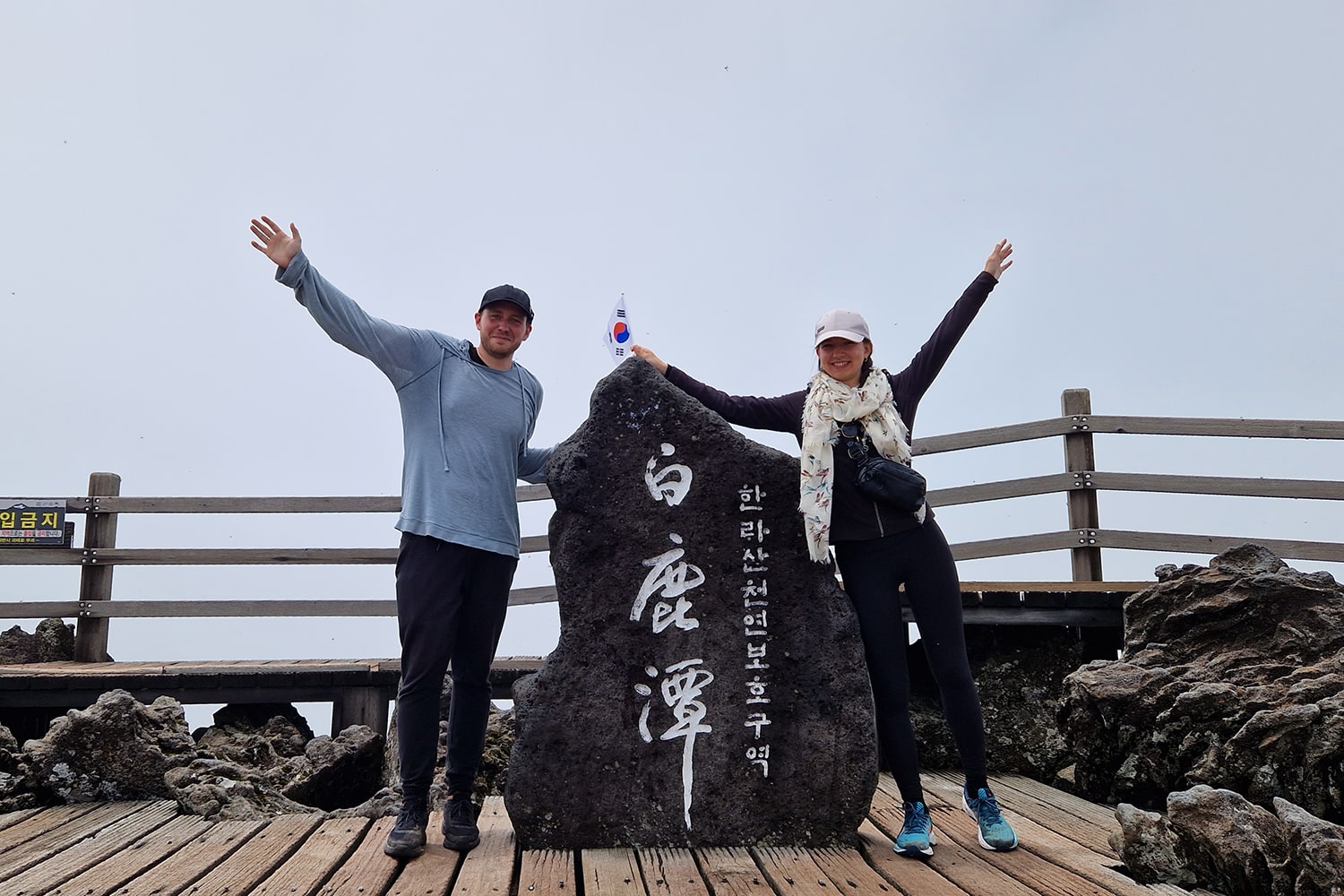
Note: We use affiliate links in this post. They are marked by an *, so you can recognize them in advance. By interacting with these links, you can support us and our website at no extra cost to you! For more information, read our Disclaimer .
Table of Contents
Complete Guide to Hiking Mt. Hallasan
Mt. Hallasan is actually a volcano , located on the South Korean island of Jeju. But, don’t worry, Hallasan used to be an active volcano until about 5.000 years ago, nowadays it is classified as ‘dormant’.
With its 1950 meters of height , it is the highest peak in all of South Korea. This makes it a perfect site for everyone that seeks a little challenge while traveling around Jeju.
Since this guide is aimed at people who wish to reach the summit of Mt. Hallasan , we will only be looking at Gwaneumsa as well as Seongpanak Trail . The latter are probably the most strenuous, but at the same time the only hiking trails within Hallasan National Park that actually go up to the summit of Mt. Hallasan.

Is it hard to hike Mt. Hallasan? How fit should you be?
Let’s first tackle this question for all of those that are not yet sure if hiking Mt. Hallasan is something they can achieve. There is of course no universal way to measure whether you are fit enough to do this hike or not. But, there are a few things you can consider when thinking about it.
Compared to hiking Mt. Fuji for instance, hiking Mt. Hallasan was easier, since the component of altitude sickness just was not a thing . Typically altitude sickness starts occurring at elevations of more than 2.500 meters. The peak of Mt. Hallasan is located well below that elevation, so no problems there.
Nonetheless, hiking Mt. Hallasan is definitely a challenge. From a fitness point of view , you should have enough endurance to be able to at least walk between 15-20 kilometers a day without too much trouble. And then, factor in the elevation gain that will come on top of that.
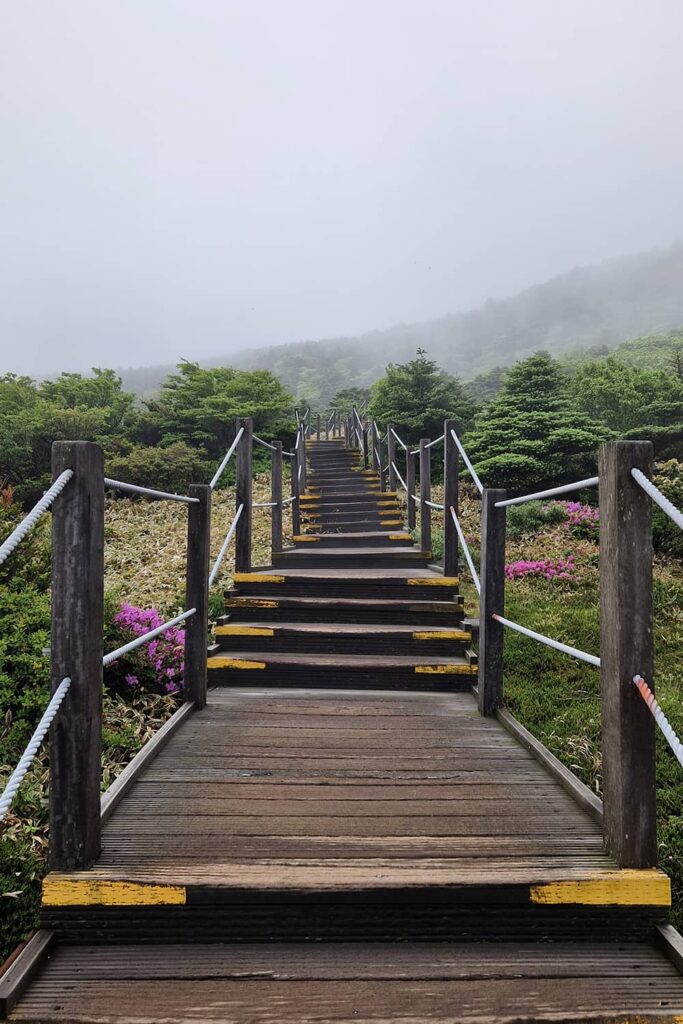
If you read this and think, ‘Well I can do that!’, then you are probably good to go. By no means do you need to be a mountaineer to hike Mt. Hallasan.
If you are thinking, ‘Maybe I need a bit more training…’, start by taking the stairs more often instead of the elevator. Because, for instance Gwaneumsa Trail mostly consists of stairs so that will make it easier for you. Also try to get your steps in everyday for a while before the hike!
How long does it take to hike Mt. Hallasan?
Hiking to the summit of Mt. Hallasan is something that is done in one day , meaning you will get to the summit of Mt. Hallasan and back down on the same day. Typically the hike will take between 7-10 hours , depending on the trail as well as your fitness.
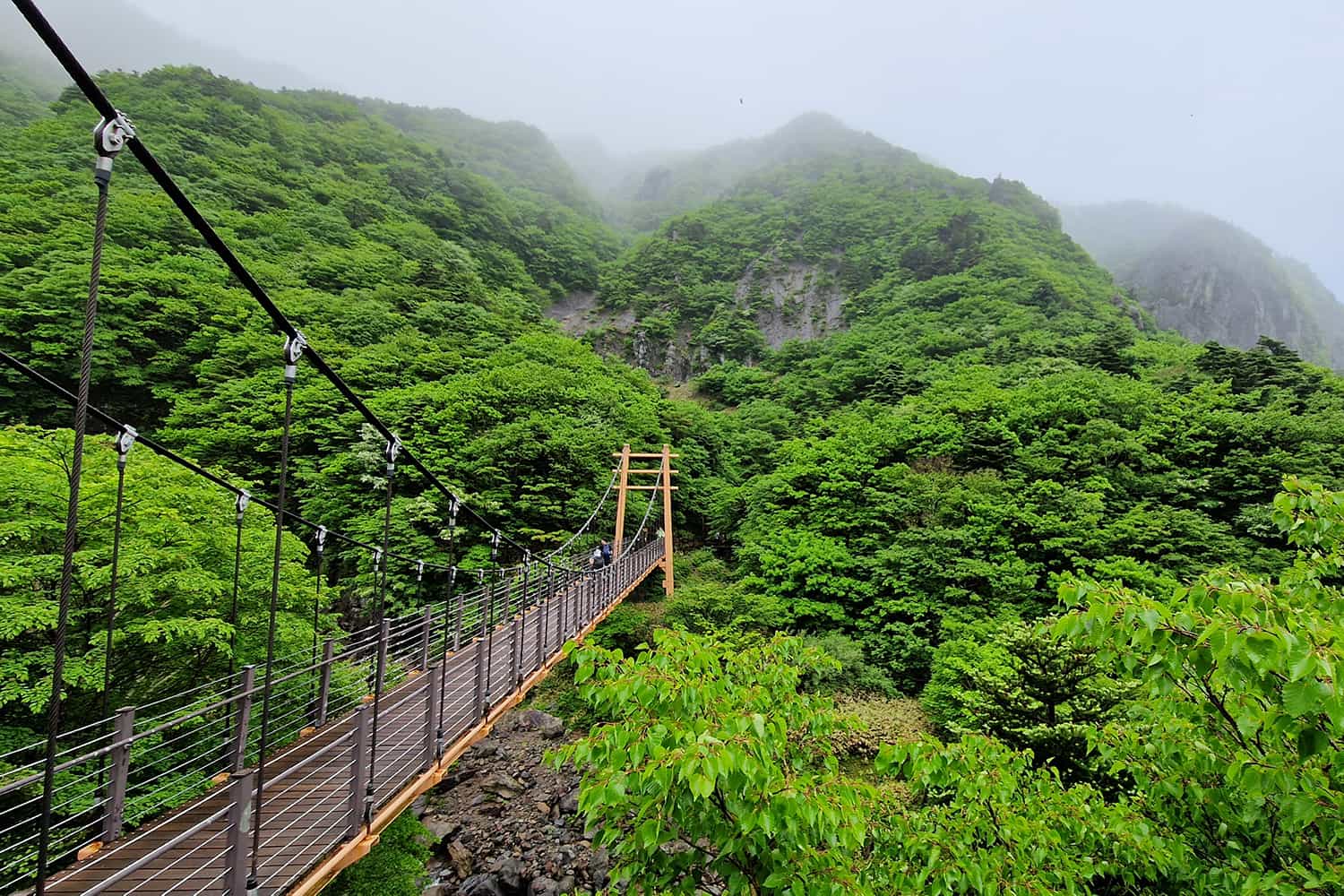
The Trails: Gwaneumsa vs. Seongpanak Trail
Now that you are determined to hike to the summit of Mt. Hallasan, the next question you need too answer is: Which trail are you going to take? Gwaneumsa Trail or Seongpanak Trail? Or both? We’ll get to the latter in a second. But first let’s look at both of them individually.
Gwaneumsa Trail
- Distance: 8.7 kilometers (one-way)
- Elevation Gain: 1.330 meters
- Difficulty: hard
- Need a Reservation?: Yes
PRO: The general consent is that Gwaneumsa Trail is way more scenic . And in terms of distance, it is a little shorter as well.
CON: However, it is steeper and therefore harder than its counterpart. Also Gwaneumsa Trail is harder to reach on public transport , but more on that later.
Seongpanak Trail
- Distance: 9.6 kilometers (one-way)
- Elevation Gain: 1.200 meters
PRO: Seongpanak Trail is gentler in terms of elevation gain and therefore a little easier . It is also more accessible by public transport.
CON: When looking at the distance, it is a little bit longer . And, in general, it is considered to be the less scenic one among the two hikes.
So, which one do you choose?
If you absolutely cannot decide which one to take you should know the following. Both trails meet at the top of Mt. Hallasan. This means that you can take one of them to get to the top and the other one to get back down .
We chose to hike Gwaneumsa Trail (both ways), because the part about it being more scenic was more important to us than the fact that it is a little harder. We absolutely do not regret having chosen Gwaneumsa Trail to get to the top.
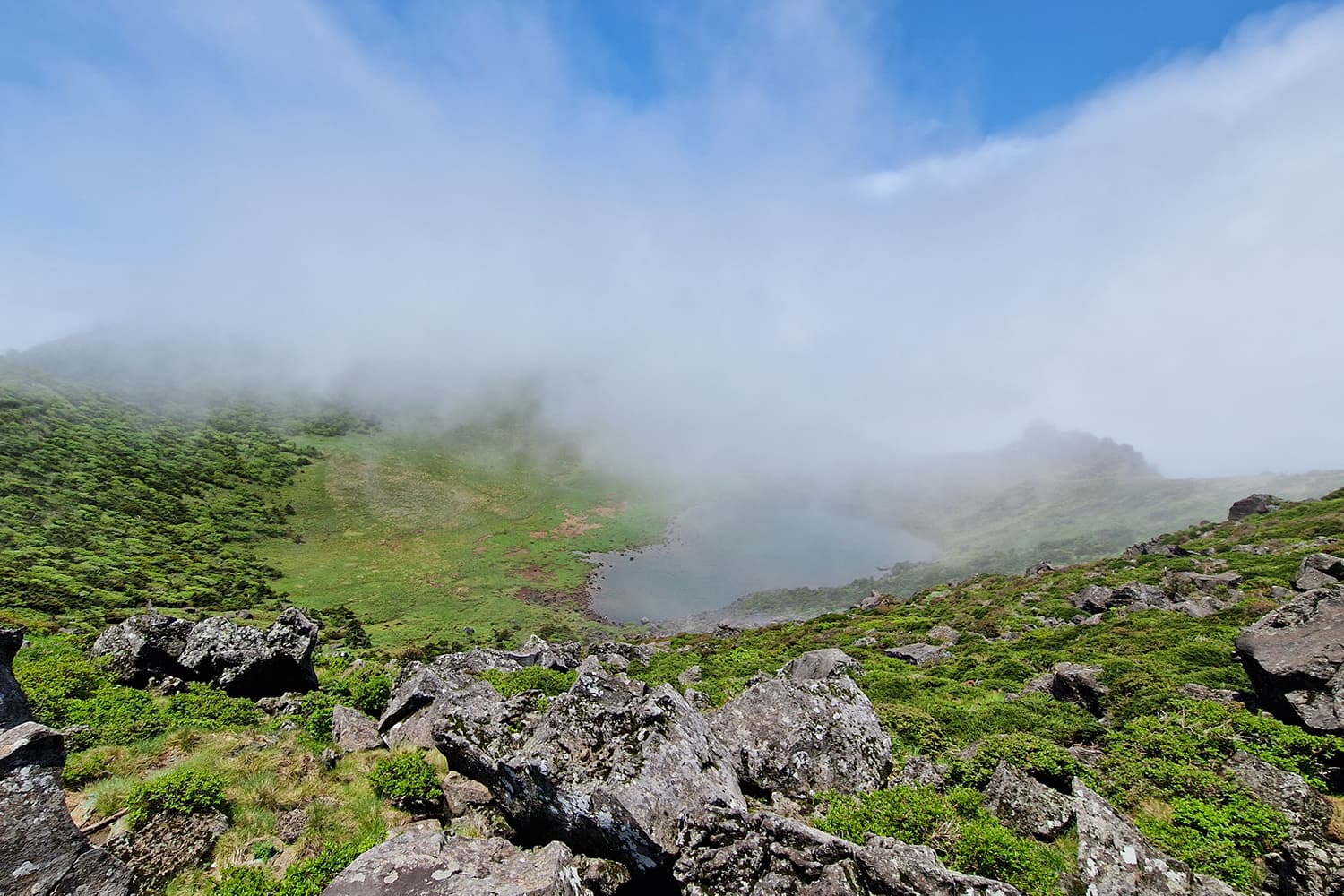
What we might have done differently though, if we were to do it all over again, is taking Seongpanak Trail to get back down. One, because that way we would have done both of them. Two, Gwaneumsa Trail was gnarly on the way down and not very gentle on the knees either. Sounds like we are 100 years old but trust me, try walking down that many uneven stairs and your knees will start to talk to you!
Where to stay before hiking Mt. Hallasan
The best place to stay the night before hiking Mt. Hallasan actually depends quite a bit on which hike you end up choosing and whether you plan to get there by car or by bus.
Where to stay before hiking Gwaneumsa Trail
If you plan on hiking Gwaneumsa Trail, we would suggest staying in or near Jeju-City. The trail entrance is located on the north side of Mt. Hallasan National Park, which is why Jeju-City is closer .
If you plan on taking the bus to get to the trail head, look for hotels that are located close to a bus stop of one of the bus lines (see next section) you need to take to get there. If you plan on getting there by car, any hotel with a parking lot in the area will do;).
Where to stay before hiking Seongpanak Trail
Since the Seongpanak trail entrance is located to the east of Mt. Hallasan, it can actually quite easily be reached from either Jeju-City or Seogwipo .
Same as before, if you plan on taking the bus to get to the trail entrance of Seongpanak Trail, stay close to a bus stop of one of the busses you will need to take to get there (find out which one those are in the next section). If you plan on getting there by car, any hotel with a parking lot will do.
How to get to Mt. Hallasan?
In this section we will now go over the different possibilities you have to get to the starting point of Gwaneumsa as well as Seongpanak Trail.
How to get to Gwaneumsa Trail?
The starting point of Gwaneumsa Trail is located next to the Gwaneumsa Information Center (Address: 588 Sallokbuk-ro, Jeju-si, Jeju-do, South Korea). And there is a bus stop located right in front (called: 관음사탐방로입구 ).
One way to get there from Jeju City is by first taking one of the following busses: 232, 281, 212 or 222. And then, change at the bus stop 사회복지법인 춘강 / ‘Choonkang Social Welfare Incorporated’ on to the bus 475, until you reach your destination.
Depending on where you stay within the city, the first bus you will have to take might change. But ultimately you will need to take the bus 475 , since it is the only one that can get you to the Gwaneumsa trail head . The whole process of getting there should take about 45 minutes when choosing a good connection.
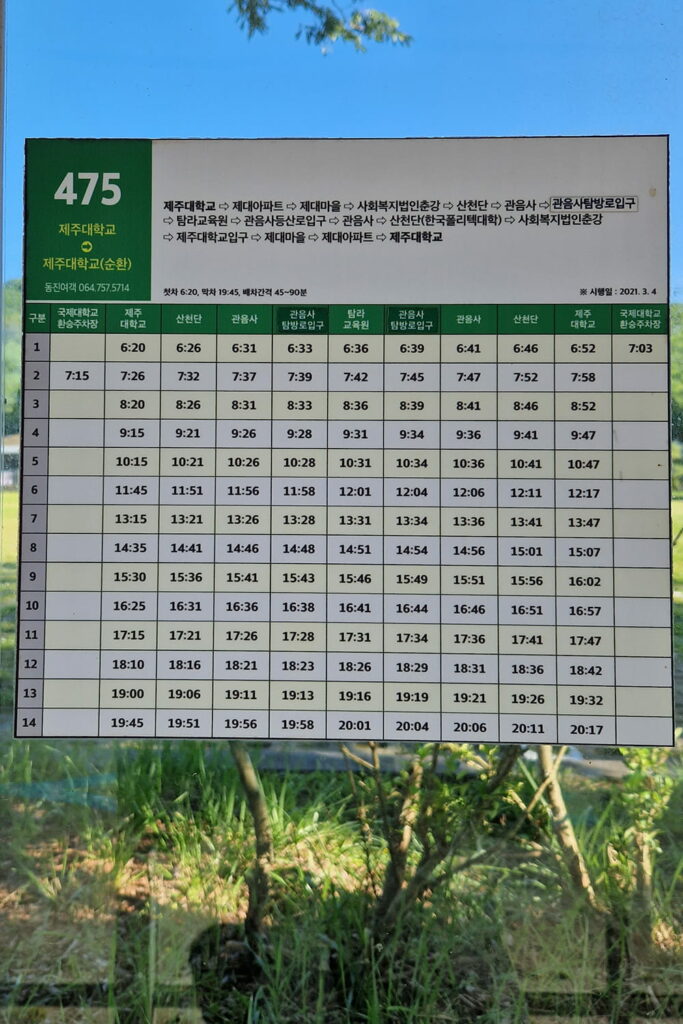
Unfortunately the bus 475 only runs about once per hour , so make sure to plan your exact trip the day before, in order to not loose precious time on the day of your hike!
The best way to find out how to get there exactly from your location is through Naver Map ! Type ‘Gwaneumsa’ and then scroll a little left until you see an icon with ‘Gwaneumsa Temple District Camp Site’. Mark the latter as the place you wish to go ‘To’. ‘From’ will be your current location.
We actually would not recommend hiking Gwaneumsa Trail from Seogwipo . However, if you insist on doing so, to get there you will need to take the bus 232, 281 or 182 (Express Bus) towards Jeju-City and then switch to the bus 475. This route will take anywhere between 1-2 hours depending on the bus connection.
For those that rent a car on Jeju Island and wish to get to the starting point of the hike by rental car, which is actually more advisable if you wish to be more flexible, there is a huge parking lot right in front of the Gwaneumsa Information Center.
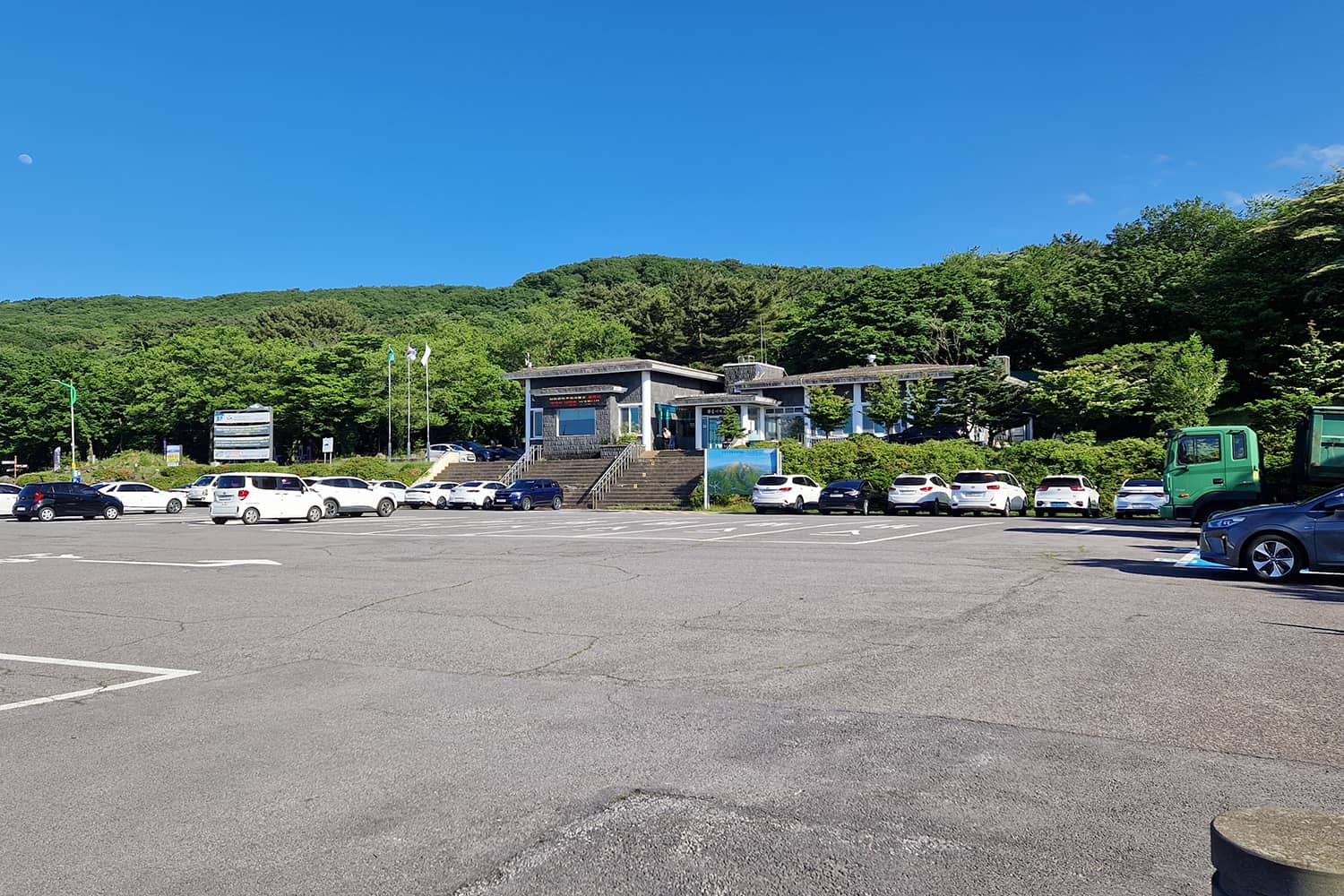
How to get to Seongpanak Trail?
The starting point of Seongpanak Trail is located on the Seongpanak Service area. There is a visitor information center as well as a parking lot located here as well. Getting to the starting point of Seongpanak Trail is easier, since the latter is frequented by several busses.
The best way to find out how to get there exactly from your location is through Naver Map ! Type ‘SeongpanakRestArea’ and mark the latter as the place you wish to go ‘To’. ‘From’ will be your current location.
To get to Seongpanak Trail from Seogwipo , take either the bus 281 or 182 (Express Bus) towards Jeju City. The bus ride will take about 30 minutes and your bus stop is located just in front of Seongpanak Rest Area.
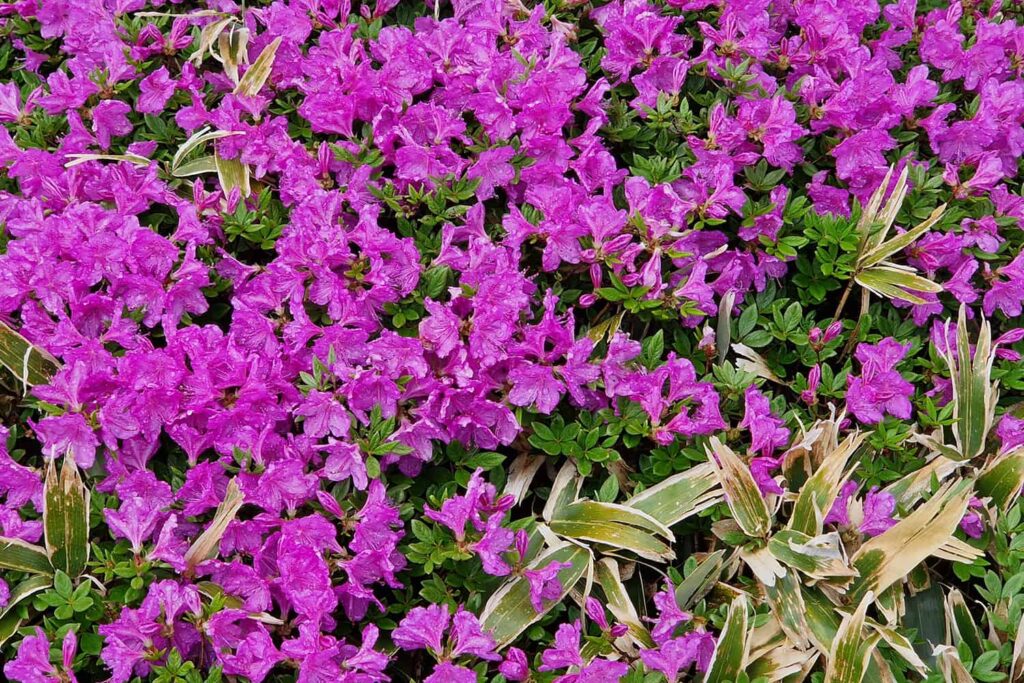
To get there from Jeju City is pretty similar. Take either the bus 281 or 181 (Express Bus) towards Seogwipo, then exit the bus at Seongpanak Rest Area. From Jeju City, the bus ride will take about 30 minutes as well.
Good to know: If you plan on hiking let’s say Seongpanak Trail on your way up and Gwaneumsa on your way down, you can get a taxi from the starting point of one trail to the starting point of the other to get back to your car after your hike. We saw quite a few people do this and there were taxis waiting at the bottom as well.
How to prepare for hiking Mt. Hallasan
Apart from going on long walks and taking a few more stairs then usual, there are a few other things you should prepare before embarking on your hike up Mt. Hallasan!
Where and when should you get your permit?
First of all, you need to make a reservation in order to be able to access both the Gwaneumsa as well as the Seongpanak Trail. But, where can you get it and how long in advance should you do so?
Where do you make a reservation to access Mt. Hallasan?
Let’s first tackle the where question. The process is actually really easy and also free of charge .
All you have to do is head to the official Hallasan visitor website and select the trail you wish to do. Select the one you will take to get to the top since they check the permit in the morning at the trail entrance.
Choose a date and indicate the number of people in your travel party (up to 4). If you travel as a couple for instance, only one of you has to make a reservation. Simply indicate that there will be two coming on the hike.
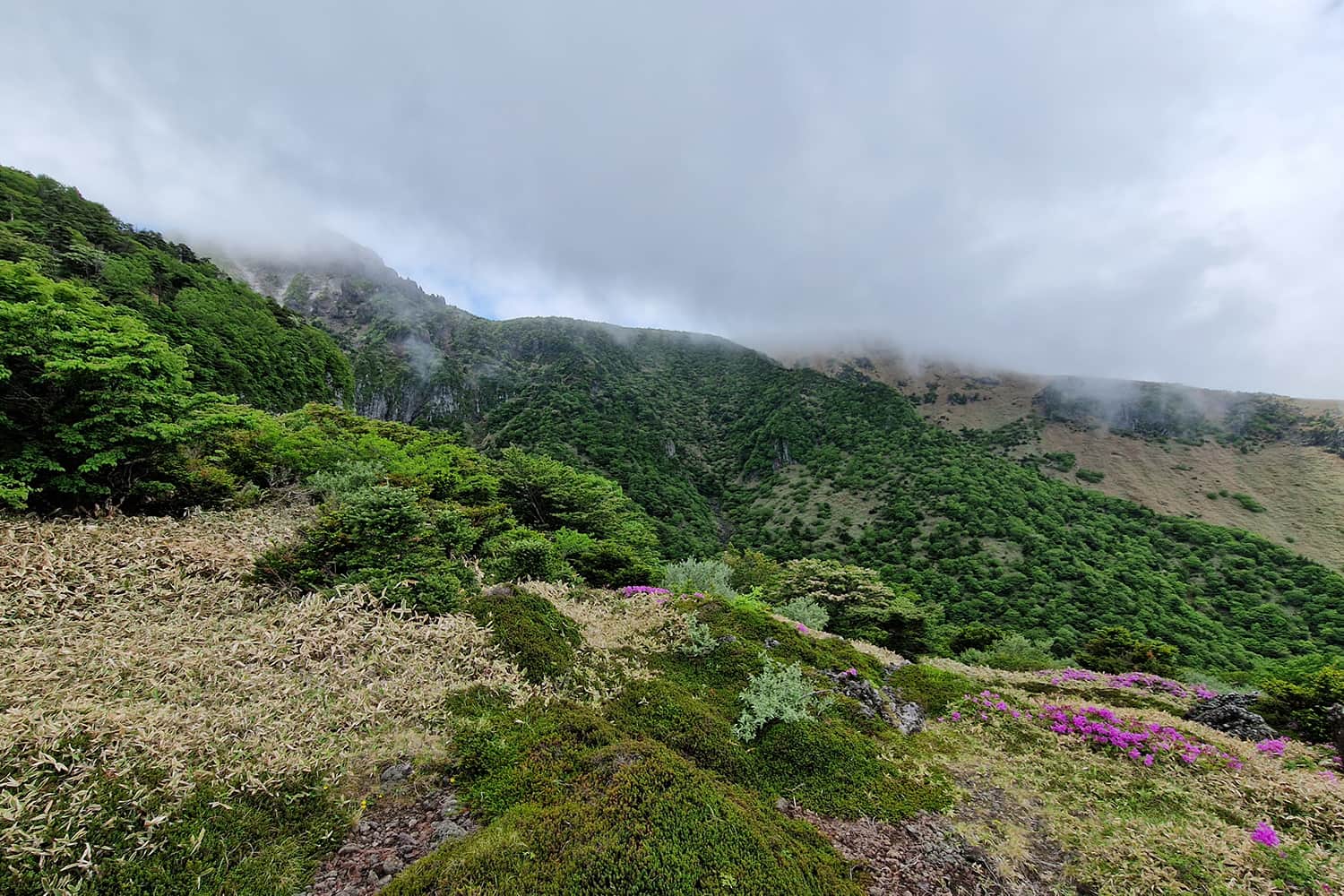
You also need to choose a time period, when you would like to start the hike. These vary depending on the season. For us in June, we had the choice between 5:30-8:00 a.m. and 8:00-10:00 a.m.! Just make sure that you present yourself at the trail entrance within the time slot you chose.
If you plan on getting to the trail head via public transport , maybe opt for the second slot. Busses resume their operation somewhere between 6:00-7:00 a.m. depending on the bus line. So, getting there within the first time slot is possible but could be tight, especially if you happen to miss one bus.
After having completed the whole process, they will send you a QR code via e-mail, which you have to present before being allowed access on to the hike towards Mt. Hallasan.
How much in advance should you make your reservation?
You actually cannot make a reservation months in advance. The website only allows to make a reservation 1-2 months prior to your trip. That said, the earlier you do it, the better.
That’s why we would suggest to do it as soon as you can, especially if you plan on visiting during a holiday, on a weekend or in general a more busy period.
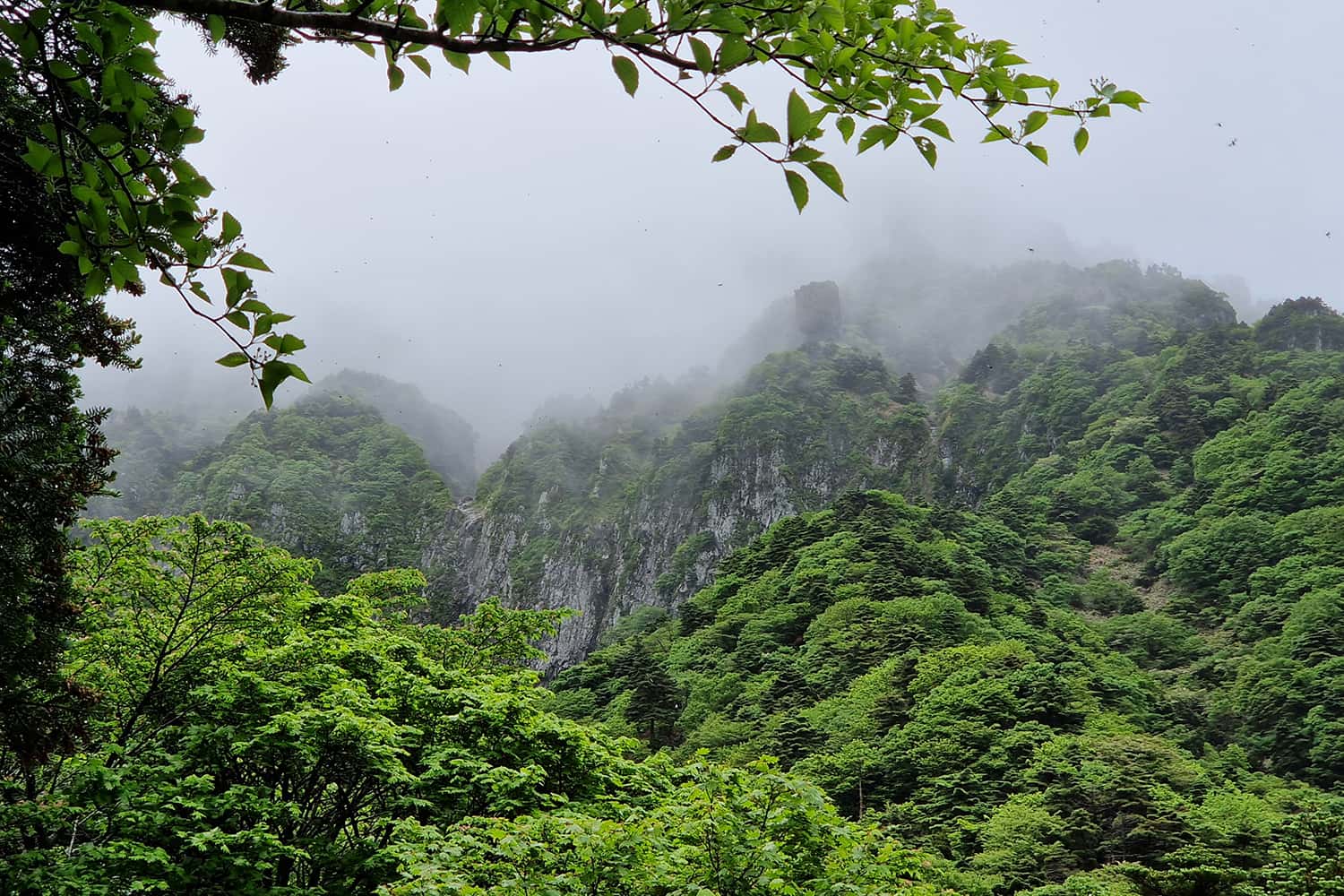
What to wear and what to pack for hiking Mt. Hallasan
What you should wear and what you’ll need depends quite a bit on the weather you’ll encounter. Since we encountered both rain and sun, we had to be prepared for both scenarios!
👟 What to wear:
Typically for hiking the “onion principle” works best when it comes to clothing!
- T-shirt or Top
- Fleece Jacket or pullover
- Leggings (women) or sweatpants
- Running shoes, if it is dry – otherwise hiking boots will be better.
🎒 What to pack:
- Water , snacks and something for lunch (there won’t be an opportunity to buy anything on the trail so you’ll need to bring your food with you!)
- Sunhat , sunglasses and sunscreen
- Rain jacket as well as a rain cover for your backpack (depending on forecast)
- Camera or your phone to take pictures
- Small Towel (if you sweat a lot or it rains a lot)
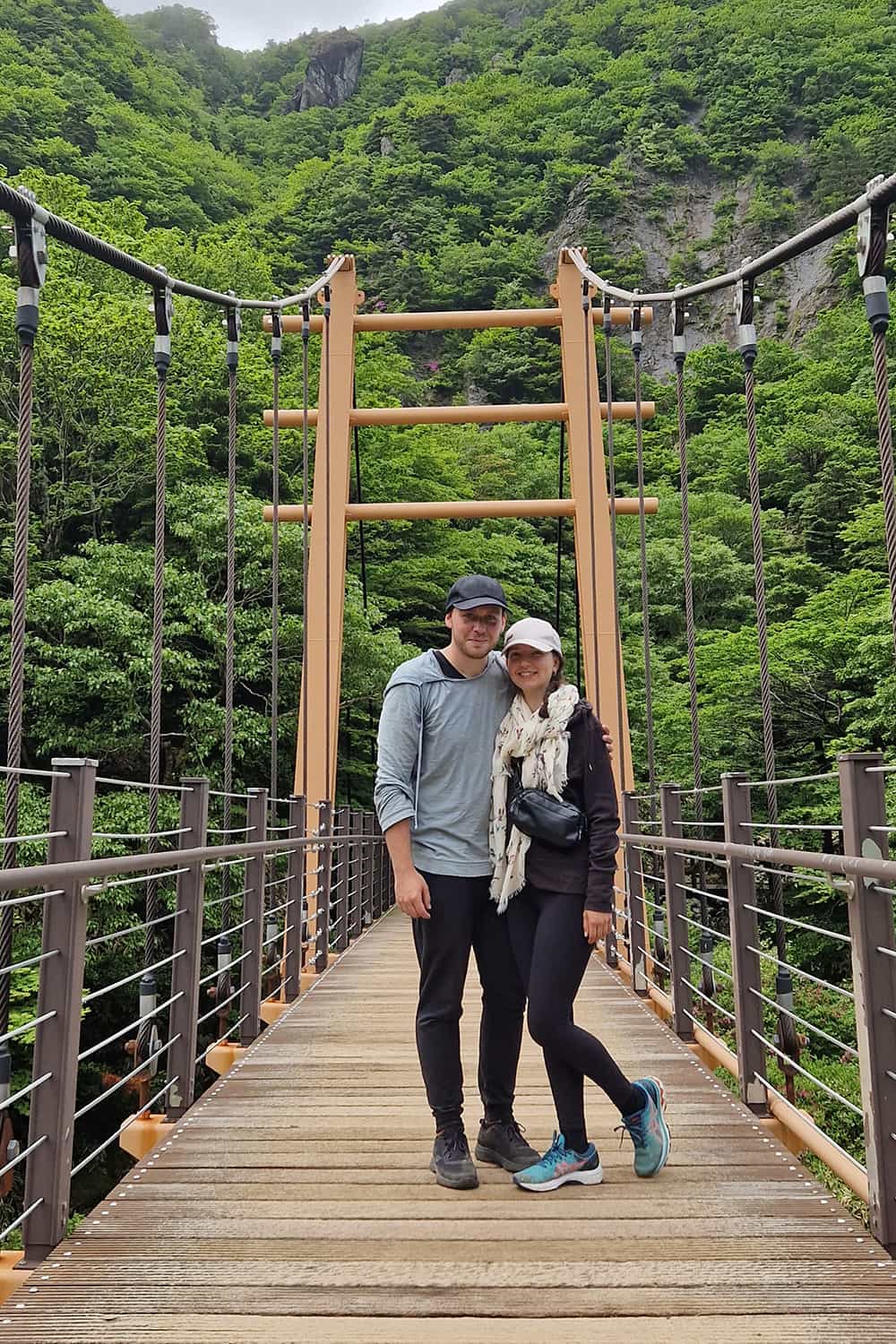
What is hiking Mt. Hallasan like? Our experience on the Gwaneumsa Trail
1. getting there.
We stayed in Jeju-City and made our way towards the starting point of Gwaneumsa Trail bright and early. Which was a good thing as we had chosen the first time slot (i.e. had to be there by 8:00 a.m.) to start the hike and needed to get there by public transport.
We took the earliest bus out of the city and still managed to miss the 475 somehow. This resulted in us stranded at a bus stop in the middle of nowhere with another hiker for about an hour until the next bus came…
But, we made it in time! After the lady at the trail head checked our reservation for the hike, we started hiking Mt. Hallasan around 7:50 a.m. , which ended up being a good time to do so.
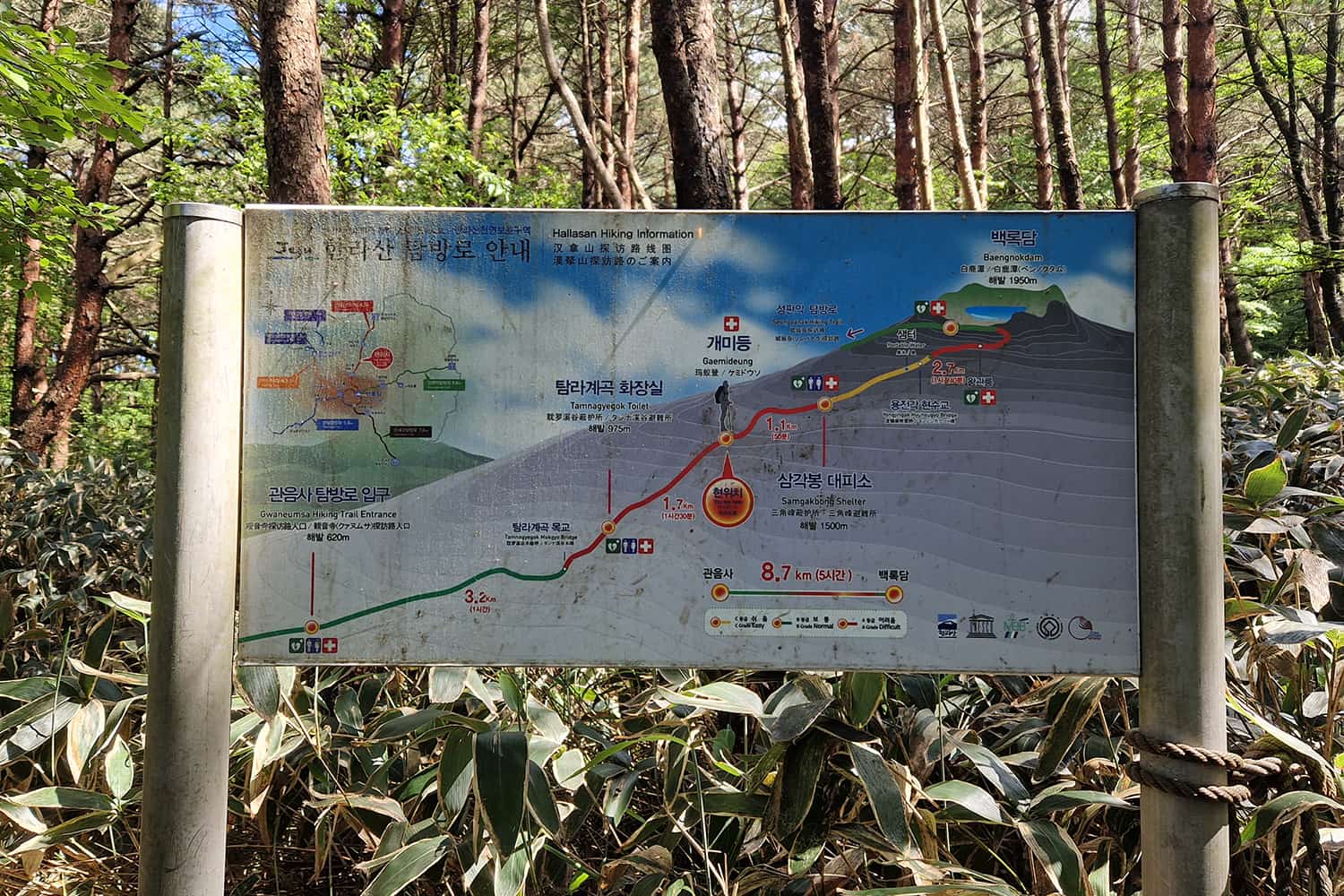
2. What is Gwaneumsa Trail like?
The first six kilometers of the Gwaneumsa trail will mostly lead you through a beautiful forest. Thereof the first 2-3 kilometers are rather gentle in terms of elevation gain. The trail still has quite a few steps. But it is not as steep and there are several wooden boardwalks in between. The following 3 kilometers is where it gets hard!
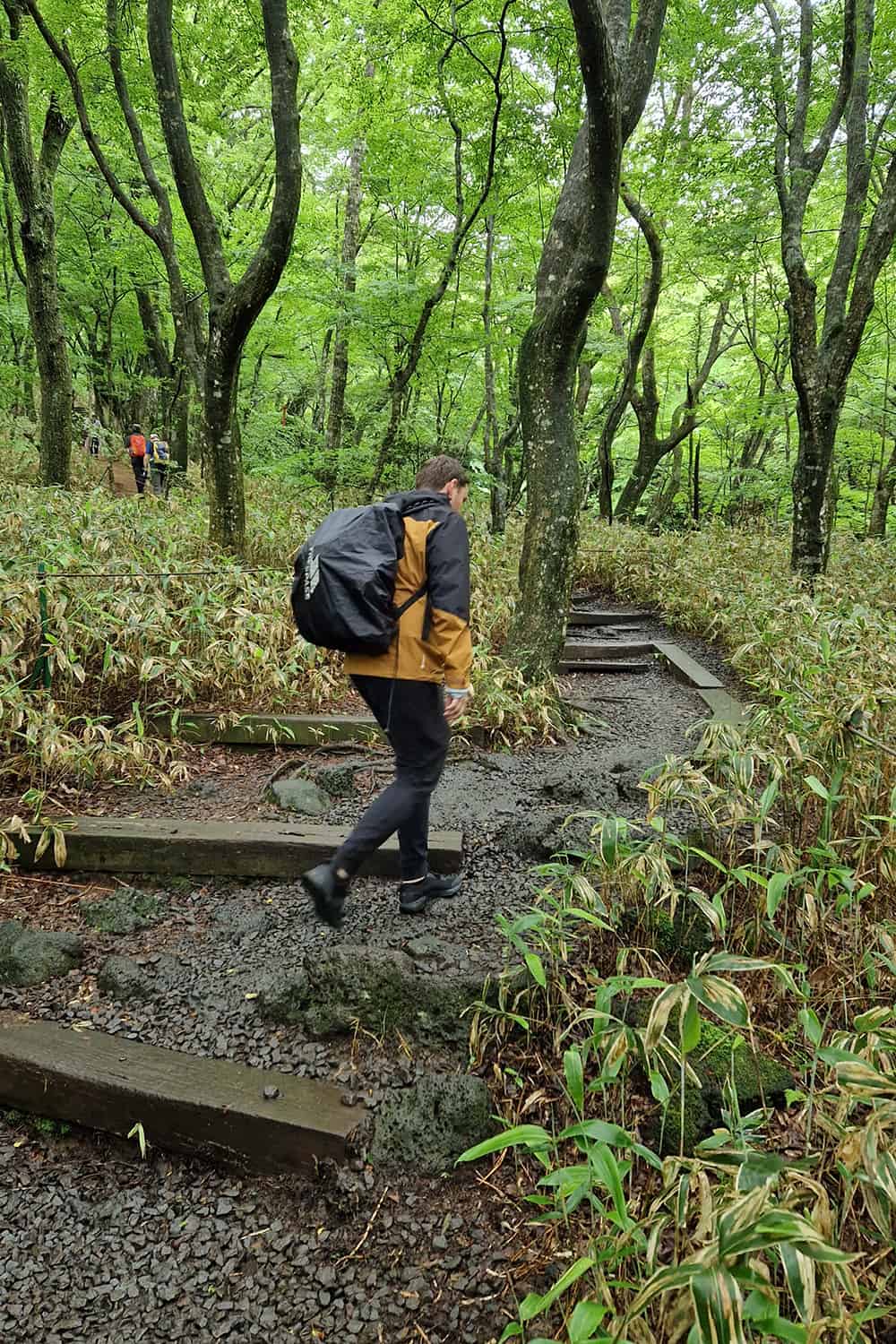
Unfortunately it rained quite a bit during those first few kilometers of the hike. The trail was quite muddy and parts of it where flooded. And so our feet where wet when we arrived at Samgakbong Shelter .
We reached the shelter after more or less 3 hours of hiking . Since the shelter provides a roof, some dry seating as well as toilets, we decided to have an early lunch here and wait out the rain since the forecast promised slightly better weather at noon.
IMPORTANT : You need to be at Samgakbong Shelter by 1 p.m.! If you arrive later than that, you won’t be allowed access to the second part of the trail anymore!
Samgakbong Shelter is actually where the scenic part of the hike starts. Once you make it through the entrance gate to the second part of the trail, you’re about to tackle the last 2.7 kilometers of the hike ! Yay!
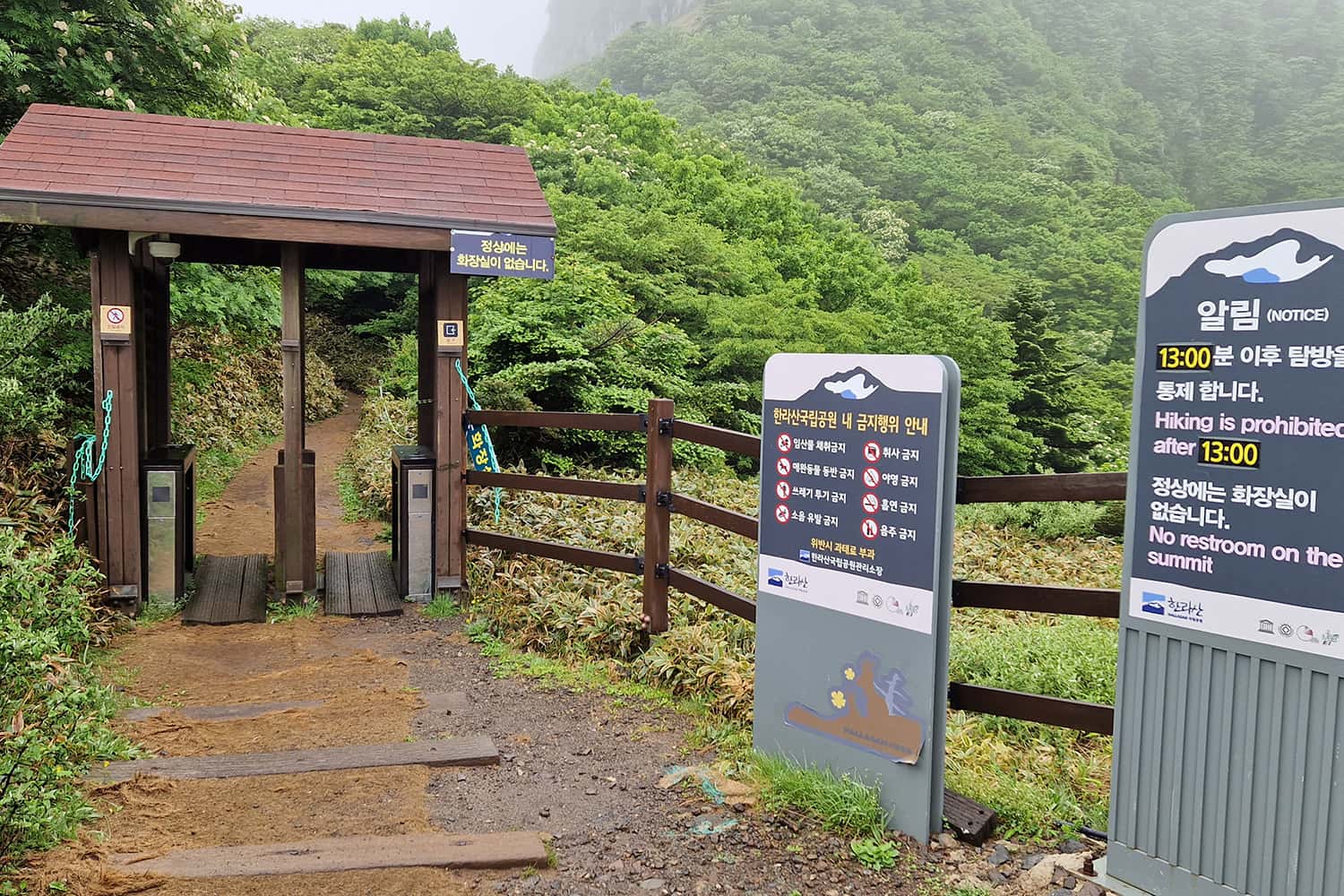
The next few hundred meters are actually pretty easy. Not far behind the shelter you’ll find a stunning suspension bridge that makes for an awesome photo-spot!
After the suspension bridge, you’ll reach the final climb. Not going to lie, it won’t be an easy one and it won’t be quick. But you’ll be surrounded by stunning nature and views! Also, on the last stretch, the support you’ll get from other hikers is simply awesome.
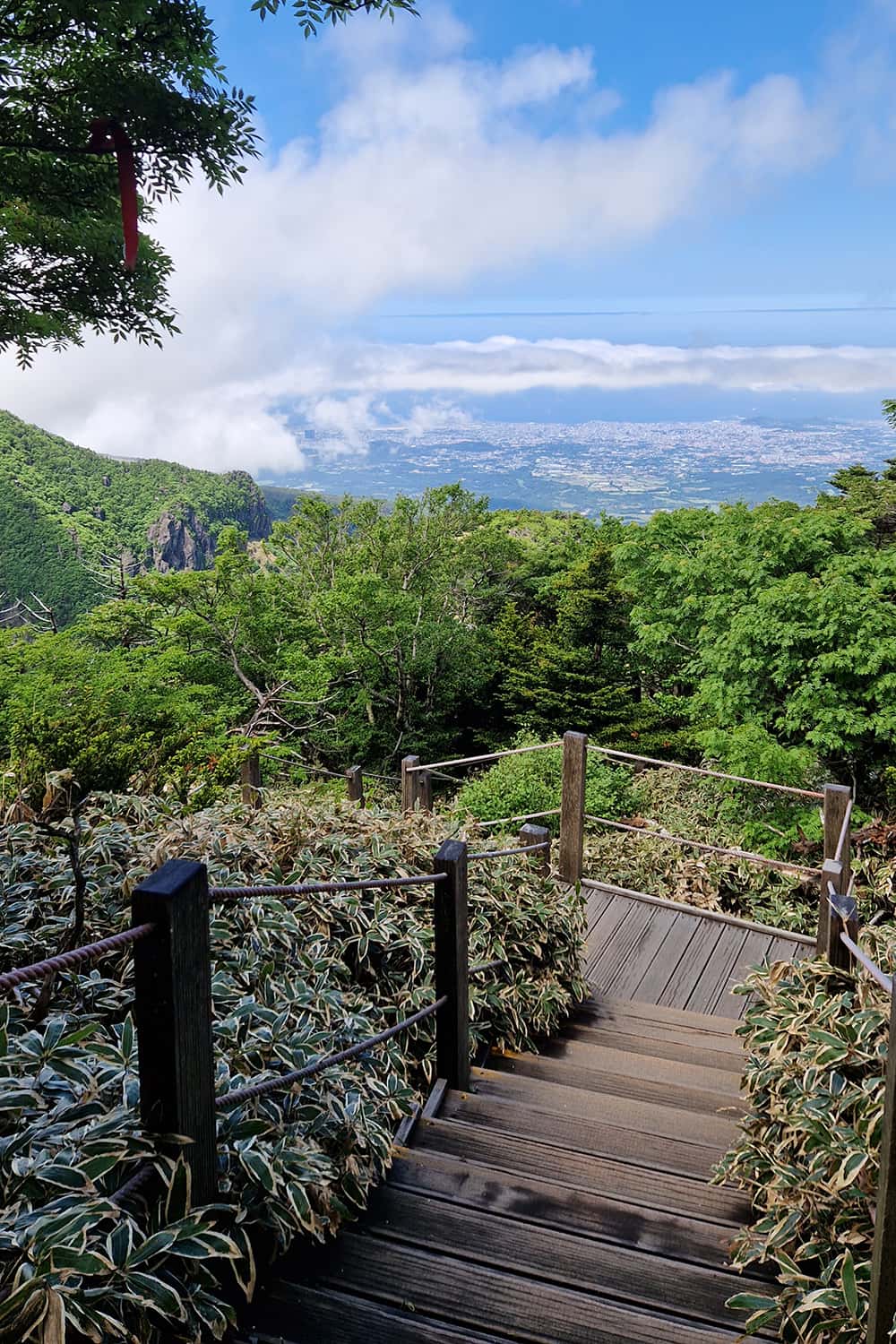
Since by then, the first people already made it to the top and have started their descent, you’ll hear quite a few encouraging words and many ‘Fighting!’s along the way to keep you motivated.
3. Reaching the Summit!
When we made it to the top, the crater of Mt. Hallasan was covered by clouds at first. We were a little disappointed that we might not get to see the iconic lake that’s located within. But soon, a ‘Wow’ went through the crowd. And when we looked, the clouds had dissipated and we were met with the most stunning view.
The only not so pleasant thing were the million bugs that swarmed the whole peak of Mt. Hallasan. If you have an insect phobia, you should mentally prepare for this. They were everywhere and kept bumping into everyone and everything!
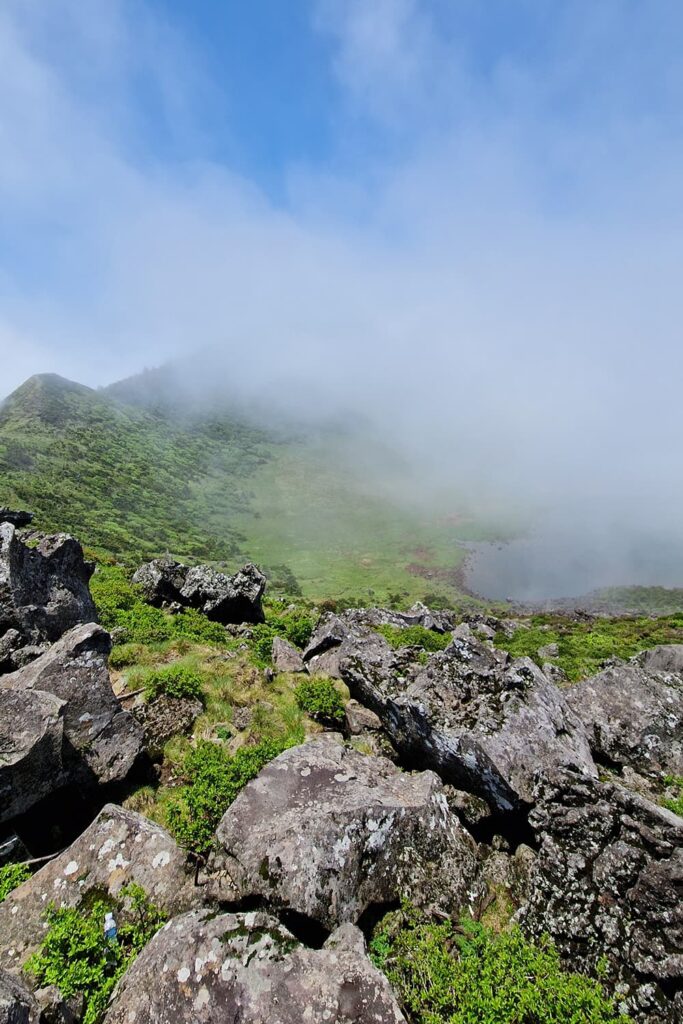
While waiting in line to get our Mt. Hallasan peak photo , the sweet lady behind us kept driving the bugs away from our clothes and backpacks. She spoke no English and we no Korean but it was a wholesome interaction.
And yes in true Asia-fashion there is probably going to be a line at the peak. But, we decided we would get a picture anyway, you only do this once right?!
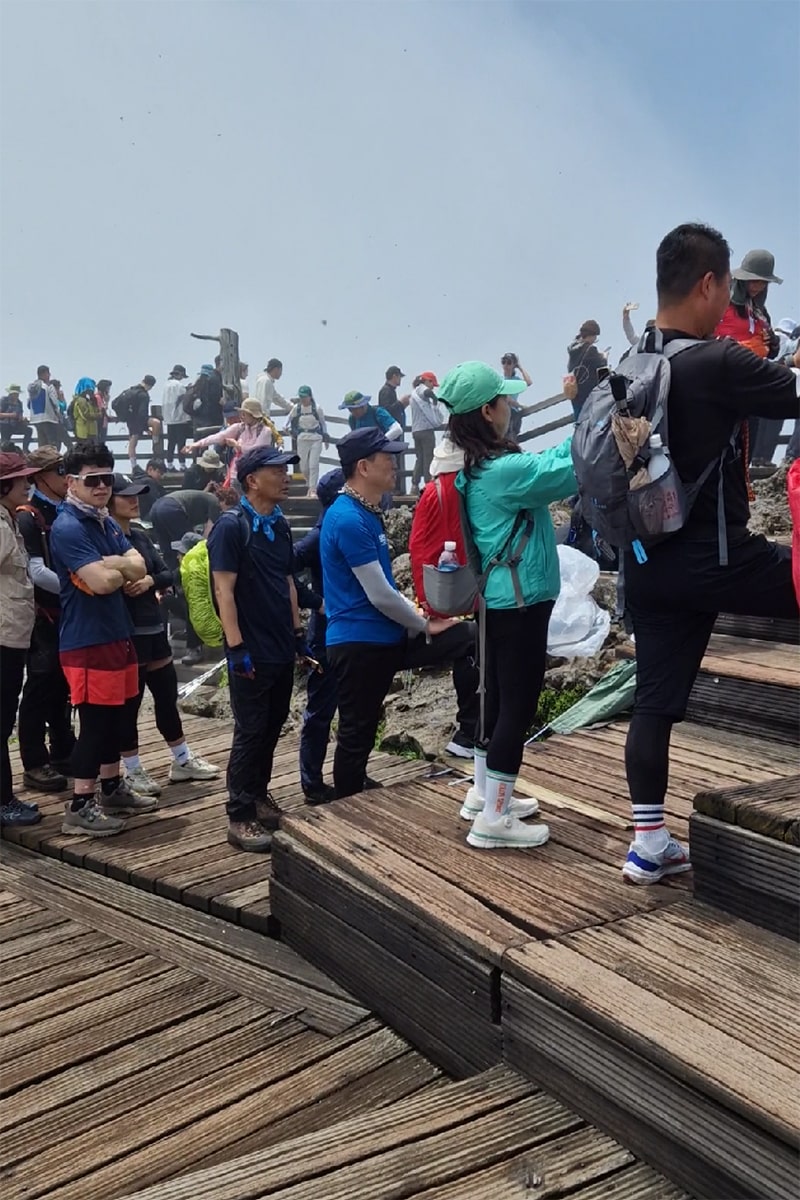
We were also offered a tangerine by another elderly Korean couple. We think they deemed our chocolate bars not as appropriate food to eat on a hike. Needless to say, I think the peak of Mt. Hallasan is where we met the most friendly people i n a short period of time.
4. Getting Back Down
Then it was time to make our way back down. It was long and exhausting and our knees were not particularly happy with us. But, we made it down a little after 4 p.m.!
This means that the whole hike took us approximately 8 hours , including nearly an hour at the top and at least half an hour at Samgakbong shelter. We are not the slowest of hikers though, so you might need longer or less long who knows!
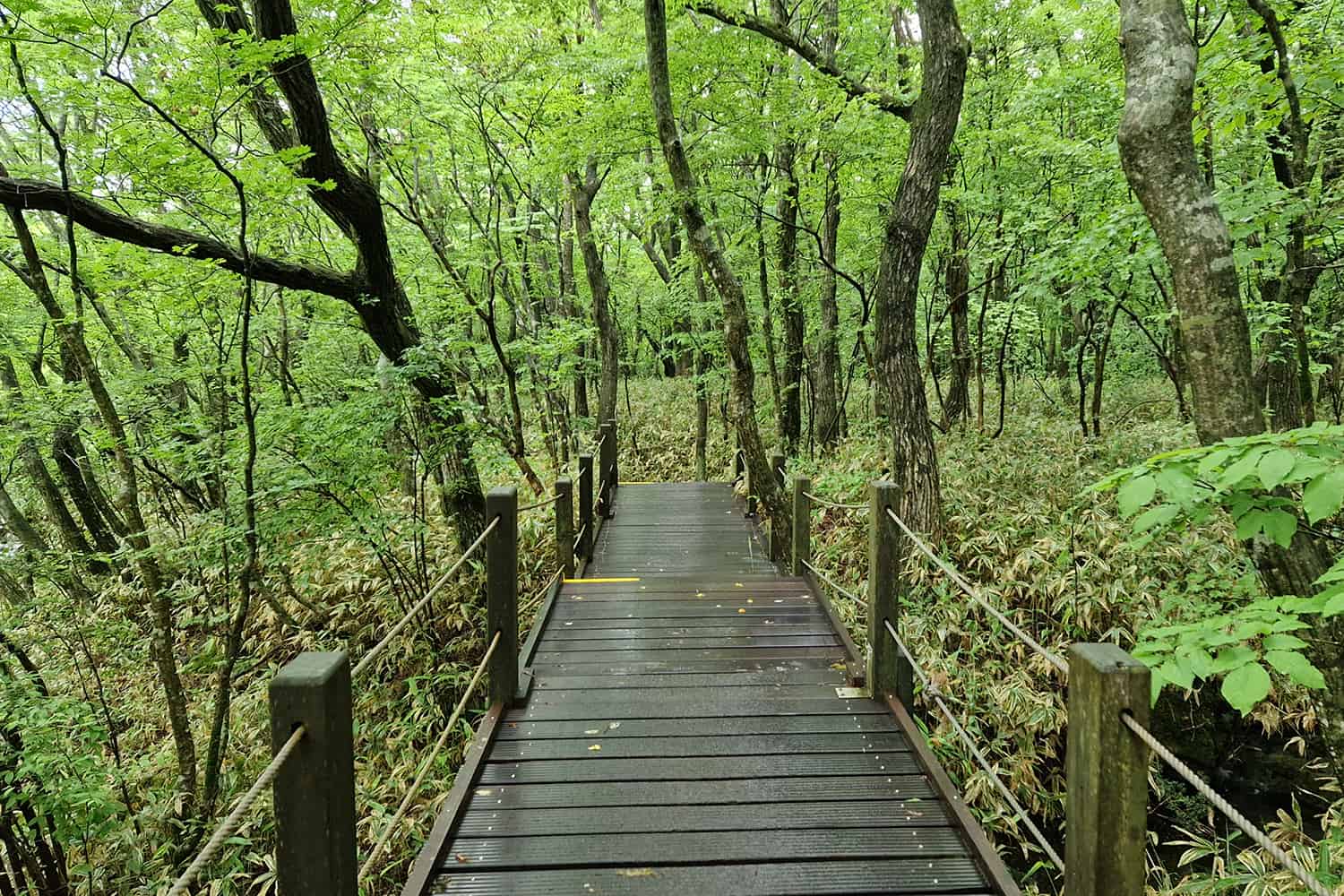
Final thoughts on hiking Mt. Hallasan
Hiking Mt. Hallasan was definitely one of the highlights of our Jeju trip. And if you are someone that enjoys hiking, we think it is an absolute MUST when on the island .
Not only will you meet some of the most lovely people. But you’ll also get to tell the amazing story of how you stood on the highest peak in all of South Korea!
We hope that we were able to answer all your questions surrounding how to plan your hike up to the summit of Mt. Hallasan in this guide! And with that, there is nothing left to say but happy hiking!
Want to save this post for later?
You might also like:.
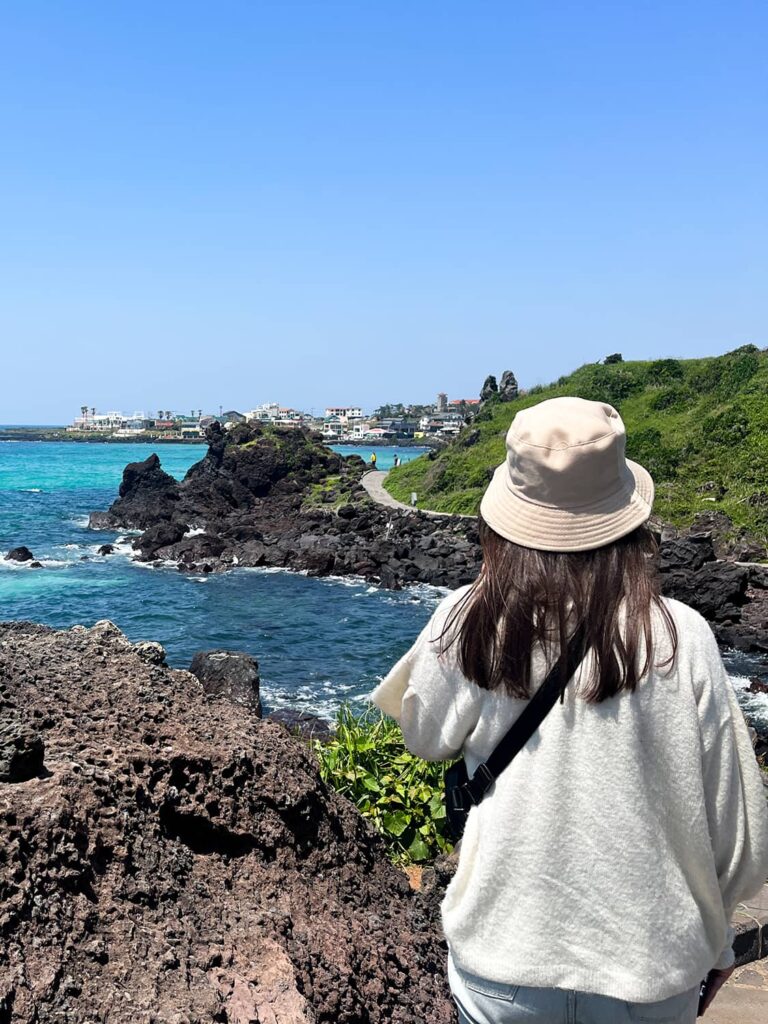
Ultimate Jeju Island Road Trip Itinerary (5-Day Itinerary)
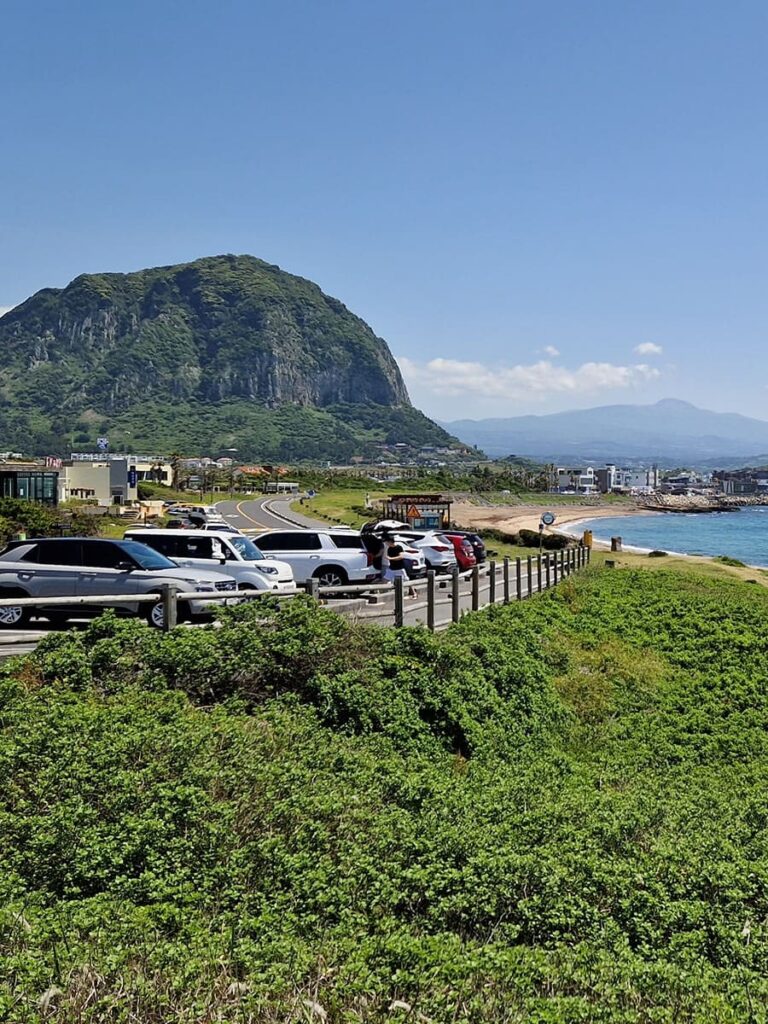
How to rent a car and drive on Jeju island (as a foreigner)
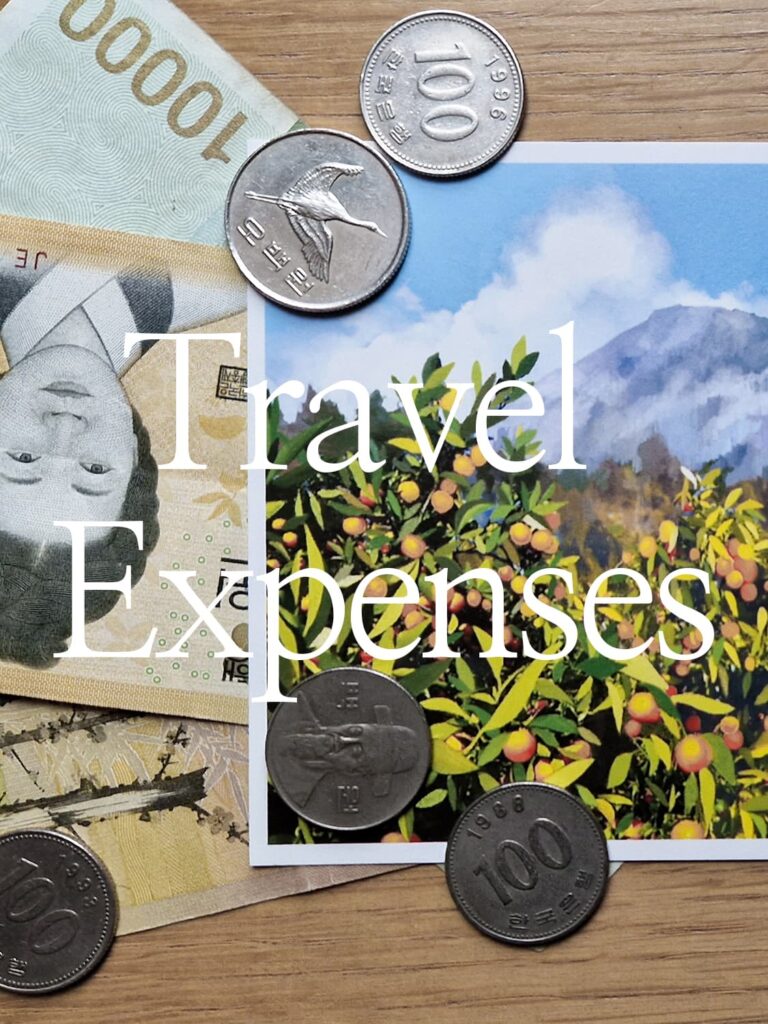
How much does a trip to Jeju Island cost? – Full Breakdown of the Budget you’ll need!
Leave a reply cancel reply.
Your email address will not be published. Required fields are marked *
Cookies are small files that are stored on your browser. We use cookies to improve our website! By choosing 'Accept all' you agree that this website may use these cookies and similar technologies. You can tailor to which types of cookies you consent by choosing the corresponding options under 'Preferences' or choose to reject them with 'Reject'! For more informations on cookies and our use of cookies, we invite you to go to our cookie policy page (which you will find at the bottom of our homepage)!

Mount Hallasan Hike of Jeju Island Complete Guide (Top of South Korea)
By: Author Charles
Posted on October 25, 2023
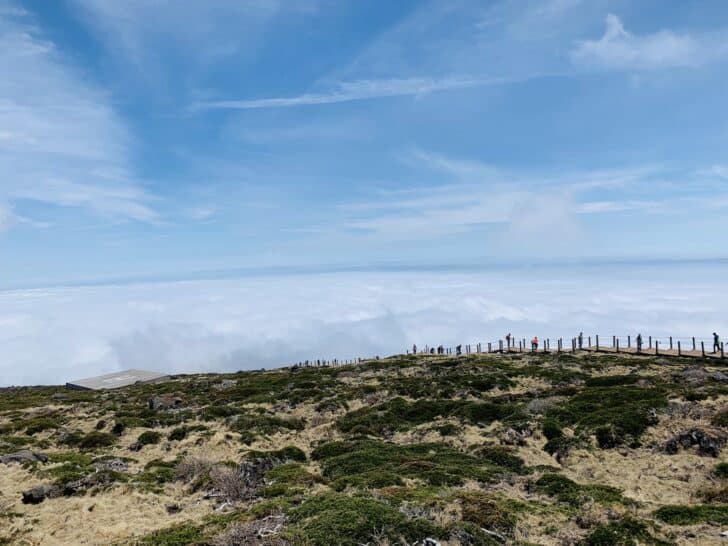
Are you interested in hiking to the highest point of South Korea?
Well, at 6,388 feet (1,947 meters) in elevation, Mount Hallasan on Jeju Island offers you that exact opportunity.
The full day hike will take you through the forest, up this shield volcano, and to the summit of South Korea.
Read on to learn everything you need to know about hiking Hallasan, and how to go about a visit during your time on Jeju Island.
* Affiliate Disclosure : This post may contain affiliate links, which means I may receive a commission if you make a purchase through the links provided, at no additional cost to you. Thanks for supporting the work I put into TripTins!
1) Mount Hallasan Background & Facts
To start, below are some helpful facts about Mount Hallasan and the trail itself.
- Mount Hallasan is located on Jeju Island , just south of mainland South Korea. It comes in at 6,388 feet / 1,947 meters in elevation, making it the tallest in the country.
- The mountain is actually a shield volcano that created most of the island itself (like the locals say “Jeju Island is Hallasan and Hallasan is Jeju”. It last erupted in the year 1007.
- The name Hallasan translates to “high enough to pull the universe” , and the mountain itself is a spiritual and sacred place for many locals.
- Surrounding Mount Hallasan, you will find Hallasan National Park . This national park is both a UNESCO Biosphere Reserve and a UNESCO World Heritage Site.
- On Hallasan, you will find 7 hiking trails. However, only two of those hiking trails reach the summit – Seongpanak and Gwaneumsa (more on these routes soon). The remaining trails are great for those that want to take part of a shorter day hike.
- Once at the Hallasan summit, you will have views of the Baengnokdam Crater Lake and the rest of Jeju Island all around, as you stand at the highest point of the country.
The rest of this guide will focus in on the Hallasan hike and how to get yourself up to the summit.
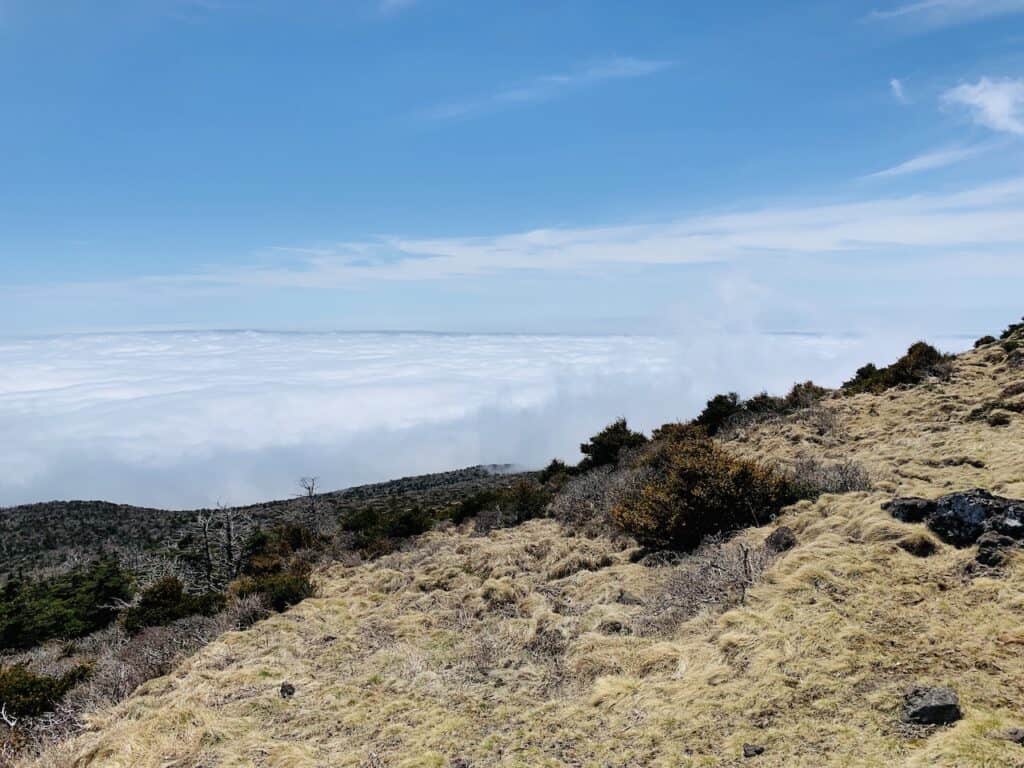
2) Mount Hallasan Trail Routes
As mentioned, there are two trails that reach the summit of Hallasan – Seongpanak (east) and Gwaneumsa (north).
At each trailhead you will find a parking lot, where you will pay a small fee to park your car. The Gwaneumsa lot also offers a campground for an additional fee if you would like to camp the night prior to your hike.
In general, there are four ways to go about a hike with these routes depending on preferences & logistics:
- Up and Down Seongpanak (most common & easiest)
- Up and Down Gwaneumsa (most difficult)
- Up Seongpanak and Down Gwaneumsa (easier way to hike both routes)
- Up Gwaneumsa and Down Seongpanak (harder way to hike both routes)
There are three main considerations at play here when deciding on your route – difficulty, logistics, and reservations.
For the most part, going up and down Seongpanak is the most popular option. This is because the route gains less elevation and is less steep compared to the Gwaneumsa route.
However, if you did want to change up the route, I would recommend heading up Seongpanak and down Gwaneumsa (this is the route I took part of). While it is a steeper descent, you will be able to enjoy a larger portion of Hallasan National Park.
If going up and back on the Gwaneumsa route, or going from Gwaneumsa to Seongpanak, expect a tougher incline towards the summit.
When it comes to the trail itself, you will find a mixture of boardwalks, staircases, and natural rocky terrain on both routes.
I honestly don’t think I have come across another hike that has so much infrastructure built along the route. It will definitely feel like a different type of hike due to the amount of construction built to help hikers up the summit.
Now, if you do opt for a one-way route (starting and ending in two different spots), then you will need to think about logistics as well.
This is more so an issue if you are taking your own car. If you park at one trailhead, you will then need to get back to the other trailhead at day’s end. This can be done by taxi or bus (more on that soon).
While I did catch a taxi back to Seongpanak from Gwaneumsa, there were only a couple of them waiting there. I hear in general that there are more taxis usually waiting at Seongpanak (but you never know).
Reservations
The last main consideration are reservations. In order to take part, you must sign up in advance and pick either trailhead as a starting point.
If one route happens to be all booked up, then that may force you to choose the other.
There are 1,000 spots available at Seongpanak and 500 at Gwaneumsa. So, if crowds are a concern, then you may want to consider that as well.
I will talk through the reservation system in the following sections.
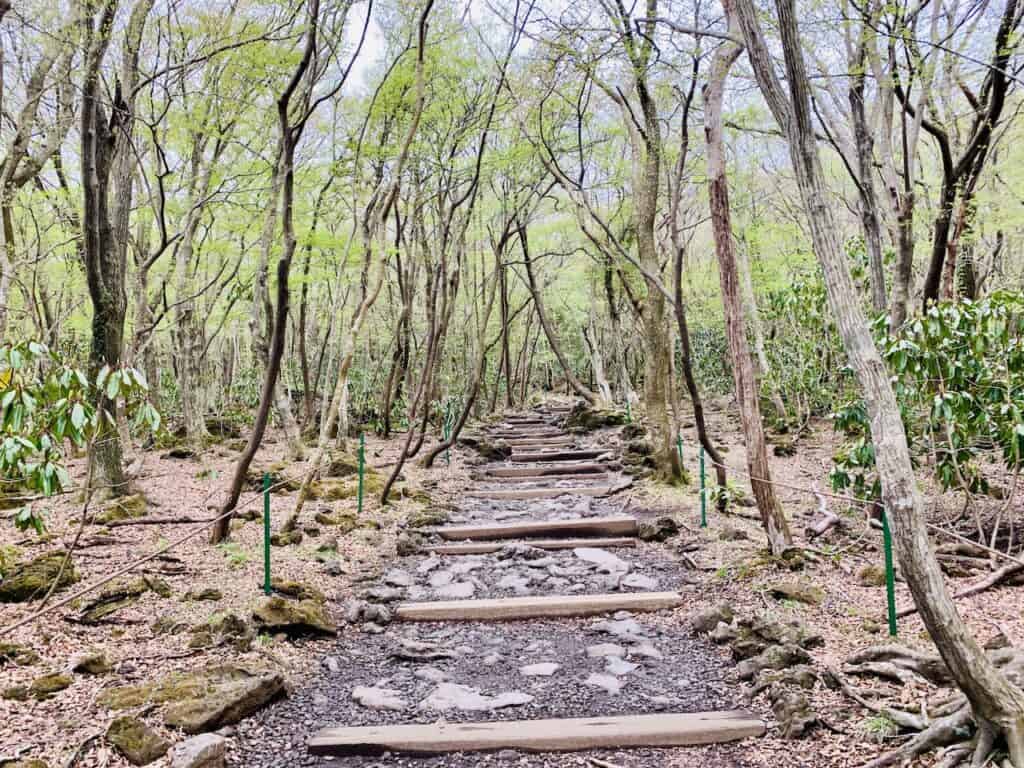
3) Route Statistics
To give you some trail stats, below you can see the total length and elevation gain for the 4 different options:
Option 1: Up and Down Seongpanak
- Start: Seongpanak
- End: Seongpanak
- Length: 11.5 miles / 18.5 km
- Elevation Gain: 3,800 feet / 1,160 meters
Option 2: Up and Down Gwaneumsa
- Start: Gwaneumsa
- End: Gwaneumsa
- Length: 10.6 miles / 17.1 km
- Elevation Gain: 4,450 feet / 1,360 meters
Option 3: Up Seongpanak and Down Gwaneumsa
- Length: 11.1 miles / 17.9 km
- Elevation Gain: 3,860 feet / 1,180 meters
Option 4: Up Gwaneumsa and Down Seongpanak
- Elevation Gain: 4,430 feet / 1,350 meters
Other Routes
If you do not want to hike to the summit and rather take part of a shorter day hike, then there are other options for you.
These include Yeongsil, Eorimok, Eoseungsaengak, Seokgulam, and Donnaeko.
The routes are great for those that want to hike within Hallasan National Park but don’t want to spend a full day out on the trail.
How Long Does it Take to Hike Hallasan
No matter what route to the summit you opt for, you can expect a total round trip to take between 6-8 hours.
This will entail around 4-5 hours going up and a 2-3 hours to make it back down.
If you spend more time taking pictures and hanging out by the summit, then the time can certainly take longer.
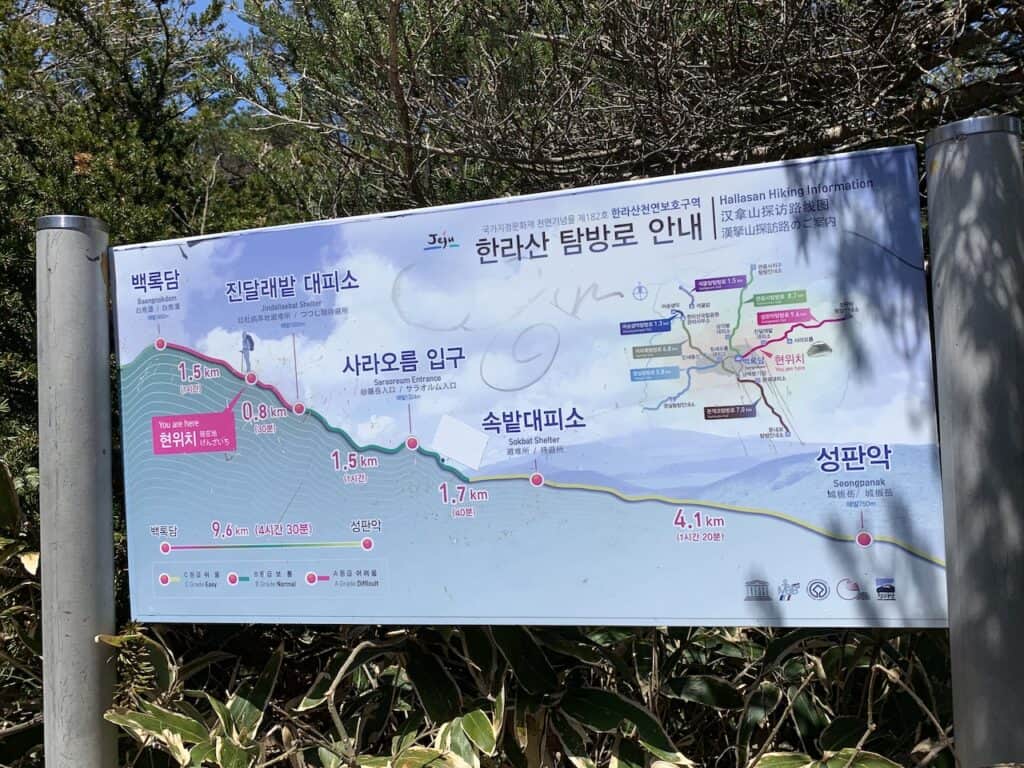
4) Mount Hallasan Map
To better grasp the layout of the two trails, you can see the Hallasan trail map below.
The route that starts on the east will be Seongpanak, and the one to the north will be Gwaneumsa.
They both meet each other at the summit, where you can then decide which route down to take.
5) Hallasan Reservations
In order to hike Mount Hallasan, you must sign up in advance through their online reservation system .
The reservation system is easy to use and you will be able to choose which route you plan to take up (it does not matter which route you take down).
The Seongpanak route is limited to 1,000 hikers per day while the Gwaneumsa route is limited to 500 hikers.
In order to make your reservation, you will need to wait until the month prior to your hiking date. For example, reservations will open for all of May on April 1. Once May 1 comes along, you can then reserve for June.
You can expect weekends to fill up fast and there is always a chance for last minute reservations too if you are lucky.
While reservations are needed, there is no fee that needs to be paid. The system is in place to ensure the mountain does not get overpopulated with hikers and it helps with mountain safety altogether.
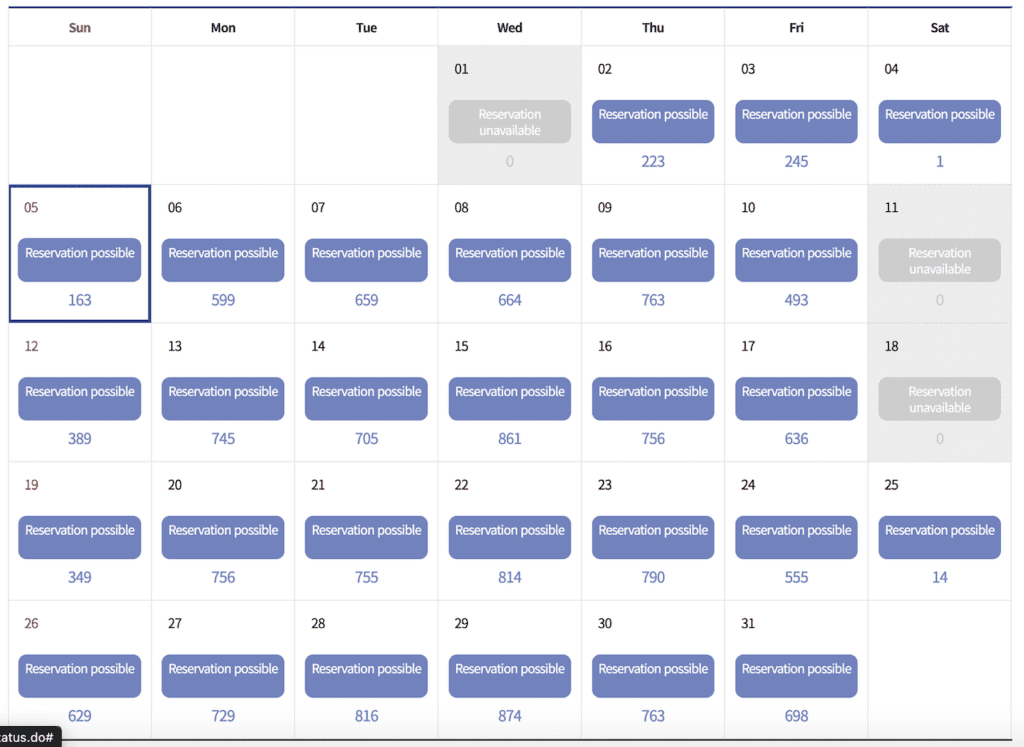
6) Cut Off Times
Before getting into the hike, it is very important to note that there are cutoff times on the mountain.
On the Seongpanak route there is a cutoff time at the Jindallaebat Field Control Center (also called Azalea) and on the Gwaneumsa route there is a cutoff at the Samgakbong Peak Control Station.
This means that if you do not arrive at either of these stations prior to the cutoff time, you will be asked to turn around.
In addition, you will be asked to leave the summit by a certain time to ensure everyone is off the mountain before dark.
Depending on time of year, the trails open between 5:00AM – 6:00AM and you must arrive at the stations between 12:00PM – 1:00PM. The summit then closes between 1:30PM – 2:30PM.
Below is a screenshot of the opening times & cutoff times by season to see more detail:

7) Where to Stay on Jeju
When planning a trip to Jeju, you can opt to base yourself in one spot (like Jeju City or Seogwipo), or spend a couple nights in various places around the island (such as Seongsan Ilchulbong and the Manjanggul Cave ).
At the end of the day, this will all depend on your own itinerary.
I found that staying in Seogwipo is a great option altogether. It has easy access to the western and eastern parts of the island, and Hallasan is just a short drive away.
Below are a few hotel recommendations for these two main places:
- Ramada by Wyndham
- Grand Hyatt
- Lotte City Hotel
- Park Sunshine
- Hotel Bridge
- Golden Daisy Hotel
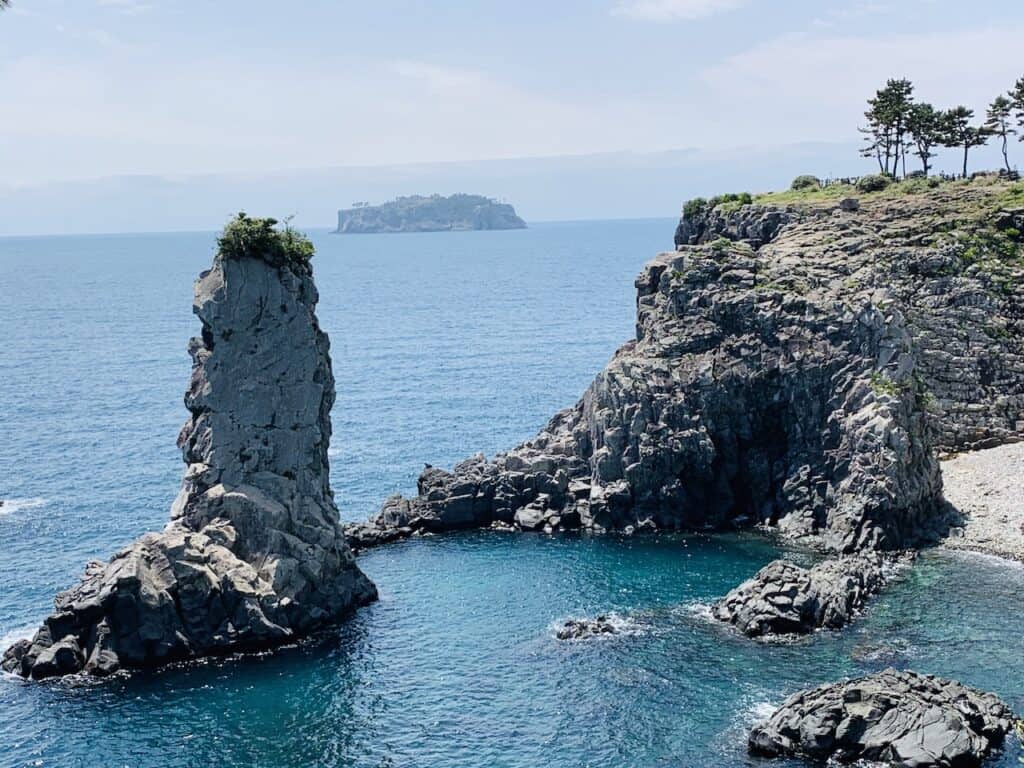
Learn More About Jeju : Check out this guide that goes over the best things to do in Jeju Island
8) How to Get to Mount Hallasan
There are three main ways to go about getting yourself to the Mount Hallasan trailheads – rental car, bus, or taxi.
During my time on Jeju, I decided to rent a car for the few days I was exploring the island. This gave me the chance to see everything I wanted on my own schedule and at my own pace.
I was very happy with this decision as it was quite easy to get around and see all the various sites that Jeju had to offer.
Feel free to check out Rentalcars.com for potential options. You will be able to see a variety of cars by price, size, and type, so you can choose the one best for you.
When heading to the Hallasan trailheads, you can simply type in Seongpanak (GPS: 33°23’05.5″N 126°37’12.1″E) or Gwaneumsa (GPS: 33°25’19.5″N 126°32’59.2″E) and be on your way.
Two important rental car notes:
- You will need an International Drivers License to rent a car in South Korea . Be sure to get one prior to your trip.
- Google Maps does not work in South Korea. Download an app like Naver for driving directions .
The second option is to take a public bus that stops at the trailheads. This will of course depend on where you are staying but in general, below are the routes to consider:
To Seongpanak : direct bus from Jeju City or Seogwipo to Seongpanak (40 minutes).
To Gwaneumsa : first take a bus from Jeju City or Seogwipo and get off at Jeju University (30/45 minutes). Switch onto bus route 475 to Gwaneumsa (15 minutes).
You can take a look at routes 181, 182 and 281, which travel between Jeju City and Seogwipo, with stops at the Seongpanak trailhead and at Jeju University
The Jeju bus website is also helpful where you can put in the routes/stops to see the latest.
The last main option to consider is to take a taxi to/from the trailhead. In order to do so, I would advise to have your hotel help plan this for you.
The taxi can drop you off early in the morning, and then pick you up later in the afternoon at a set time. Just be sure to give yourself enough time to complete the hike of course.
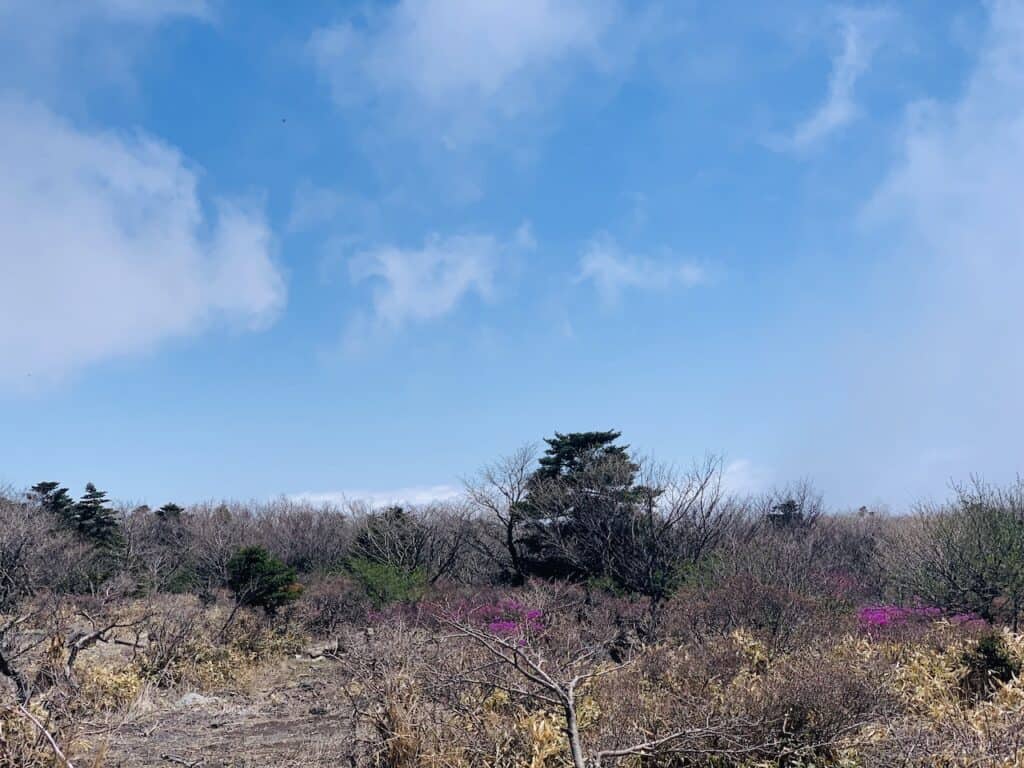

One Way Route Logistics
If taking the bus or a taxi, the idea of taking a one-way route should not be much of an issue.
However, if you have your own rental car and are planning to take a one-way route (i.e. starting in Seongpanak and ending in Gwaneumsa), then you will of course need to find a way back to get back to your car at the end of the hike.
There are a few ways to go about this:
During my time on the trail I opted for the route starting in Seongpanak and ending in Gwaneumsa.
Once I reached the Gwaneumsa trailhead, there were a couple taxis sitting around. I would consider myself lucky because there certainly could have been a situation where no taxis would be waiting.
If a taxi is not waiting there for you, then you may need to consider the next option – public transport.
Note: the distance between the trailheads is quite short and should only take about 10 minutes by car.
In order to go between Gwaneumsa and Seongpanak, you can first take a bus towards Jeju University. Once there, transfer to bus 475 to get to either of the two trailheads.
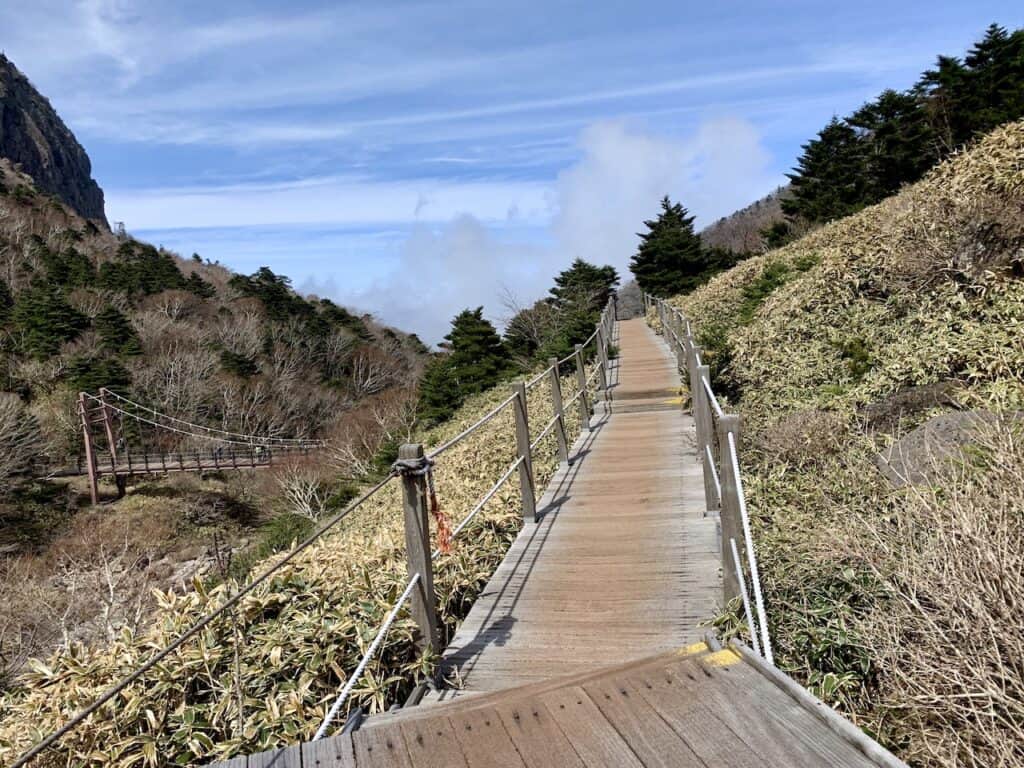
9) What to Wear
A hike up Mount Hallasan can really bring all sorts of weather. While it can be nice and sunny at one moment, the rain and wind can begin at another moment.
To ensure you are well prepared for a hike up Hallasan, you will want to come with the appropriate packing list.
I also want to point out that you should come prepared with at least a couple liters of water to keep yourself hydrated all the way through.
Hiking Packing List In general when it comes to hiking, there are a few main aspects to consider. These includes clothing layers, hiking shoes, hydration & fuel, electronics, and other essentials. Below in a breakdown of some of the top items, but be sure to check out the Hiking Packing List for a more comprehensive view. Clothing Layers Layering is going to be a top consideration when hiking. You will want to be prepared for all sorts of weather so you can be comfortable in different situations. Some items may include: → Hiking Shorts → Hiking Pants → Short Sleeve Shirt → Long Sleeve Shirt / Sun Hoodie → Mid Layer Fleece → Puff Jacket (not always needed) → Packable Rain Jacket ( Columbia Watertight II ) Note that your layers should be made of moisture wicking material as they are breathable and quick drying. Footwear Having appropriate footwear will also be very important. You will want to have shoes with the necessary grip and support to keep you safe on the trail. → Hiking Shoes ( Keen Targhee ) → Hiking Socks ( Darn Tough ) Other Essentials Whether it is hiking gear, electronics, or just some miscellaneous items, here are some other essentials to bring along on hikes. → Hiking Backpack ( Osprey Talon 22 ) & Rain Cover ( Joy Walker Cover ) → Hiking Poles ( Black Diamond Trekking Poles ) → Water Bottle ( CamelBak Chute or Katadyn Filter Bottle ) → Portable Charger ( Anker PowerCore 5000mAh ) → Action Camera ( GoPro Hero ) → Energy Bars & Snacks → Hat & Sunglasses → Sunscreen & Bug Spray
10) The Mount Hallasan Hike
Now that you have all the background information necessary for Hallasan, let’s talk about the hike itself.
During my time climbing to the top of South Korea, I opted to start at the Seongpanak trailhead and come down to the Gwaneumsa trailhead. I then grabbed a taxi back to the start.
Since I opted for this route in particular, that is how I will go about the remainder of the hiking overview.
Of course, no matter what route you take, the overview will still be very relevant since it covers both the Seongpanak and Gwaneumsa trails.
Seongpanak Trailhead to Sokbat Shelter (1 hour)
After arriving at the parking lot, it is time to begin the hike up to the summit of Mount Hallasan.
Once you arrive, there will be plenty of informational boards about the route, cutoff times, and what to expect on the trail.
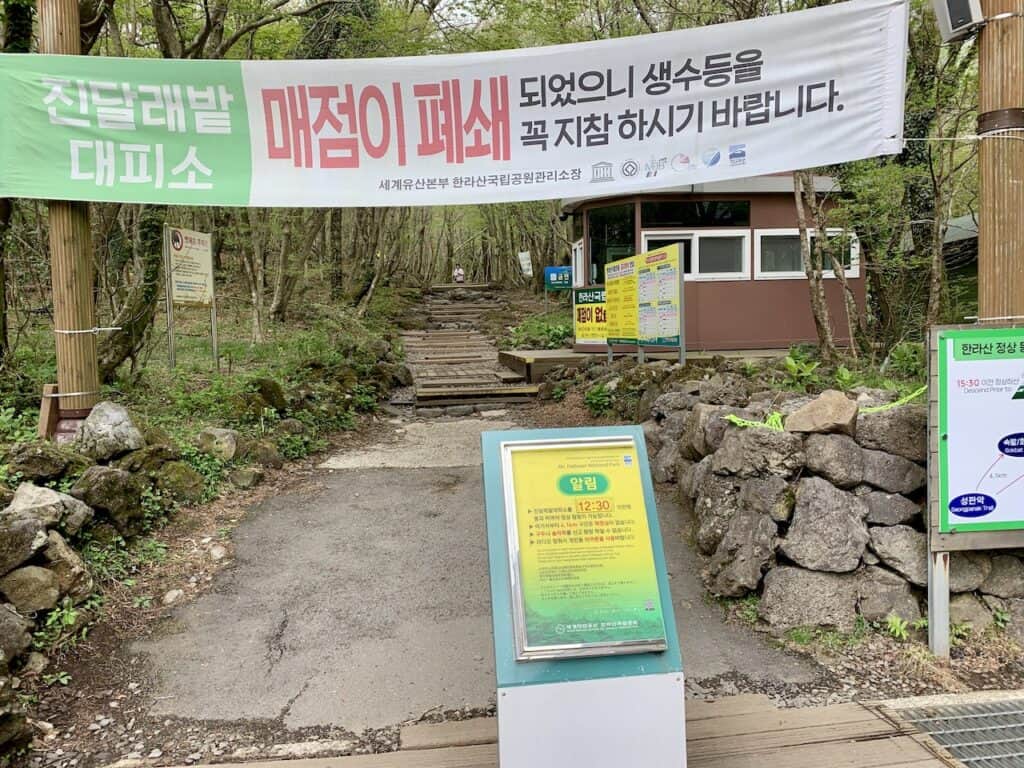
The majority of the hike will be in the forest among the trees. It is not until the end of the hike, that you end up above the tree line.
During this first portion of the hike, you will walk along an easy grade trail towards the Sokbat Shelter (no time cutoff for this one).
The trail for the most part will be on dirt and rocky terrain with the help of manmade wooden stairs to help with the incline.
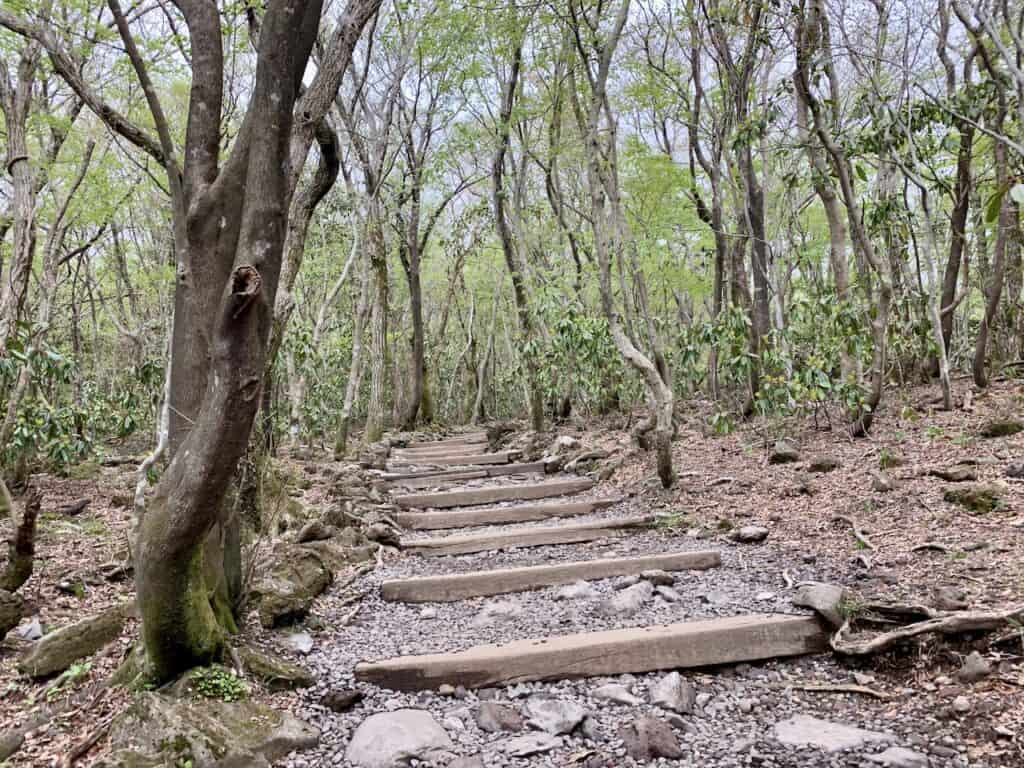
In all directions you will be surrounded by various flora as you follow the obvious path upwards on the mountain.
Some portions will have slightly more difficult rocky terrain so be sure to watch your step. Other portions have a wooden boardwalk and should be nice and easy to stroll along.
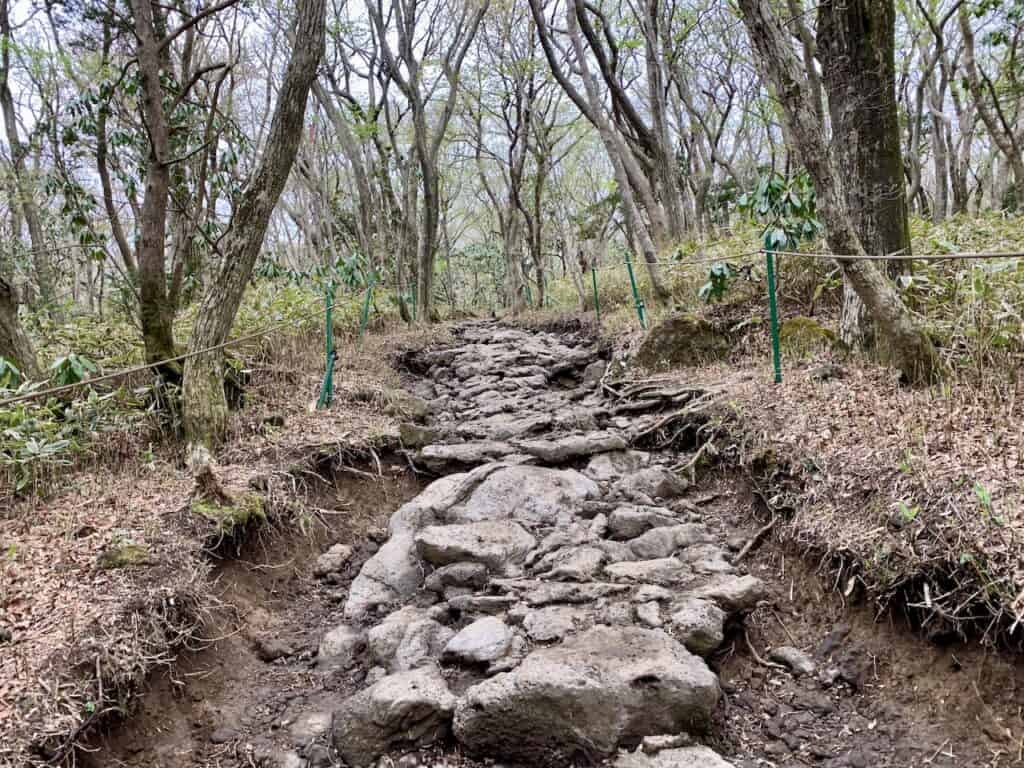
Soon enough you will be welcomed to the Sokbat Shelter. This is an area that you can take a rest break before continuing onwards. You will also find restrooms here as well.
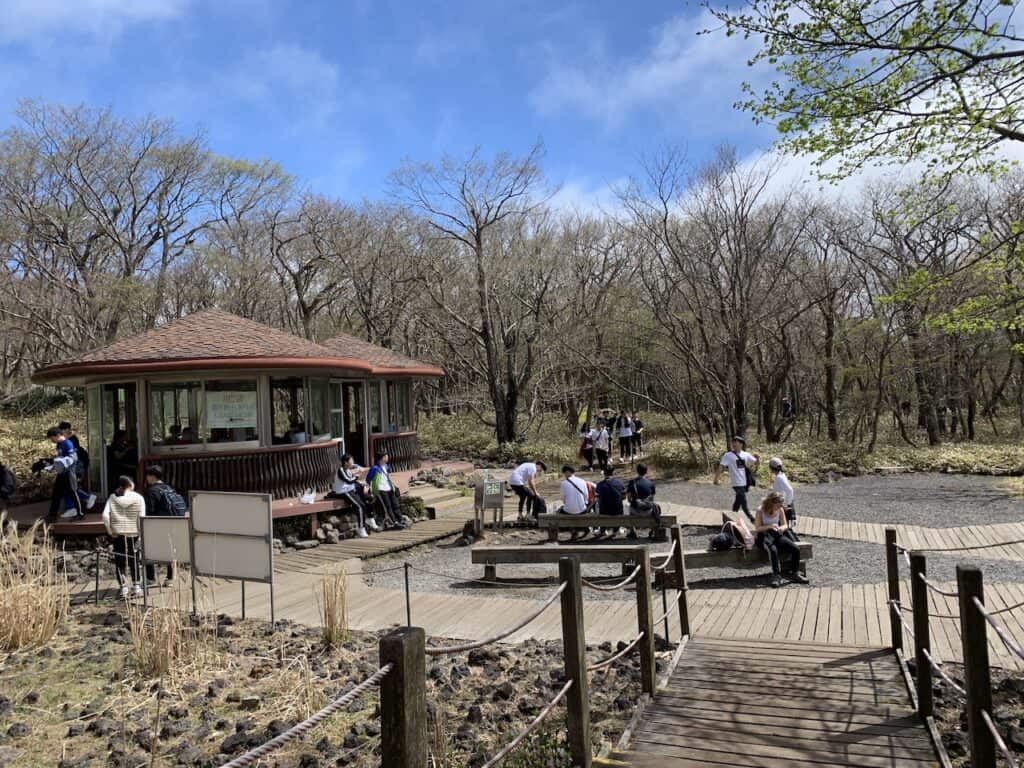
Sokbat Shelter to Saraoreum Turnoff (30 minutes)
After leaving the shelter it is another 30 minutes or so until you reach the optional Saraoreum turnoff point.
At the turnoff, you will have the chance to head on an out and back 1.2 km trail to a lake viewpoint area.
During my time there, I opted not to head out there so I don’t have photos from that section of trail. It is up to you though if you would like to add it onto your overall route.
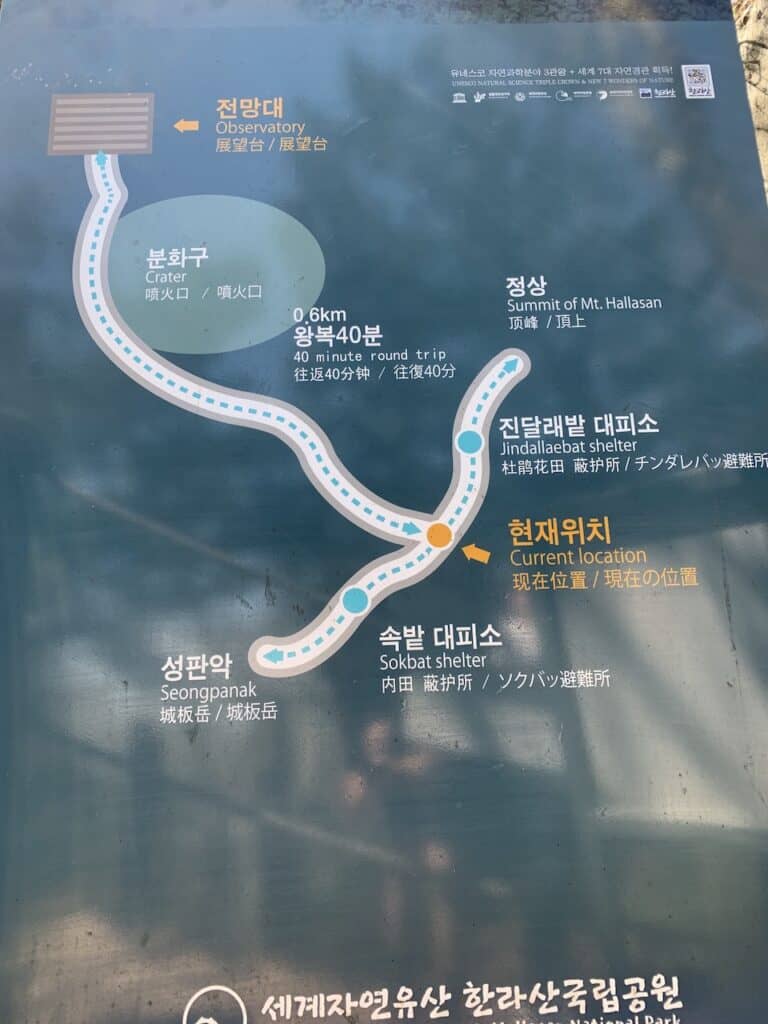
Either way though, as you do head out from Sokbat, more boardwalks, trees, and rocky stairs await.
The incline will also begin to get steeper at this point, so you will start to feel the hike getting tougher as you continue up.
Once you reach the Saraoreum turnoff, you can decide to make the trip out & back to the scenic spot or just continue along on the trail.
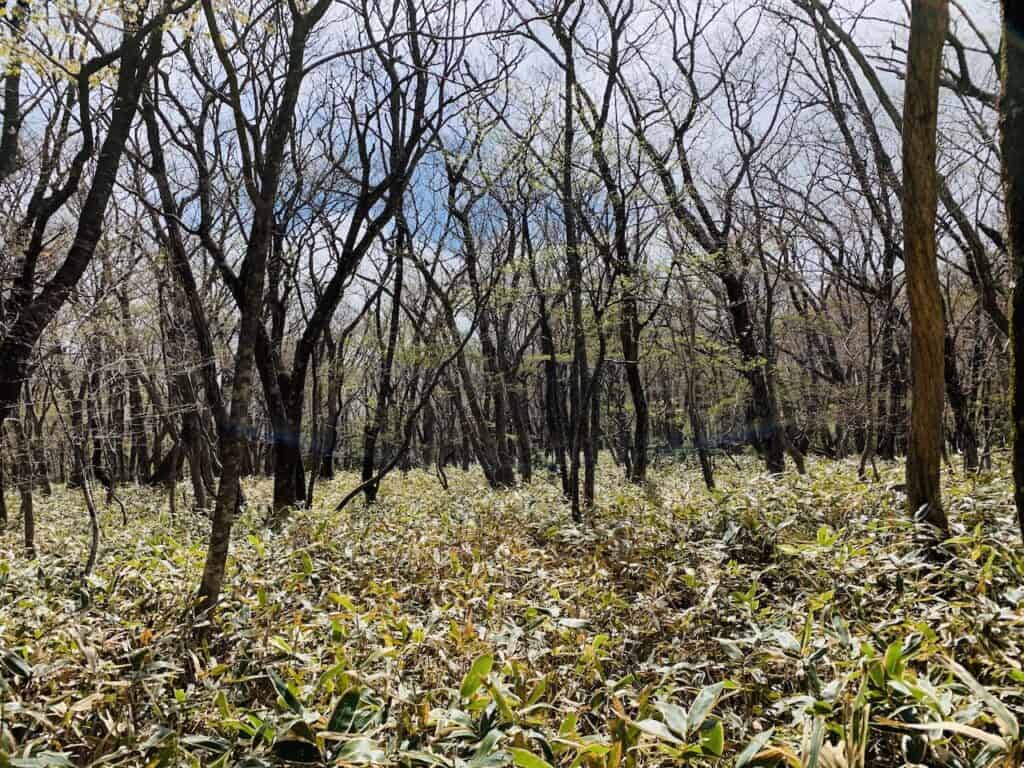
Saraoreum Turnoff to Jindallaebat Shelter (1 hour)
Next up is the Jindallaebat Field Shelter (also named the Azalea Shelter on maps).
Remember, this is where the cutoff times come into play. You simply cannot continue on past the shelter if you do not arrive in time.
Since the trail does get steeper here, you will find more and more actual steps to climb.
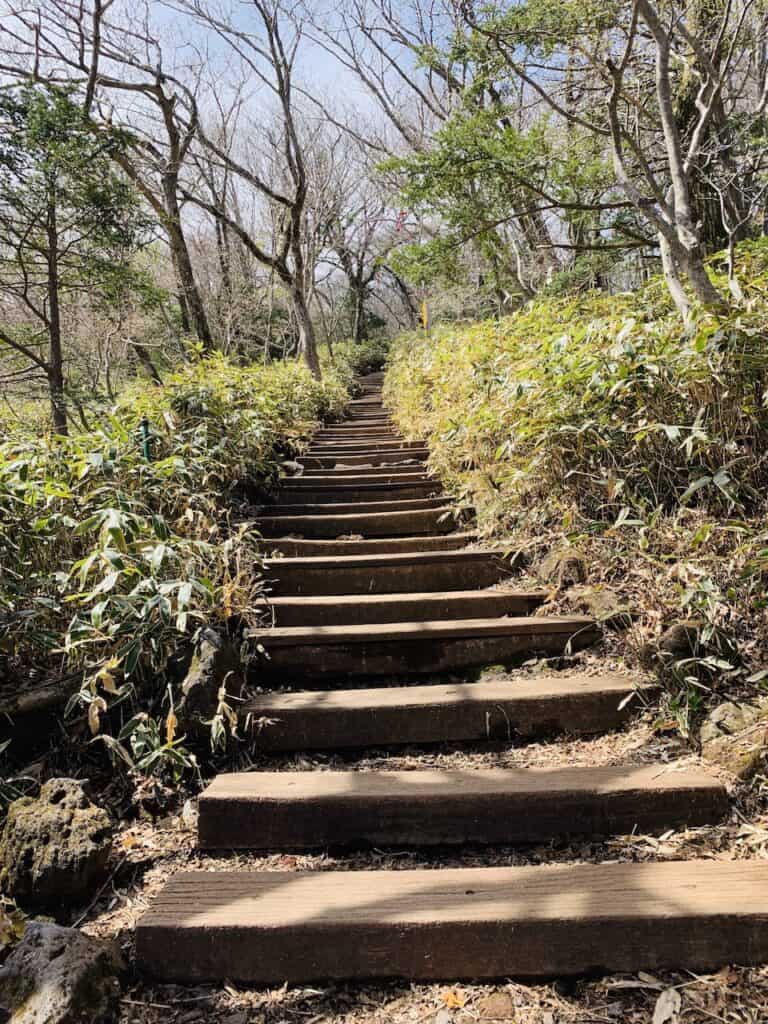
This is also where you will slowly but surely see the landscape begin opening up more. Instead of just being surrounded by trees, you will start to see some views as well.
The shelter will then come into view, where you will find several benches to sit down on as well as restrooms. You may find some snacks for sale too.
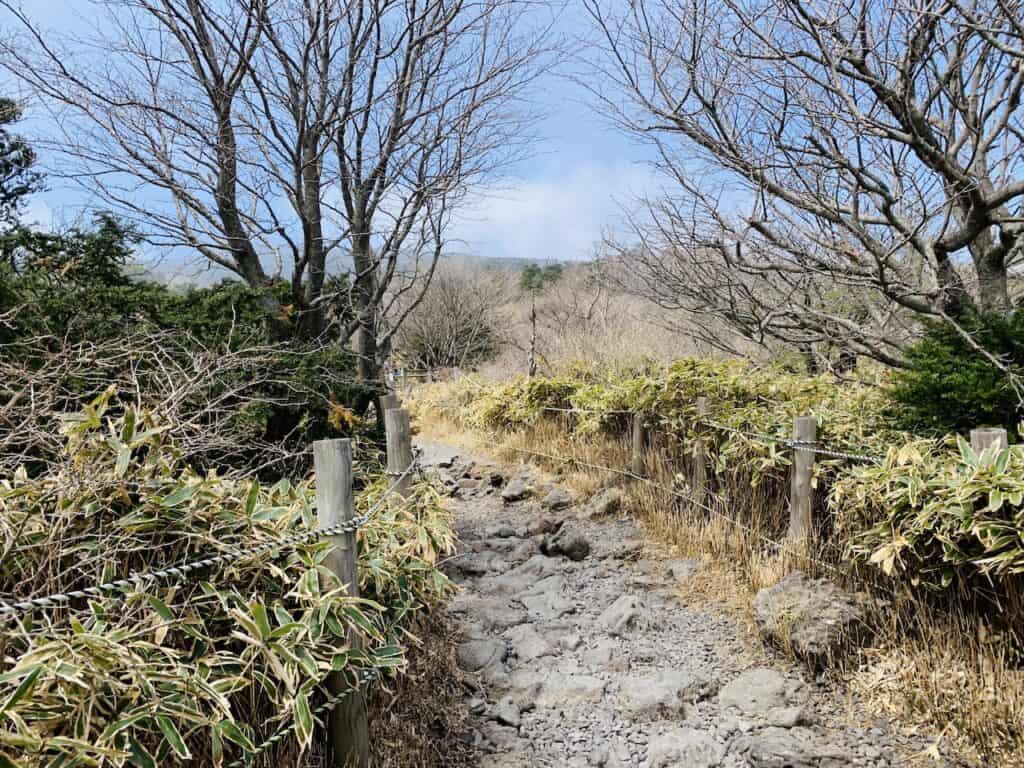
Jindallaebat Shelter to Hallasan Summit (1.5 hours)
It is now time for the final push to the summit of Mount Hallasan. Over the next 1+ hours, you will get to enjoy some more views (and plenty of stairs) as you finish the ascent.
This portion will be a mixture between actual stairs and rocks. You will want to be very careful during these sections as it may be easy to lose balance for some.
The final section of trail here is also the most difficult when it comes to elevation gain as the grade gets steeper towards the summit.
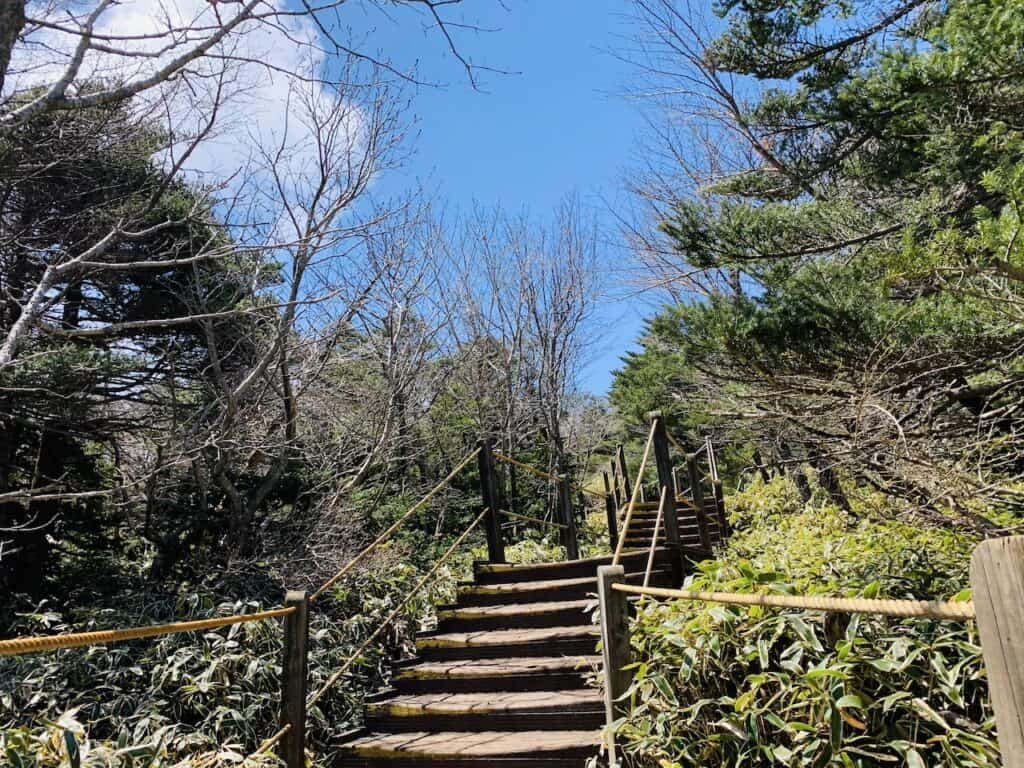
As you head higher, the surrounding views will continue to get better (at least on a clear day at least).
While the hike up to the summit is something special to take part of, I do want to mention that the mountain can frequently be covered by clouds.
Now, this should not deter you even on the day of hiking. Throughout my hike up (and during my time on Jeju), the mountain was constantly covered in clouds.
However, there is always the chance that the clouds stop closer to the summit (see photos below).
When this happens a never-ending view of a white cloud base will be underneath the volcano.
So, while I did not get to see the rest of Jeju Island from up top, the clouds were pretty spectacular to witness.
And if you happen to hike up with no view in site, you still made it to the top of South Korea!
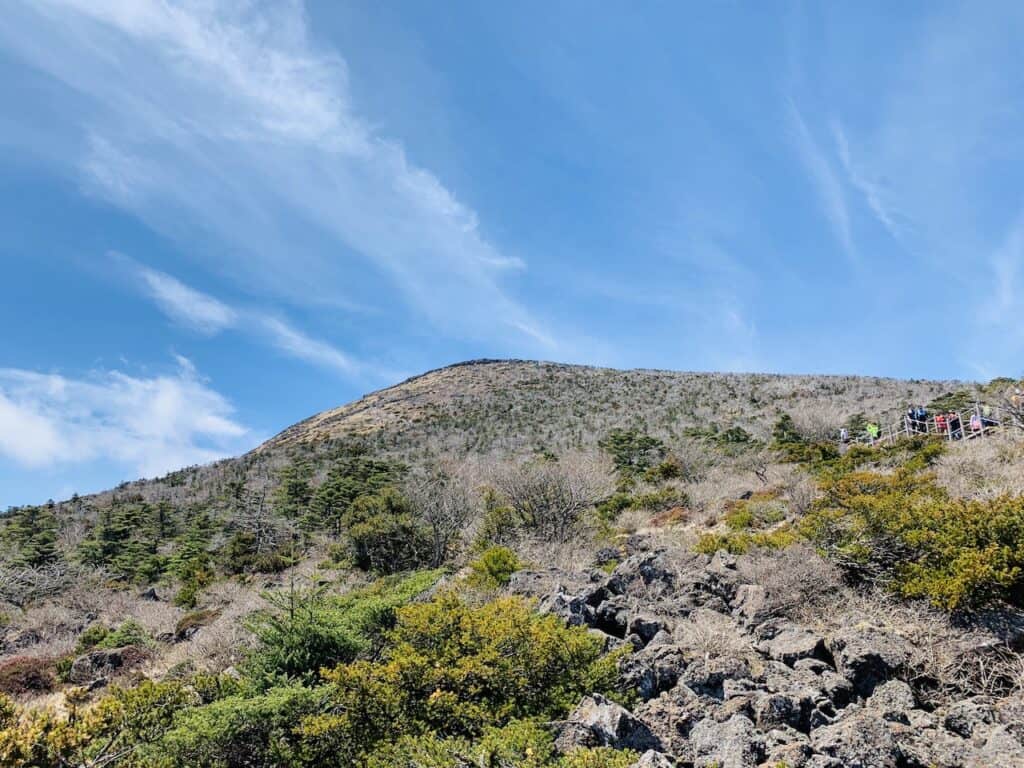
Hallasan Summit
After getting yourself up those final staircases, you will be welcomed to the summit of Mount Hallasan!
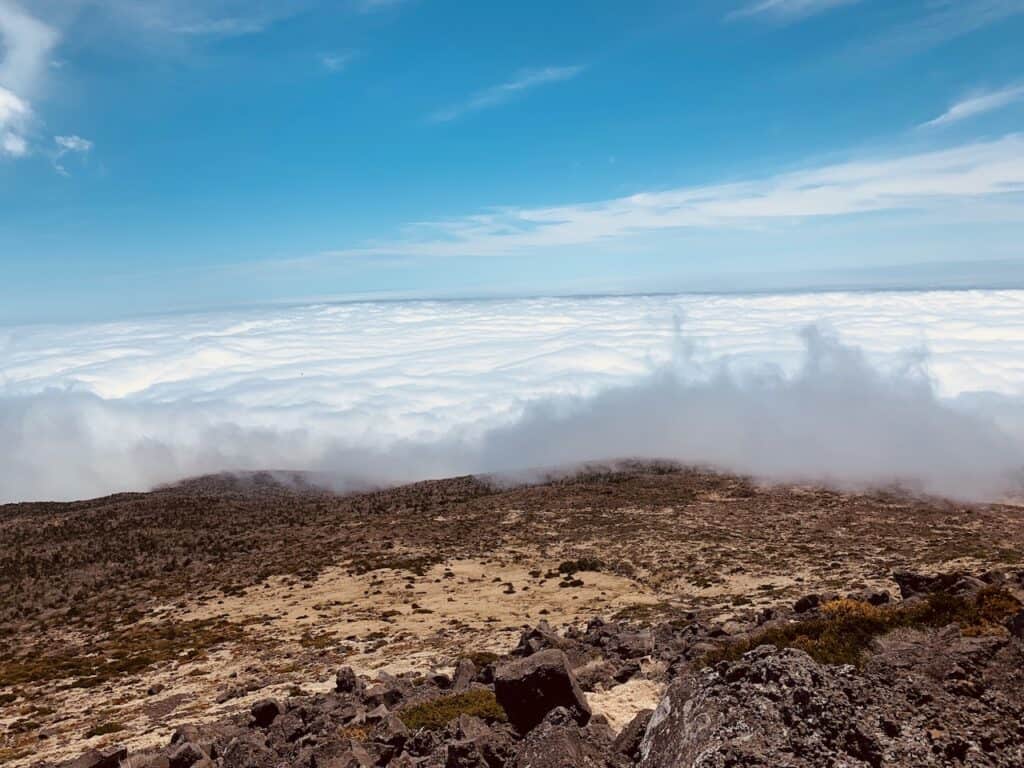
Enjoy the view from all different angles, and be sure to check out the Baeknokdam crater lake down below.
When I was there, the lake was pretty much empty. However, depending on recent weather, it can look much more like an actual lake.
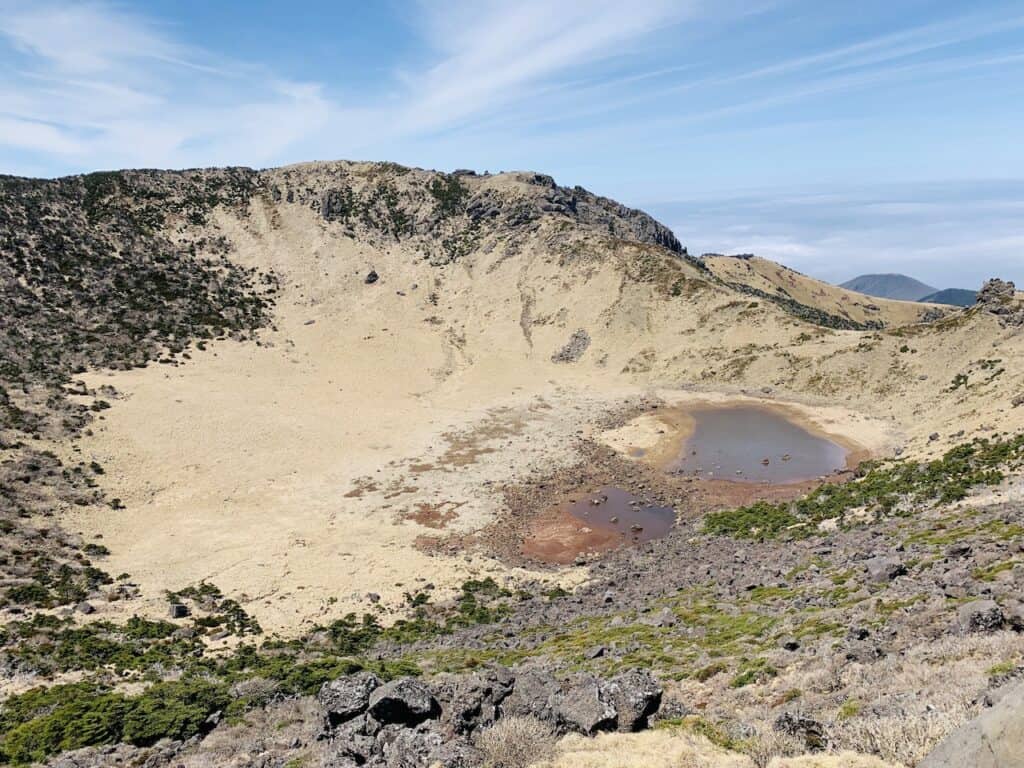
You will find plenty of spots to take a seat and walk around near the summit area.
At the top is also a celebratory summit rock, where many people take pictures with it.
Summit note: the true summit of Hallasan is inaccessible due to erosion. You will be just about 10 meters / 30 feet below the actual summit across the crater lake.
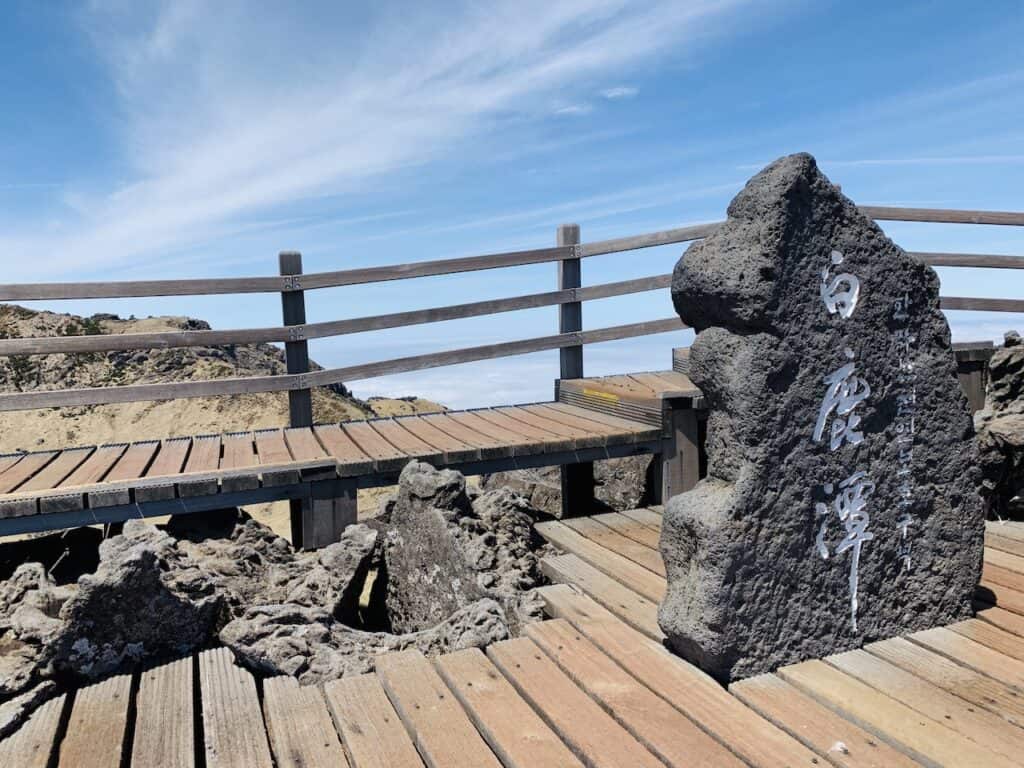
The Descent to Gwaneumsa (3 hours)
Once you are all set on the summit, it is time to head back down. The simple option is to just turn back the same way you came to avoid any logistical aspects if you have a car.
However, to switch things up a bit you can also head down to the other trailhead. In this case it was a steeper descent to Gwaneumsa.
The trails are well marked, so there shouldn’t be any issue figuring out where to go. Over the course of the next few hours, you will head all the way down the mountain.
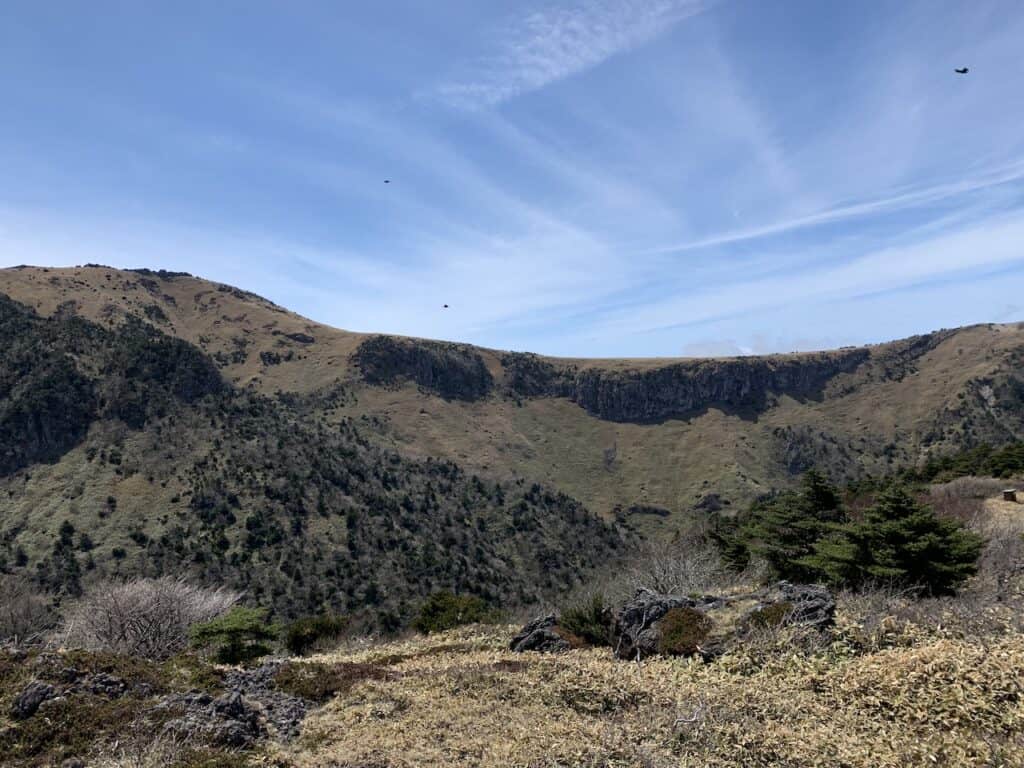
New views and new landscapes will be all around you as you pass by several points of interest along the way.
These include the helicopter pad, suspension bridge, Samgakbong Shelter, the forest, Tamla Valley and Gurlin Cave.
You will find that the route down will be steeper and harder on your knees. So, be sure to take it slow and enjoy those surroundings.
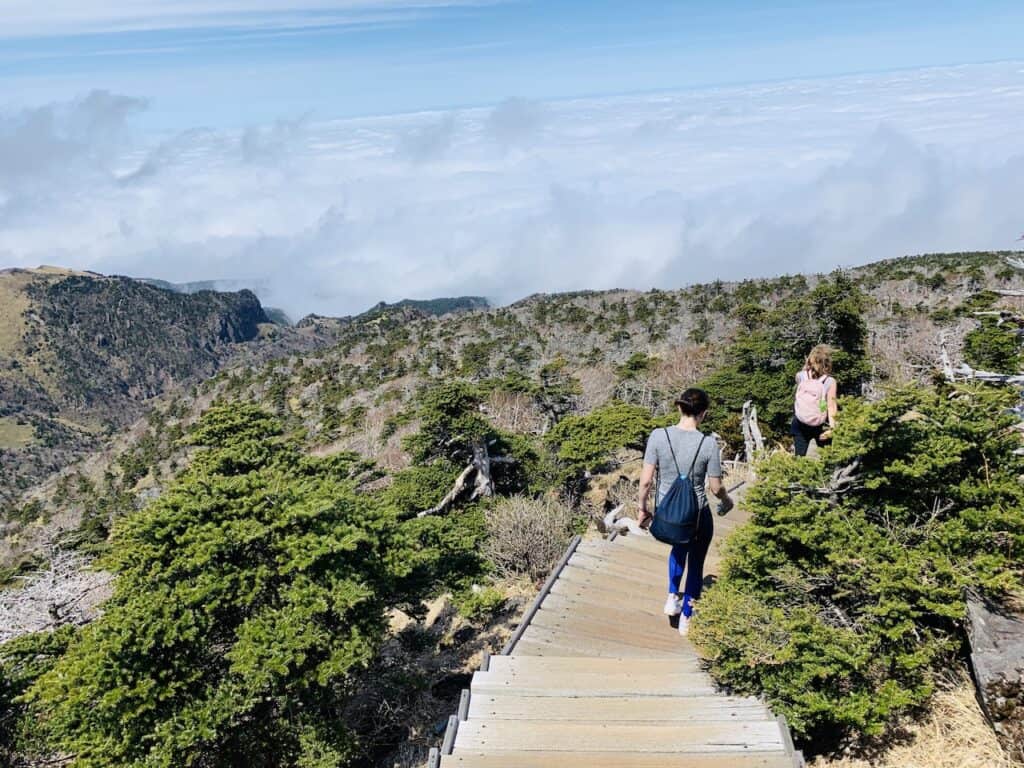
Soon, the route will re-enter the forest as you leave the views behind. More stairs and rocky terrain await as you head further down the mountainside.
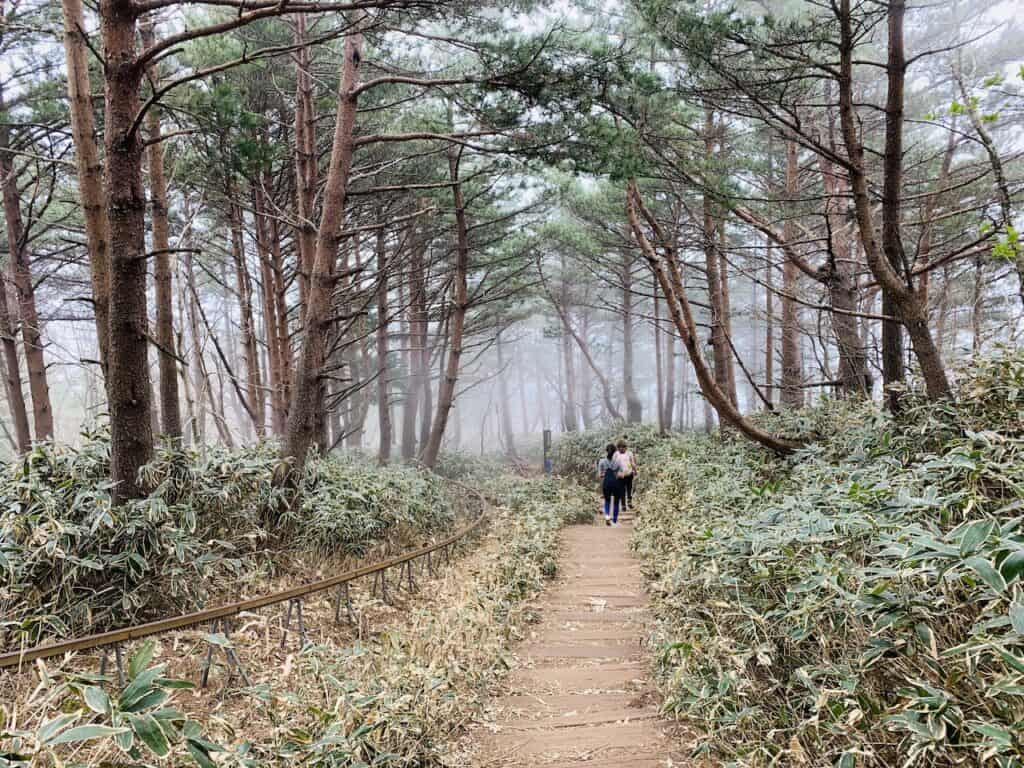
Before you know it, the trail will approach the Gwaneumsa trailhead and campsite.
Take it all in, because after a long day of hiking, you will have completed the hike up and down the highest point in South Korea.
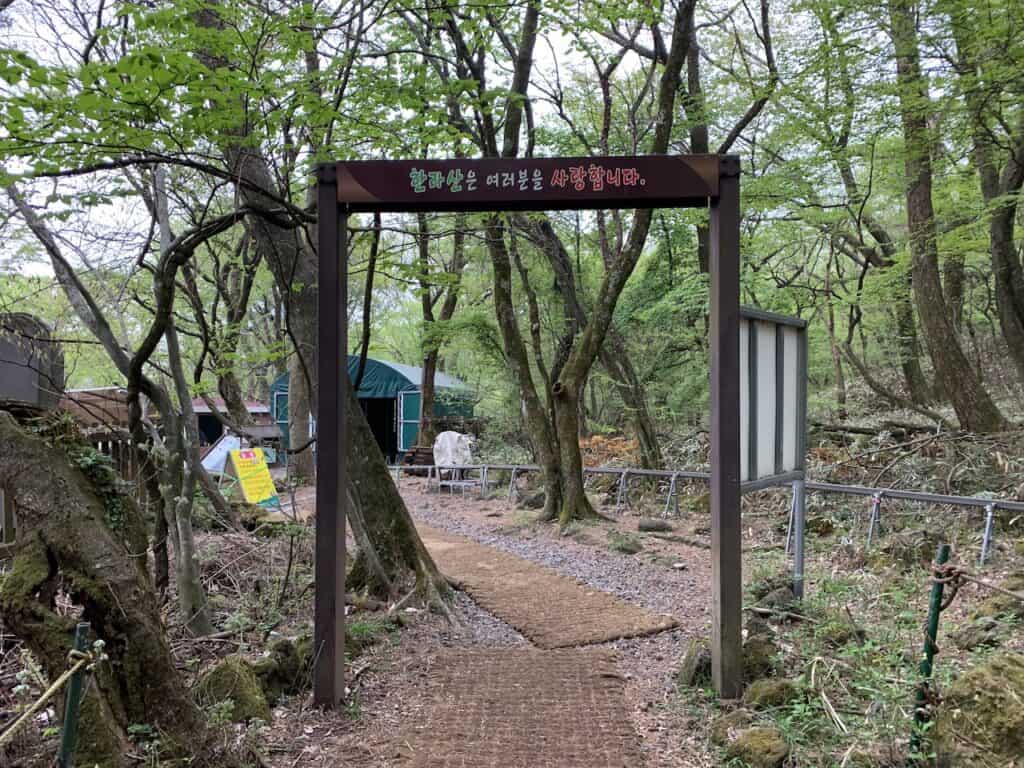
Mount Hallasan is one of my top experiences in South Korea and I hope you enjoy it as much as I do.
If you have any questions or comments about the climb, be sure to add them in below.
Also feel free to check out the other South Korea itineraries and guides up on the site like the beautiful Hamdeok Beach !
Have fun out there and safe travels!
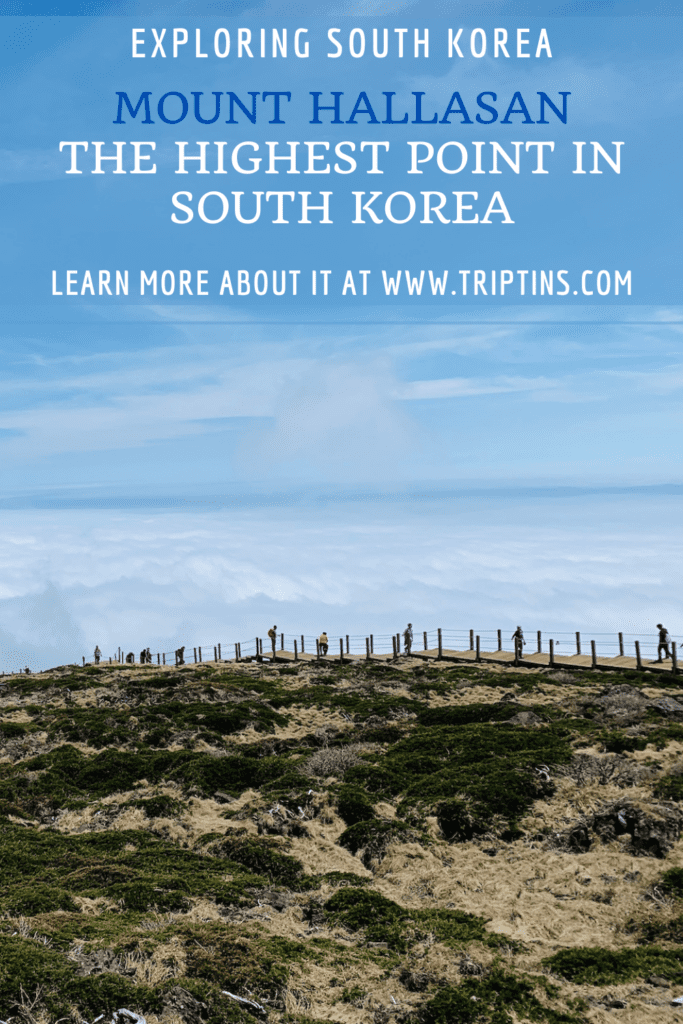
Related posts:
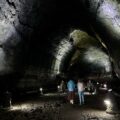
Sharing is caring!
Jeju Mt. Hallasan Hiking & Oreum Volcanic Cone Day TOUR
In the heart of Jeju Island’s picturesque landscapes, the ‘Jeju Mt. Hallasan Hiking & Oreum Volcanic Cone Day Tour’ beckons travelers to explore the island’s natural beauty firsthand.
Imagine stepping into a world where towering mountains and volcanic cones paint a stunning backdrop for an adventure like no other. As participants set out on this journey with Viator, they can anticipate more than just a mere hike – a transformative experience awaits those who seek to uncover the secrets of Jeju’s rugged terrain.
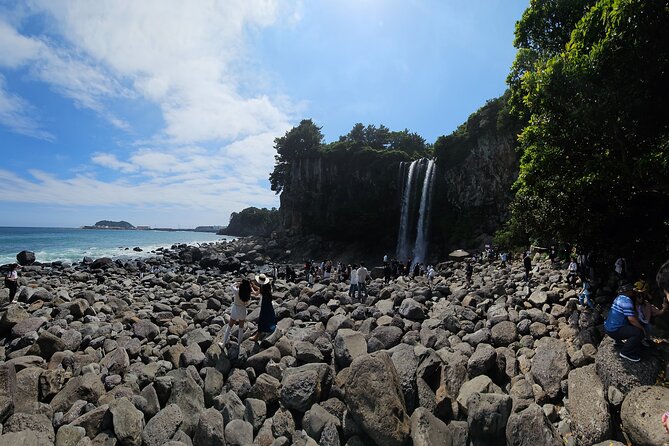
- Hike Mt. Hallasan and explore Oreum Volcanic Cone for a thrilling adventure.
- Pack essentials like hiking boots, sunscreen , and water for a rewarding experience.
- Witness geological wonders shaped by volcanic activity, unique flora , and diverse wildlife .
- Indulge in local Jeju cuisine while savoring the stunning landscapes and biodiversity.
Here's some more nearby activities we've reviewed
- Jeju Island Taxi Tour – West Day Tour
- Small Group Jeju Private Full-Day Tour of East and South and West
- Sumokwon Park / Dongmun Night Market Experience
- 5Hour Private Taxi Driver Tour in Jeju(Cherry Blossoms Tour )
Tour Overview
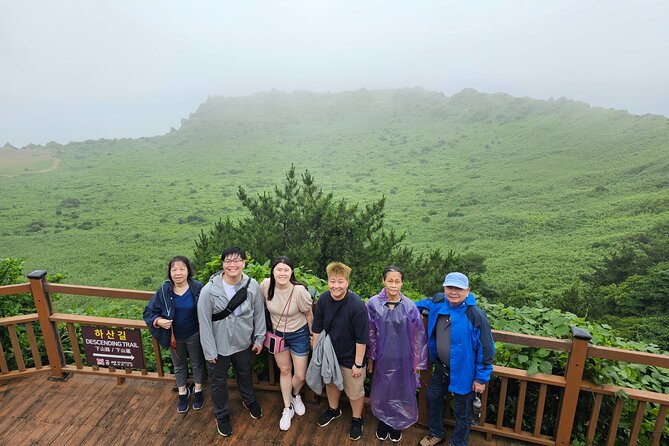
The tour begins with an invigorating hike up Jeju’s majestic Mt. Hallasan and exploration of the fascinating Oreum Volcanic Cone. When preparing for the adventure, packing essentials such as sturdy hiking boots, sunscreen , water bottles , and light snacks is crucial.
As the tour progresses, participants can indulge in the delightful local cuisine, savoring traditional Jeju dishes that offer a taste of the island’s rich culinary heritage. Exploring the unique flavors and ingredients of Jeju’s gastronomy adds a cultural dimension to the hiking experience, allowing visitors to immerse themselves fully in the island’s charm.
From the natural beauty of the landscapes to the culinary delights, this tour offers a comprehensive and enriching way to experience Jeju’s wonders.
Hiking Mt. Hallasan
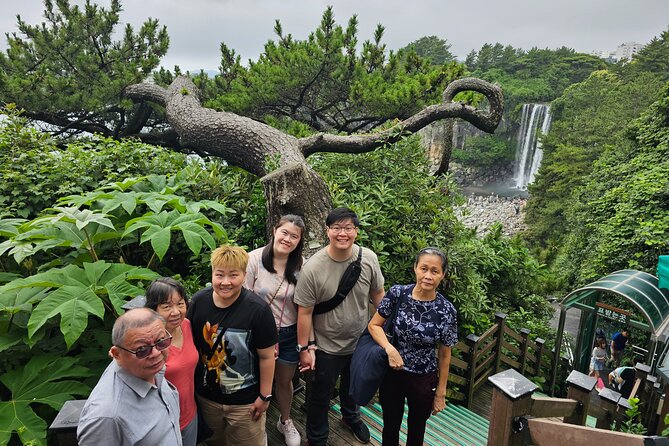
Beginning the ascent up Jeju’s iconic Mt. Hallasan promises a thrilling adventure into the heart of this volcanic wonder. The trail difficulty varies depending on the chosen route, with Seongpanak Trail offering a slightly easier path compared to the more challenging Eorimok Trail. Hikers should be prepared for steep inclines and rocky terrain along the way.
To tackle this adventure, it’s recommended to wear sturdy hiking boots with good ankle support to navigate the rugged trails comfortably. Plus, a backpack with essentials such as water, snacks, sunscreen, a hat , and a light rain jacket is advisable. Proper gear like trekking poles can also provide stability on the uneven terrain, ensuring a safe and enjoyable hike up Mt. Hallasan.
Exploring Oreum Volcanic Cone
Exploring the Oreum Volcanic Cone on Jeju Island offers visitors a unique opportunity to witness the geological wonders shaped by volcanic activity. The cone, a smaller volcanic formation compared to Mt. Hallasan, showcases intricate geology with layers of hardened lava and ash, providing insight into the island’s volcanic history.
As visitors hike through this terrain, they can observe the diverse local flora adapting to the harsh volcanic soil, including vibrant wildflowers and unique plant species. Wildlife enthusiasts may also spot various bird species and small animals that have made this volcanic landscape their home.
Day Tour Itinerary
Hiking through the Oreum Volcanic Cone unveils a captivating journey into Jeju Island’s unique geological features and diverse ecosystem. The day tour itinerary includes:
Packing Essentials : Participants are advised to bring sturdy hiking shoes, sunblock , a hat , and plenty of water to stay hydrated during the trek.
Local Cuisine Tasting : Exploring the Oreum Volcanic Cone offers opportunities to taste local Jeju cuisine, such as Hallabong oranges, black pork dishes , and seafood delicacies.
Embarking on this adventure not only promises stunning natural landscapes but also a chance to savor the flavors of Jeju’s culinary delights.
Tour Highlights
While uncovering the gems of the Jeju Mt. Hallasan Hiking & Oreum Volcanic Cone Day Tour, participants can anticipate an exhilarating exploration of the island’s captivating natural wonders.
The trail difficulty ranges from moderate to challenging, offering hikers a rewarding experience suitable for various skill levels. Along the way, hikers are treated to breathtaking scenic views of lush forests, rolling hills , and the surrounding ocean.
Wildlife sightings are common, with chances to spot unique bird species, deer , and even the occasional rabbit. As hikers traverse the terrain, they’re surrounded by a rich diversity of local flora , including vibrant wildflowers and ancient trees.
This tour promises an unforgettable journey through Jeju Island’s stunning landscapes and biodiversity.
Booking Information
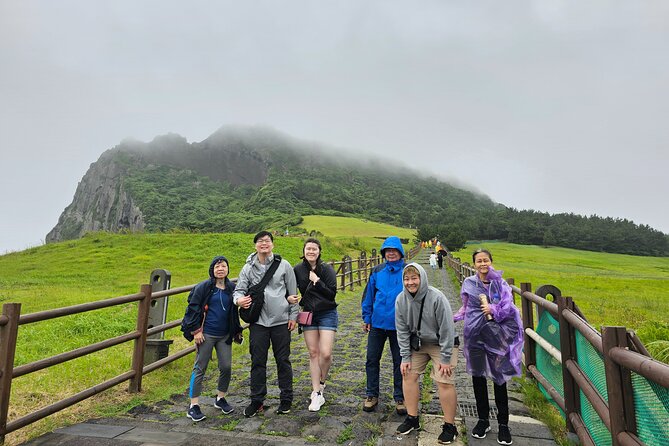
To secure a spot on the Jeju Mt. Hallasan Hiking & Oreum Volcanic Cone Day Tour, prospective participants must complete the booking process through Viator, Inc. When booking , participants have the following payment options :
Credit Card : Secure your reservation by paying with a credit card. Viator accepts major credit cards for a hassle-free booking experience.
Online Payment : Complete your booking online using secure payment gateways to confirm your adventure on the Jeju Mt. Hallasan Hiking & Oreum Volcanic Cone Day Tour.
PayPal : Utilize PayPal as a convenient payment option for booking your tour. Viator ensures a seamless payment process for all participants.
Safety and Guidelines
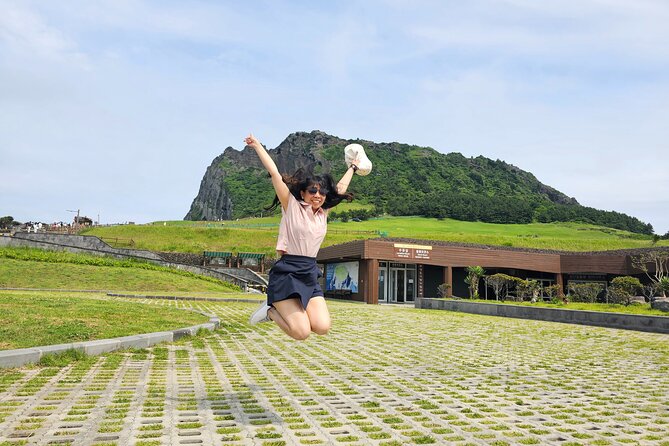
For a safe and enjoyable experience on the Jeju Mt. Hallasan Hiking & Oreum Volcanic Cone Day Tour, participants are encouraged to adhere closely to the provided safety guidelines. Safety measures are in place to ensure the well-being of all hikers.
It’s crucial to stay on designated paths, follow the instructions of the tour guides, and wear appropriate footwear for the terrain. In case of any emergencies, familiarize yourself with the emergency procedures outlined at the beginning of the tour.
It’s recommended to carry essentials like water, snacks, and a first aid kit. By prioritizing safety and following the guidelines, hikers can fully enjoy the beauty of Mt. Hallasan and the Oreum Volcanic Cone.
Here's a few more nearby tours and experiences we have reviewed.
- Jeju Island Private Taxi Tour : UNESCO Day Tour
- Jeju Private Day Tour – South of Jeju Island
- Private Day Tour World Natural Heritage in Jeju Island
- Jeju Canola Blossoms Festival -Horse Riding-Folk Village Tour
- Private Tour in South and East in Jeju Island
- UNESCO Small Group Day Tour of Jeju Island – East Course
Common questions
What is the difficulty level of the jeju mt. hallasan hiking & oreum volcanic cone day tour.
The difficulty level of the Jeju Mt. Hallasan hiking & Oreum Volcanic Cone day tour varies, with challenging terrains like steep inclines and rocky paths. Hikers should be prepared for a strenuous but rewarding adventure through diverse landscapes.
Are Meals or Snacks Included in the Tour Package?
Meals or snacks are not included in the tour package. Travelers with specific dietary restrictions can bring their own picnic lunch or snacks to enjoy local cuisine. It’s advisable to pack provisions to suit individual needs.
Is Transportation to and From the Tour Starting Point Provided?
Transportation arrangements to and from the tour starting point are typically provided. Visitors should confirm this information with the tour operator beforehand. The tour itinerary will specify the transportation details and duration for a seamless experience.
Are There Any Age Restrictions for Participating in the Tour?
Age restrictions may apply for tour participation. Tour accommodations should specify any age limitations. It’s crucial to check for any age requirements before booking to ensure a smooth and enjoyable experience for all participants.
Is There a Recommended Packing List for the Tour Participants?
When preparing for the tour, participants should pack recommended gear like sturdy hiking shoes, sunscreen, water, snacks, a hat, and a camera. These essential items will ensure comfort and enjoyment during the excursion.
Here's more of our most recent tour reviews happening neaby
- Jeju Island: Customized Private Full-Day Van Tour
- Jeju Island: Highlights Tour With Attraction Tickets & Lunch
- Jeju Island: Full-Day East Jeju Bus Tour With Local Lunch
- Jeju: Eastern Jeju Highlights Day Trip
- Jeju: Mt. Hallasan Hike and UNESCO Sites Day Tour
- Jeju Island: Private Car Charter Tour
- Jeju Premium Small Group UNESCO Day Tour – East
- Jeju: South Korea/ Asia Esim Roaming Mobile Data Plan
- Private Taxi Transfer From Jeju City Downtown to Jeju Airport
- Full Day Jeju Island Private Tour for East Course With Korean Black Pork BBQ
- Full-Day Jeju Island WEST Tour (Entrance Fee Included)
Get ready to experience the beauty of Jeju Island like never before with the ‘Jeju Mt. Hallasan Hiking & Oreum Volcanic Cone Day Tour’ by Viator
From the challenging hike up Mt. Hallasan to the fascinating exploration of the Oreum Volcanic Cone, this tour offers a thrilling adventure in the heart of nature.
Book your spot now and learn about the enchanting landscapes of Jeju on this unforgettable day tour.
Winter is here! Check out the winter wonderlands at these 5 amazing winter destinations in Montana
- Travel Destinations
How To Hike Mt Hallasan – Jeju Island Volcano Hiking
Published: September 9, 2023
Modified: December 28, 2023
by Ania Lund
- Plan Your Trip
- Travel Tips
Introduction
Welcome to Jeju Island, home to the majestic Mt Hallasan, an iconic volcano that offers breathtaking hiking opportunities. With its UNESCO World Heritage status, Mt Hallasan attracts adventurers from all over the world who seek to conquer its challenging trails and marvel at its natural beauty.
Standing at an impressive 1,950 meters above sea level, Mt Hallasan is the highest peak in South Korea. Its unique geological features, lush greenery, and panoramic views make it a must-visit destination for nature enthusiasts and outdoor lovers.
Embarking on a hike up Mt Hallasan is an unforgettable experience that allows you to connect with nature and challenge your physical and mental limits. The mountain offers a range of trails, each with its own unique characteristics and difficulty levels, ensuring there is a suitable option for hikers of all abilities.
In this guide, we will delve into the nitty-gritty details of planning your Mt Hallasan hike, including how to get there, choosing the right trail, essential hiking gear, safety precautions, and accommodation options. Whether you are a seasoned hiker or a beginner looking for an adventure, this article will equip you with the knowledge and tips you need to make your Mt Hallasan hike a memorable success.
So, dust off your hiking boots, pack your backpack, and let’s explore the wonders that await you on Mt Hallasan!
Planning Your Hike
Before embarking on your Mt Hallasan adventure, it’s important to spend some time planning your hike to ensure a smooth and enjoyable experience. Here are a few key considerations to keep in mind:
- Choose the right time: The best time to hike Mt Hallasan is during the spring (March to May) and autumn (September to November) seasons when the weather is mild and the foliage is vibrant. It’s advisable to avoid the summer months due to the high humidity and the winter months when the trails may be icy and dangerous.
- Check the weather forecast: Keep a close eye on the weather forecast in the days leading up to your hike. Mt Hallasan’s weather can be unpredictable, so it’s essential to be prepared for sudden changes and adjust your plans accordingly.
- Obtain the necessary permits: To hike Mt Hallasan, you’ll need to obtain a free hiking permit, which can be obtained online or at the National Park Information Center. The permit is required for environmental protection and safety management purposes.
- Consider your fitness level: Mt Hallasan offers trails of varying difficulty levels, so it’s important to choose a trail that matches your fitness level and hiking experience. If you’re a beginner, opt for shorter and less strenuous routes, while experienced hikers can challenge themselves with more demanding trails.
- Plan your itinerary: Decide whether you want to complete the hike in a single day or spread it out over multiple days. There are accommodation options available on the mountain for those who wish to break up their hike.
- Research trail conditions: Each trail on Mt Hallasan has its own unique features and terrain. Research the trail you plan to take, including its length, elevation gain, and any potential obstacles or hazards you may encounter. This will help you prepare mentally and physically for the hike.
- Pack essential supplies: Ensure you have all the necessary hiking gear, such as sturdy hiking shoes, comfortable clothing suitable for the weather conditions, a backpack, plenty of water, snacks, a map or GPS device, a first aid kit, and sunscreen. Be mindful of the weight of your backpack and pack only what is necessary to lighten your load.
- Inform others of your plans: Always let someone know about your hiking plans, including the trail you’ll be taking and your estimated time of return. This is important for safety reasons and can help authorities locate you in case of an emergency.
By carefully planning your Mt Hallasan hike, you can ensure a safe, enjoyable, and memorable adventure on this stunning volcano. Take the time to prepare adequately, and get ready to embark on an incredible journey through nature’s wonders.
Getting to Mt Hallasan
Getting to Mt Hallasan is relatively straightforward, as it is located in the heart of Jeju Island. Here are some common transportation options to reach the mountain:
- By Air: If you are coming from outside Jeju Island or from another country, the most convenient way to reach Mt Hallasan is by flying into Jeju International Airport. The airport is well connected to major cities in South Korea, as well as several international destinations. From the airport, you can take a taxi or public transportation to your accommodation near the mountain.
- By Public Transportation: Jeju Island has a reliable public transportation system, including buses that can take you to the starting points of the Mt Hallasan trails. There are two main bus routes to consider:
- Bus Route 1: This route runs from Jeju-si (Jeju City) to Seongpanak, the starting point for the Seongpanak Trail. Buses on this route are less frequent, so it’s recommended to check the schedule in advance.
- Bus Route 2: This route operates from Jeju-si to Eorimok, where you can access the Eorimok Trail. Buses on this route are more frequent than Route 1, making it a popular choice for hikers.
- By Car: Renting a car is a convenient option if you prefer more flexibility and independence in your transportation. There are several car rental companies available on Jeju Island, including at the airport. Keep in mind that parking spaces near the trails can be limited, especially during peak seasons, so arrive early to secure a spot.
- By Taxi: Taxis are readily available on Jeju Island and can be a convenient option if you are traveling in a group or prefer a direct and hassle-free journey. Inform the taxi driver of your desired trailhead, and they can drop you off at the closest point.
- By Tour Bus: If you prefer a guided experience or want to leave the transportation logistics to someone else, you can join a tour group that offers transportation to Mt Hallasan. These tours typically include round-trip transportation, a guide, and sometimes meals or snacks during the hike.
Regardless of the transportation method you choose, it’s important to consider the operating hours and schedules, especially for buses and tour groups. Additionally, allow for ample travel time to ensure you arrive at the mountain with enough daylight to complete your hike comfortably.
Now that you know how to get to Mt Hallasan, it’s time to choose the trail that suits your preferences and embark on an unforgettable adventure in the heart of Jeju Island’s natural beauty.
Choosing the Right Trail
When it comes to hiking Mt Hallasan, there are several trails to choose from, each offering a unique experience and level of difficulty. Here are some of the main trails to consider:
- Seongpanak Trail: The Seongpanak Trail is the most popular and well-maintained trail on Mt Hallasan. It starts from the Seongpanak Visitor Center and stretches for about 9.6 kilometers to the summit. This trail is relatively easier compared to others, with a gradual ascent and beautiful scenery along the way. It is suitable for hikers of all levels, including beginners.
- Eorimok Trail: The Eorimok Trail is another popular option and offers a slightly more challenging hike. It begins at the Eorimok parking lot and is around 7.6 kilometers long. The trail boasts stunning views of the surrounding landscapes and provides a more direct route to the summit. It is a good choice for intermediate hikers who want a slightly more strenuous experience.
- Gwaneumsa Trail: The Gwaneumsa Trail is known for its diverse flora and fauna, providing hikers with a unique and immersive hiking experience. This trail starts from the Gwaneumsa Temple area and is approximately 8.7 kilometers long. It is considered one of the more challenging options, with steep inclines and rocky terrain. It is recommended for experienced hikers who are up for a more demanding adventure.
- Donnaeko Trail: For those seeking a shorter hike, the Donnaeko Trail is an excellent choice. This trail starts from the Donnaeko parking lot and is approximately 3.7 kilometers long. While it may be shorter in distance, it still offers scenic views and a moderately steep climb. This trail is suitable for beginners or those with limited time.
- Yeongsil Trail: The Yeongsil Trail is known for its tranquility and picturesque surroundings. Starting from the Yeongsil parking lot, this trail is approximately 3.7 kilometers long. It offers a peaceful and less crowded hiking experience, with beautiful forests and streams along the way. The Yeongsil Trail is ideal for hikers who want to avoid the crowds and immerse themselves in nature.
When choosing the right trail for your Mt Hallasan hike, consider your fitness level, hiking experience, time available, and personal preferences. It’s also important to check the latest trail conditions and any closures or restrictions that may be in place. This information can be obtained from the National Park Information Center or through online resources.
Remember, regardless of which trail you choose, always stay on designated paths, follow the trail markers, and adhere to safety guidelines. Respect the natural environment and leave no trace of your visit.
Now that you have an idea of the different trails available, it’s time to lace up your hiking boots and set off on an unforgettable journey up the slopes of Mt Hallasan.
Essential Hiking Gear
When preparing for a Mt Hallasan hike, having the right gear can make a significant difference in your comfort, safety, and overall enjoyment. Here are some essential items to pack for your adventure:
- Hiking Shoes: Invest in a pair of sturdy, comfortable hiking shoes that provide good ankle support and grip. The trails on Mt Hallasan can be uneven and rocky, so proper footwear is essential to prevent slips and injuries.
- Layered Clothing: Dressing in layers allows you to adjust your clothing according to the changing weather and temperature. Start with a moisture-wicking base layer to keep you dry, add a insulating mid-layer for warmth, and top it off with a waterproof and wind-resistant outer layer.
- Backpack: Carry a lightweight backpack with enough storage space to hold your essentials. Opt for a backpack with padded straps and a waist belt for added comfort. Consider using a waterproof cover or packing your gear in waterproof bags to protect them from rain or moisture.
- Water and Snacks: Stay hydrated throughout your hike by carrying an ample supply of water. It’s important to drink regularly to prevent dehydration, especially during hot weather. Pack lightweight, energy-boosting snacks like trail mix, energy bars, and fruits to keep you fueled and energized along the way.
- Navigational Tools: Bring a map or a GPS device to help you navigate the trails, especially if you are unfamiliar with the area. Familiarize yourself with trail markers and signs to ensure you stay on the right path.
- Sun Protection: Protect yourself from the sun’s harmful rays by wearing a hat, sunglasses, and sunscreen with a high SPF. Mt Hallasan’s trails offer limited shade, so it’s important to shield yourself from excessive sun exposure and prevent sunburn.
- First Aid Kit: Pack a basic first aid kit that includes adhesive bandages, blister pads, antiseptic wipes, pain relievers, and any necessary personal medications. It’s always better to be prepared for minor injuries or ailments that may occur along the way.
- Camera or Smartphone: Capture the beautiful views and memories of your Mt Hallasan hike by bringing a camera or smartphone. Just remember to be mindful of your surroundings and not let photography distract you from the trail.
- Trash Bag: Help keep the mountain clean by packing a small trash bag to collect any waste you generate during your hike. Leave no trace behind and respect the environment.
These are just some of the essential gear items to consider when preparing for your Mt Hallasan hike. Remember to pack light, but also ensure you have everything you need for a safe and enjoyable experience.
Now that you’re equipped with the right gear, get ready to hit the trails and immerse yourself in the natural beauty of Mt Hallasan!
Safety Precautions
While hiking Mt Hallasan can be an exhilarating adventure, it’s important to prioritize your safety and take necessary precautions. Here are some safety tips to keep in mind before and during your hike:
- Check the weather: Before heading out, always check the weather forecast for Mt Hallasan. Avoid hiking during inclement weather, such as heavy rain or thunderstorms, as it can make the trails slippery and dangerous.
- Hike with a buddy: It’s safer to hike with a companion or in a group. In case of an emergency or an accident, having someone by your side can provide help and support. If hiking alone, inform someone of your hiking plans and expected return time.
- Stay on designated trails: Follow the marked trails and avoid venturing off the path. Straying from the designated trails can lead to accidents, getting lost, or causing harm to the fragile ecosystem of Mt Hallasan.
- Be aware of your limits: Assess your fitness level and hiking experience honestly. Choose a trail that matches your abilities and experience. Pushing yourself beyond your limits can lead to exhaustion, injuries, or getting stranded on the mountain.
- Stay hydrated and fueled: Drink plenty of water and eat snacks regularly to keep your energy levels up. Dehydration and lack of nutrition can affect your stamina, concentration, and overall well-being during the hike.
- Wear appropriate clothing: Dress in layers and wear clothing suitable for the weather conditions. Protect yourself from extreme temperatures, wind, and sunburn. Consider packing rain gear if there’s a chance of precipitation.
- Be cautious of wildlife: Mt Hallasan is home to various wildlife species, including snakes. Take precautions to avoid encounters with wildlife by staying on the trail, keeping a safe distance, and refraining from feeding or provoking any animals you may encounter.
- Respect the environment: Mt Hallasan is a protected area, so it’s essential to respect the environment and follow the principles of Leave No Trace. Pack out all your trash, avoid littering, and leave the natural surroundings as you found them.
- Follow park regulations: Familiarize yourself with the rules and regulations set by the national park authorities. This includes obtaining the necessary hiking permits, respecting trail closures, and adhering to any restrictions or guidelines in place.
- Carry a whistle and flashlight: In case of emergency or if you get lost, a whistle can help attract attention and a flashlight will assist you in navigating during low light conditions. These small items can make a big difference in your safety.
- Trust your instincts: If you feel uncomfortable or unsure about continuing the hike, it’s okay to turn back or seek assistance. Trust your instincts and prioritize your well-being above all else.
By taking these safety precautions and staying vigilant throughout your hike, you can minimize risks and have a safe and enjoyable experience on Mt Hallasan.
Now that you’re well-informed about safety measures, it’s time to gear up and embark on your Mt Hallasan adventure with confidence!
Hiking Mt Hallasan: Day 1
As you set out on your Mt Hallasan adventure, Day 1 will involve reaching the base of the mountain, starting your ascent, and enjoying the natural wonders along the trail. Here’s a breakdown of what to expect on the first day of your hike:
In the morning, make your way to the starting point of your chosen trail. Whether you opt for the Seongpanak Trail, Eorimok Trail, Gwaneumsa Trail, or another option, each trail has its own unique features and starting locations. Be sure to check the trailhead information and plan your transportation accordingly.
Arriving at the trailhead, take a moment to soak in the surroundings and familiarize yourself with the trail. Ensure you have the necessary permits and hiking gear, and take a final restroom break before beginning your ascent.
As you start your hike, you’ll be greeted by the lush greenery and diverse flora of Mt Hallasan. The well-marked trails and signposts will guide you along the way, ensuring you stay on track. Take your time to enjoy the beautiful scenery, listen to the sounds of nature, and breathe in the fresh mountain air.
Throughout the day, you’ll encounter different points of interest along the trail, such as scenic viewpoints, rest areas, and natural landmarks. These provide opportunities to take breaks, rehydrate, and replenish your energy. Remember to stay hydrated and snack regularly to keep your stamina up.
As you continue your ascent, you’ll slowly gain altitude, and the landscape may change as you reach higher elevations. Take advantage of the designated rest areas to catch your breath, admire the panoramic views, and capture memorable photos.
Depending on the trail and your pace, you may choose to hike for a few hours or spend the entire day on the mountain. It’s important to listen to your body and recognize your limits. If you feel fatigued or experience any discomfort, take breaks or adjust your pace accordingly.
By the end of Day 1, you’ll reach a designated stopping point or a mountain shelter if you choose to stay overnight. Take time to rest, refuel, and appreciate the beauty of the mountain as the sun sets. This is also a great opportunity to connect with fellow hikers and share stories of your adventures.
Remember to follow park regulations and respect the designated hours for hiking. It’s essential to abide by any restrictions or closures for your safety and to protect the natural environment.
With an exciting first day behind you, prepare for an evening of relaxation and rejuvenation, surrounded by the serene ambiance of Mt Hallasan. Get a good night’s sleep as you eagerly await Day 2’s adventures, which will bring you closer to the summit of this majestic volcanic mountain.
Hiking Mt Hallasan: Day 2
Welcome to Day 2 of your Mt Hallasan hike, where you’ll continue your ascent and conquer the summit of this magnificent volcano. Here’s what to expect on the second day of your adventure:
Start your day early to catch the breathtaking sunrise and embrace the serene beauty of the mountain. After a hearty breakfast and packing up your belongings, get back on the trail and continue your journey toward the summit.
As you ascend higher, you’ll notice a change in the scenery and vegetation. The air will likely become cooler, and the terrain may become more challenging. On this day, your determination and resilience will be put to the test.
Be prepared for steeper inclines, rocky paths, and potentially more strenuous sections of the trail. Take your time and pace yourself accordingly to avoid overexertion. Remember to keep drinking water and refuel with snacks to maintain your energy levels.
Along the way, appreciate the unique geological formations and awe-inspiring views that Mt Hallasan provides. The panoramic vistas of the surrounding landscape will motivate you to keep pushing forward and reach the summit.
As you near the top, you may encounter the final stretch where the trail becomes more demanding. This section may require additional caution and concentration. Stay focused and follow the trail markers to ensure you’re on the right path.
Reaching the summit of Mt Hallasan is a momentous achievement that offers a sense of accomplishment and awe-inspiring views. Take a moment to soak in the stunning panoramic vistas, capturing photos to forever remember this remarkable experience.
At the peak, you’ll find a marker indicating the summit’s elevation and may even see other hikers celebrating their own triumphs. Cherish the moment and savor the rewarding feeling of conquering the highest point on the island.
After relishing the summit and reflecting on your journey, it’s time to begin your descent. Descending can sometimes be more challenging than ascending, as it puts strain on different muscle groups. Take it slow, use trekking poles if needed, and be mindful of your footing.
As you make your way down the mountain, don’t forget to treasure the beauty of Mt Hallasan’s surroundings. The sights and sounds of nature will accompany you throughout your descent, providing a peaceful atmosphere and a sense of gratitude for the natural wonders of the island.
By the end of Day 2, you’ll descend to the base of Mt Hallasan, completing your unforgettable hiking adventure. Take a moment to reflect on your accomplishments and the memories you’ve created during your time on this majestic volcano.
As you bid farewell to Mt Hallasan, carry the lessons, experiences, and breathtaking views with you, cherishing them for a lifetime. The journey may be over, but the spirit of adventure and appreciation for nature will stay with you always.
Accommodation Options
After a day of hiking Mt Hallasan, you’ll likely want a comfortable place to rest and rejuvenate. Fortunately, there are accommodation options available near the mountain to suit different preferences and budgets. Here are some accommodation choices to consider:
- Mountain Shelters: For an immersive and rustic experience, you can choose to stay in one of the mountain shelters located along the trails of Mt Hallasan. These shelters provide basic amenities such as bunk beds or heated floors, communal restrooms, and shared cooking facilities. Staying in a mountain shelter allows you to fully immerse yourself in the hiking experience and connect with fellow hikers.
- Nearby Hotels and Guesthouses: If you prefer more comfortable accommodations, there are hotels and guesthouses available in the towns surrounding Mt Hallasan. These establishments offer a range of options, from budget-friendly guesthouses to upscale hotels with amenities such as private rooms, ensuite bathrooms, and in-house restaurants. Staying in a nearby hotel or guesthouse provides convenience and access to additional services and facilities.
- Pensions and Homestays: For a more personalized and local experience, consider staying in a pension or homestay. These accommodations are often run by local families who welcome guests into their homes. You can expect a cozy atmosphere, traditional Korean hospitality, and the opportunity to learn about the local culture and way of life. Pensions and homestays offer a unique and authentic experience for those seeking a deeper connection with the destination.
- Renting a Vacation Home: If you’re traveling in a larger group or prefer more privacy, renting a vacation home or villa near Mt Hallasan can be an excellent option. These properties offer ample space, private facilities, and the flexibility to cook your meals. Renting a vacation home also allows you to enjoy more time together as a group and create a home-away-from-home atmosphere.
- Camping: For adventurous souls who enjoy sleeping under the stars, there are camping areas near Mt Hallasan where you can pitch your tent and spend the night surrounded by nature. These campsites often provide basic facilities such as restroom facilities and designated fire pits. Camping offers a budget-friendly option and an immersive experience in the great outdoors.
It’s important to note that availability, amenities, and prices may vary depending on the season and demand. It’s advisable to make reservations in advance, especially during peak hiking seasons, to secure your preferred accommodation option.
Regardless of the accommodation you choose, take the time to relax, reflect on your hiking experience, and recover for the next adventure that awaits you. Remember to respect the accommodation rules and be mindful of noise levels to ensure a pleasant stay for both yourself and other guests.
With a comfortable place to rest, you’ll wake up refreshed and ready to embark on more exploration or bid farewell to the beautiful Mt Hallasan, carrying with you memories of a remarkable hiking journey.
Tips for a Successful Hike
Embarking on a hike up Mt Hallasan requires careful planning and preparation. To ensure a successful and enjoyable experience, consider the following tips:
- Start early: Begin your hike early in the morning to allow ample time to complete the trail and avoid hiking in the heat of the day. Starting early also increases your chances of witnessing stunning sunrise views.
- Pace yourself: Take breaks as needed and maintain a steady pace throughout your hike. It’s better to conserve your energy and go at a comfortable pace rather than rushing and getting exhausted quickly.
- Stay hydrated: Carry an adequate amount of water and drink regularly to stay hydrated. Dehydration can lead to fatigue and diminish your hiking experience. Consider using a hydration bladder or water bottles with a filter to refill along the way.
- Pack snacks: Keep energized by bringing lightweight, high-energy snacks. Trail mix, granola bars, and dried fruit are excellent options for quick and nutritious fuel during the hike.
- Use sunscreen: Apply sunscreen with a high SPF to protect your skin from the sun’s harmful rays, even on cloudy days. Reapply as needed during your hike to ensure continuous protection.
- Listen to your body: Pay attention to your body’s signals and rest when needed. Hiking can be physically demanding, so it’s important to take breaks and listen to any signs of fatigue or discomfort.
- Practice Leave No Trace: Respect nature by leaving no trace of your visit. Pack out all trash and dispose of it properly. Minimize your impact on the environment by staying on designated trails and refraining from damaging or removing any natural resources.
- Be prepared for changing weather: Dress in layers to accommodate the changing weather conditions on the mountain. Bring a waterproof jacket or poncho in case of rain and be prepared for sudden temperature drops and strong winds.
- Be respectful of wildlife: Observe wildlife from a safe distance and avoid feeding or approaching them. Respect their natural habitat and do not disturb or harm any animals you encounter along the trail.
- Stay on the designated trails: Straying from the marked trails can be dangerous and harmful to the environment. Follow the trail markers and signs to ensure your safety and preserve the mountain’s delicate ecosystems.
- Enjoy the journey: Take the time to appreciate the beautiful landscapes, serene surroundings, and unique experiences that Mt Hallasan offers. Remember to be present in the moment and create memories that will last a lifetime.
By following these tips, you’ll increase your chances of having a successful and memorable hike up Mt Hallasan. Always prioritize safety, respect nature, and allow yourself to fully immerse in the wonders of this remarkable volcanic mountain.
Now, armed with these valuable tips, go forth and conquer Mt Hallasan with confidence, creating unforgettable memories along the way.
Congratulations! You’ve reached the end of our comprehensive guide to hiking Mt Hallasan on Jeju Island. Now equipped with valuable knowledge and tips, you’re ready to embark on an extraordinary adventure up this majestic volcano.
Mt Hallasan offers a unique opportunity to connect with nature, challenge yourself physically, and immerse yourself in the beauty of Jeju Island’s natural landscapes. From planning your hike to choosing the right trail, packing essential gear to prioritizing safety, we’ve covered it all to ensure a successful and enjoyable experience.
As you ascend the trails, you’ll encounter breathtaking scenery, diverse flora and fauna, and unforgettable views of Jeju Island. Take the time to savor every step, immerse yourself in the serenity of the mountain, and appreciate the wonders of nature that surround you.
Remember to respect the environment and leave no trace of your visit. Preserve the beauty of Mt Hallasan for future generations by following park regulations, staying on designated trails, and minimizing your impact on the ecosystem.
Whether you choose to stay in a mountain shelter, nearby hotel, pension, or campsite, take the time to rest, rejuvenate, and reflect on your accomplishments. Every moment spent on Mt Hallasan is an opportunity to immerse yourself in the grandeur of nature and to create lasting memories.
As you bid farewell to this remarkable volcano, you’ll carry with you the sense of achievement, the connection to nature, and the appreciation for the beauty of Jeju Island. Your Mt Hallasan hike will forever be etched in your memory as a testament to your strength, resilience, and love for the great outdoors.
So, lace up your hiking boots, pack your backpack, and experience the awe-inspiring journey that awaits you on Mt Hallasan. Let the magic of the mountain unfold before your eyes as you conquer its trails, bask in its scenic vistas, and embark on an adventure like no other.
Remember, the key to a successful hike is proper planning, careful preparation, and an open heart and mind. Embrace the challenges, cherish the moments, and let Mt Hallasan leave an indelible mark on your soul.

- Privacy Overview
- Strictly Necessary Cookies
This website uses cookies so that we can provide you with the best user experience possible. Cookie information is stored in your browser and performs functions such as recognising you when you return to our website and helping our team to understand which sections of the website you find most interesting and useful.
Strictly Necessary Cookie should be enabled at all times so that we can save your preferences for cookie settings.
If you disable this cookie, we will not be able to save your preferences. This means that every time you visit this website you will need to enable or disable cookies again.
Hallasan National Park
is located in the southernmost part of Korea, on Jeju Island. Standing 1,950m above sea level Hallasan is the highest mountain in South Korea, and is a dormant volcano with a lake crater at its summit. The entire area has been designated as a nature preservation zone and UNESCO Natural Biosphere Reserves in an effort to protect the rare plants and animals that inhabit the mountain park. Every season at Hallasan presents a different and spectacular view, but it is most renown for its springtime beauty, when the azaleas are in full bloom. If you want to reach the summit of the mountain you should take the Seongpanak and Gwaneumsa courses and be at the departure point before 9 am. The other courses Yongsil and Eorimok do not go the very top, only to Wiseoreum (1.700 m). Camping is not allowed in Hallasan National Park.
Seongpanak course – Summit (9.6km /about 5 hrs for one-way
Gwaneumsa course – Summit (8.72km/about 6 hours for one-way)
Eorimok course – Wiseoreum (4.7km /about 3 hrs for one-way)
Yongsil course Wiseoreum (3.7km/ about 3 hours for one-way)
Tongnaeko course – South wall Fork and is linked with Wiseoreum (7 km/ about 4.5 hours for one way)
Seokkuram Trail – (1.5 km/ about 1 hour)
Side trails – there are several side trails
For more information check the website www.hallasan.go.kr or please contact us and we will be happy to help you.
- Today's deals
- Search travel guides

Top Things to Do in Jeju Island | Hiking Hallasan + Best Tours & Attractions
For a tiny island floating in the Yellow Sea, Jeju Island is packed with adventure! Things to do in Jeju Island include everything from hiking up Mount Hallasan to shopping at Dongmun Traditional Market in Jeju City . Known as the “Island of the Gods,” Jeju Island also is the top honeymoon destination for Korean newlyweds, so the island is a perfect spot for a romantic getaway. With romance, trekking, beaches, horse riding, top-notch diving and sunsets on white sandy beaches, Jeju Island has no shortage of attractions, museums, beaches and breathtaking nature treks!
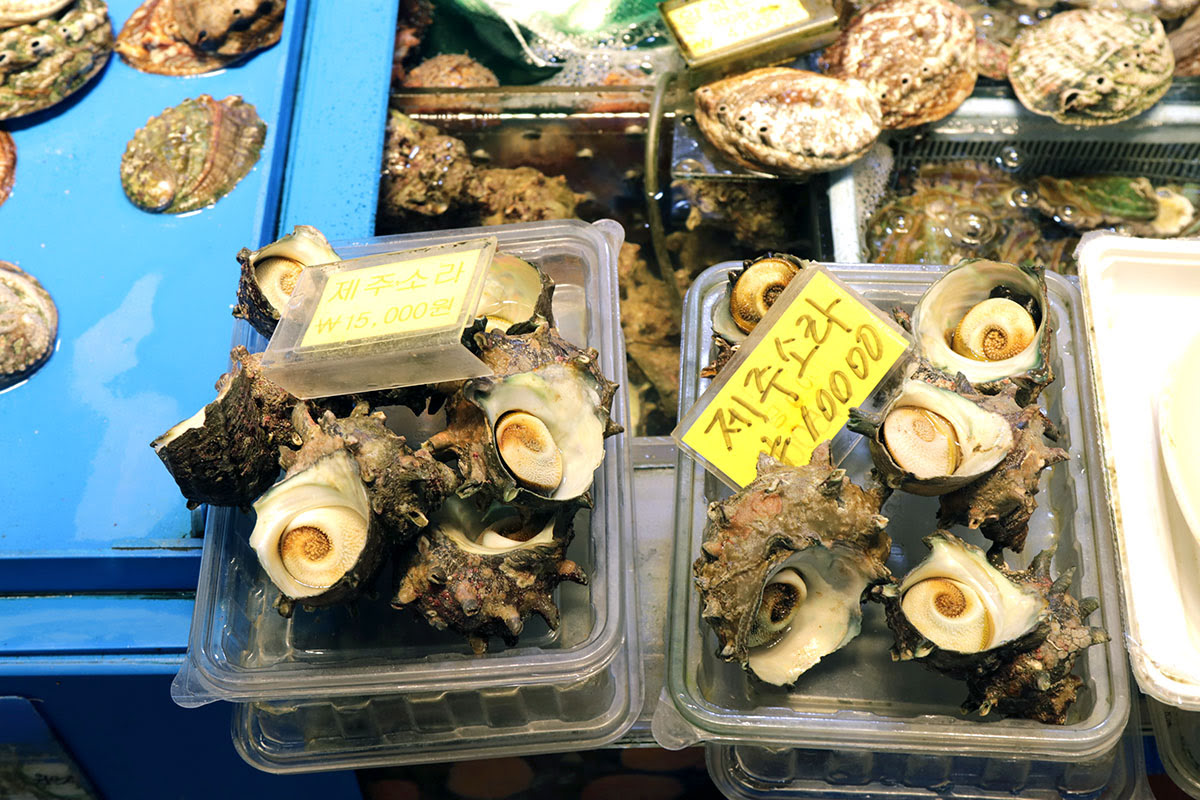
Things to Do in Jeju Island | Jeju City Shopping & Attractions
No matter which Jeju Island attractions you have on your itinerary, your first stop most likely will be Jeju City . The island’s capital is home to Jeju International Airport and the Port of Jeju , which is the landing point for daily ferries from mainland South Korea. (Ferries also take passengers to the eastern side of the island to the smaller island of Udo and the Seongsan region.) While many things to do in Jeju Island lie outside the city limits, Jeju City is a great home base and contains several can’t-miss tourist attractions as well.
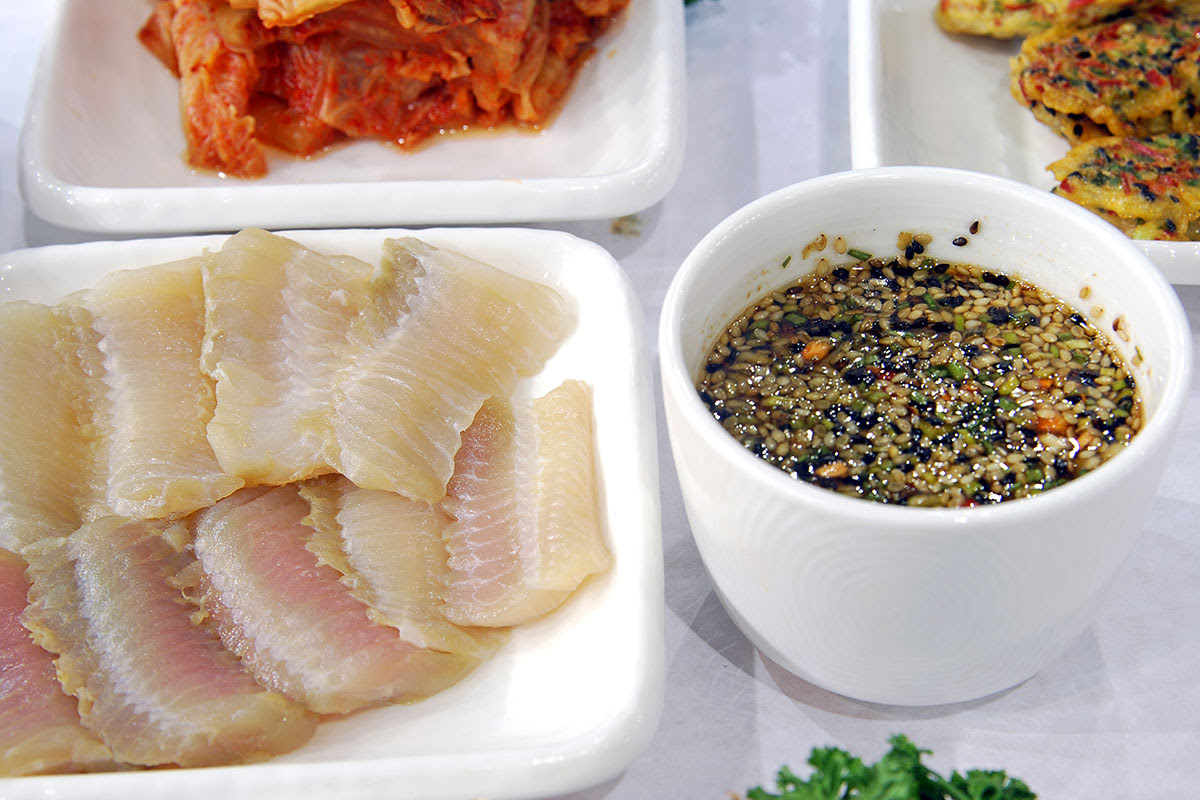
Top Jeju City tourist attractions
Two of the best things to do in Jeju City are shopping and eating. Luckily, Jeju City is home to Dongmun Traditional Market , where travelers can gorge their eyes and stomachs on fresh seafood as well as pick up island souvenirs. This diverse one-stop shopping spot is Jeju Island ’s largest and oldest market, and it is open daily from 8 a.m. to 9 p.m.
What to eat at Dongmun Traditional Market
While shopping and sightseeing are the reason many people visit the market, the most popular activity at Dongmun Traditional Market is eating! Not only is the seafood fresh from the Yellow Sea, but it also can be cooked for customers on the spot. Some can’t-miss dishes to try at Dongmun Traditional Market include meat noodles, black pork and fresh abalone (jeon-bok). Adventurous foodies can look for samples of horsemeat sushi and sashimi.
What to buy at Dongmun Traditional Market
Dongmun Traditional Market features everything from fresh seafood to Korean souvenirs. Travelers will find an abundance of fresh fruits and vegetables to try on the spot and plenty of dried herbs, bamboo goods, chocolates, clothing and hand-crafted items to take home as keepsakes and gifts.
FIND & BOOK A HOTEL IN JEJU ISLAND TODAY
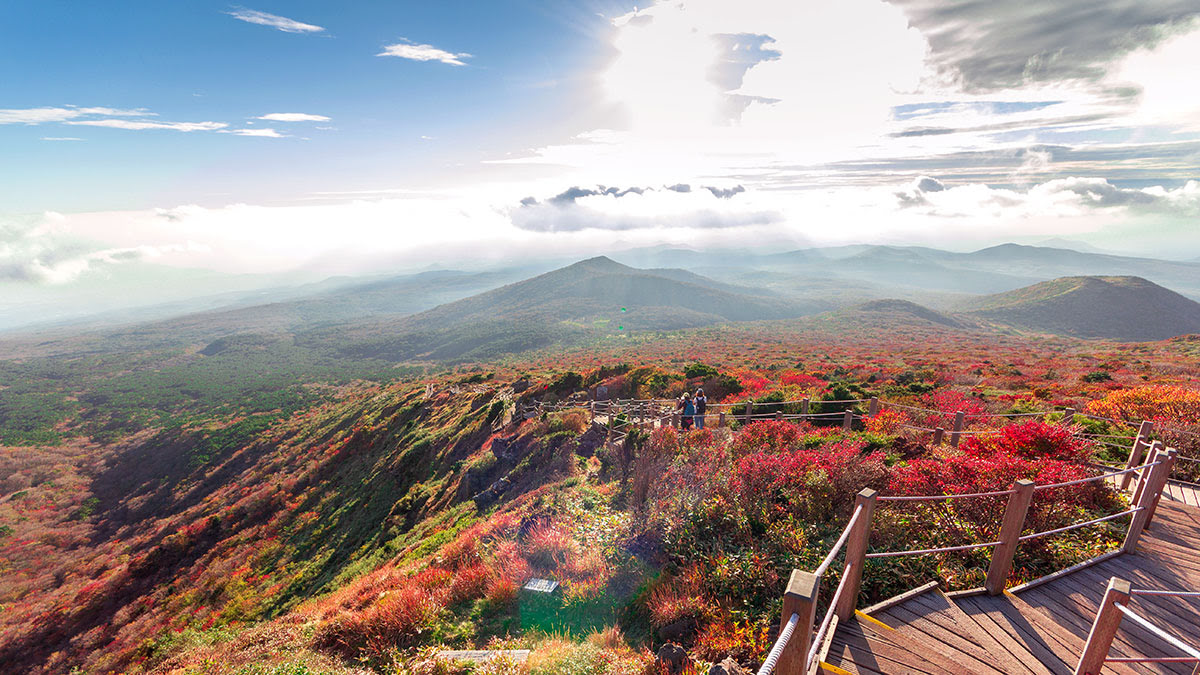
Things to Do in Jeju Island | Day trips from Jeju City
Jeju City is indeed a great place to spend a day, but travelers wanting to get up close and personal with nature should plan on taking a few day trips from Jeju City . Many of the island’s top destinations can be reached by bus or taxi in less than two hours, and several attractions have nearby accommodations, so if you fall in love with one area and want to stay longer – no problem!
- Hallasan – one of the top things to do in Jeju Island is hiking up Hallasan (Halla Mountain). A shield volcano and the highest peak in South Korea, Hallasan is located smack-dab in the middle of the island and is open for daytime hikes. The mountain makes up Hallasan National Park and contains scenic foliage year-round. It also is listed as a UNESCO Biosphere Reserve. Hallasan features several hiking trails that range from short one-hour walks for beginners and laid-back backpackers to long 10-hour hikes for die-hard trekkers.
Seongsan Ilchulbong (Sunrise Peak) – perfect for travelers wanting a bit of exercise and a stunning view, Seongsan Ilchulbong (also known as Sunrise Peak) is an extinct volcano on the eastern edge of Jeju Island . Travelers who arrive early can climb 99 steps to the top to watch the sun rise over the sea and then descend to the coastline to watch the haenyeo, or female free divers, bring in their fresh seafood catches for the day. After that, sit down to a delicious breakfast or lunch at the “Sea Woman Restaurant.”
Jusangjeolli Cliffs (Jusangjeollidae) – for a relaxing day or sightseeing by the sea, head to Jusangjeolli Cliffs on the southwestern coast of the Jungman Region in Jeju Island . This natural phenomenon was formed from years of waves hitting the cliffside and shaping the rock into unique-shaped columns. Tour guides are available in the area, or guests can wander aimlessly around walking trails and nature paths.
Hallim Park – about an hour west of Jeju City is Hallim Park . This gorgeous garden complex contains waterfalls, caves, a small zoo and a folk village. Plus, it’s only a short walk to the twinkling white sands of Hyeopjae Beach . Hallim Park is open from 8:30 a.m. to 5:30 p.m. daily.
Jeju Folk Village – catch a glimpse of what island life was like in the 1890s with a visit to Jeju Folk Village . The restored community, located on the southeast side of the island, features more than 100 homes and thousands of folk displays. The village is one of the best things to do in Jeju Island : it’s as educational as it is family-friendly! Jeju Folk Village is open from 8:30 a.m. to 6 p.m. every day. Admission is 11,000 won for adults, 9,000 won for senior citizens, 8,000 won for teenagers and 7,000 won for children.
Yeomiji Botanical Garden & Cheonjeyeon Waterfalls – these neighboring attractions are well worth a trip to the southwest side of Jeju Island . Cheonjeyeon Waterfalls features three waterfalls that can be reached via hiking trails, and Yeomiji Botanical Garden is a large outdoor garden and greenhouse, perfect for a relaxing day of exploring South Korea’s native flora and fauna. Yeomiji Botanical Garden is open from 9 a.m. to 6 p.m. daily. Tickets are 1,000 won for adults and 500 won for children younger than 13 years old.
Manjanggul Cave – a designated UNESCO World Heritage Site and one of the most popular things to do in Jeju Island , Manjanggul Cave is a 7.4 kilometer-long walkable lava tube that contains natural cave formations (like stalactites and stalagmites) as well as an abundance of bats and insects! Manjanggul Cave is open from 9 a.m. to 6 p.m. Admission is 2,000 won.
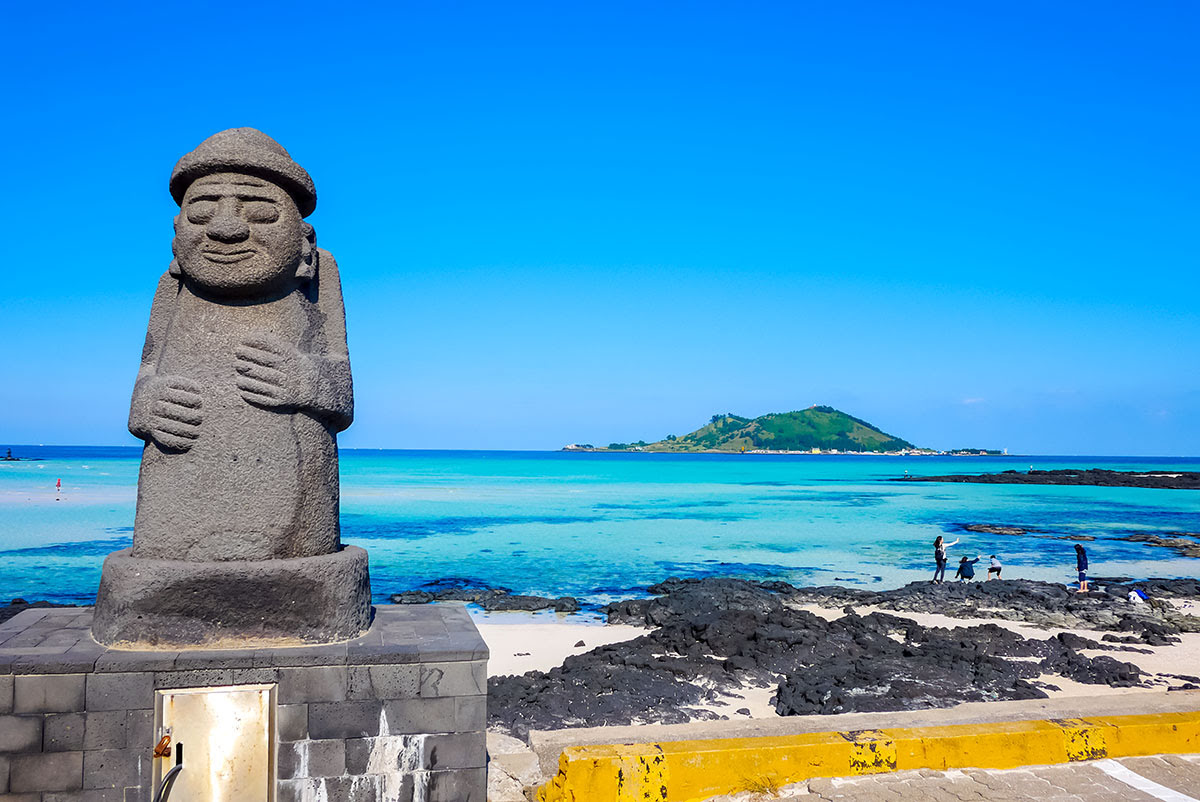
Where to Stay in Jeju Island
Jeju Island generally is divided by its four most popular areas for tourists – Jeju City , Seogwipo , Seongsan and Aewol . Plenty of hotels and accommodations are available in each area. Here are four to get you started. (Just click any link or photo to explore more great hotels in Jeju Island !)
Check In to Ocean Suites Jeju Hotel , Step Out to Jeju City
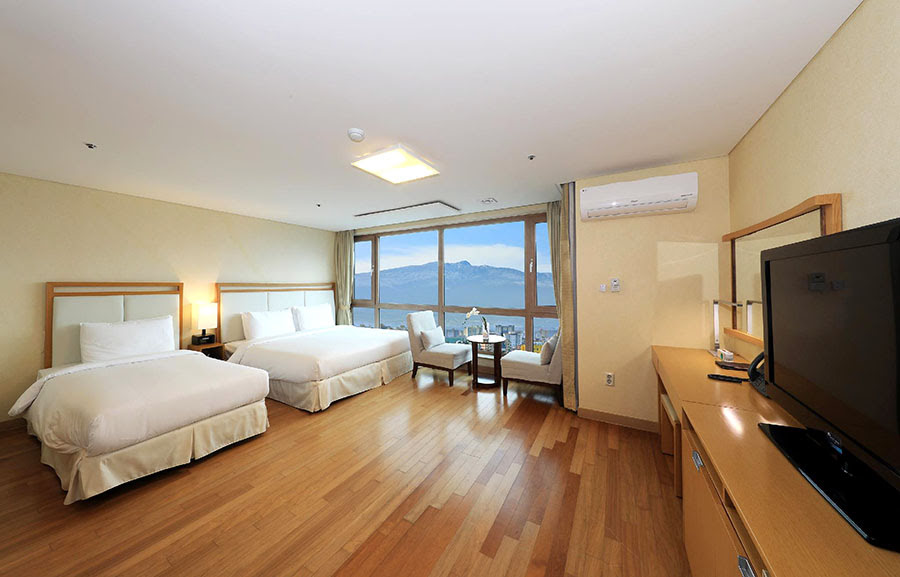
FIND & BOOK A HOTEL IN JEJU CITY TODAY
Check In to Hotel Gaon J Stay , Step Out to Seogwipo
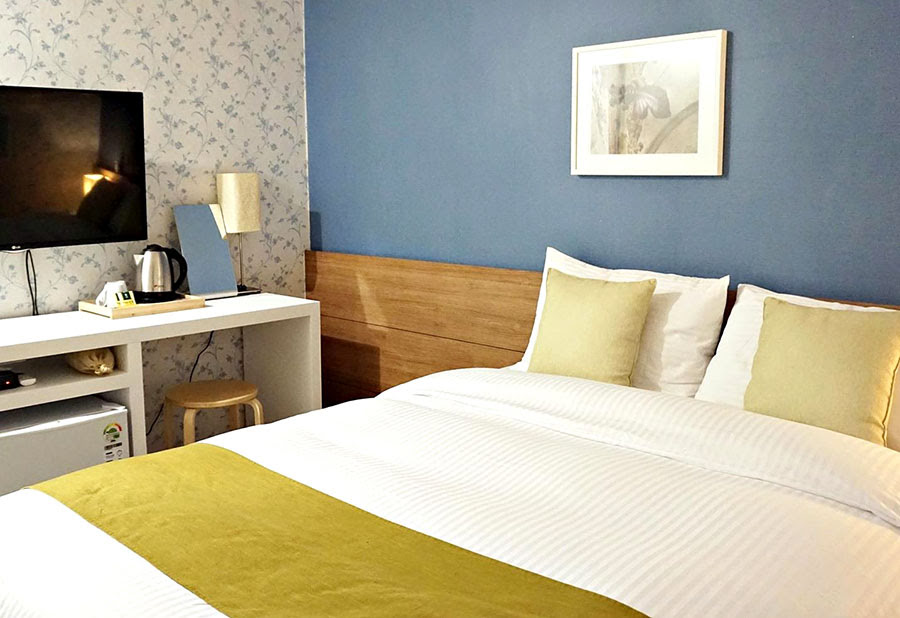
FIND & BOOK A HOTEL IN SEOGWIPO TODAY
Check In to The Cloud Pool&Spa , Step Out to Seongsan
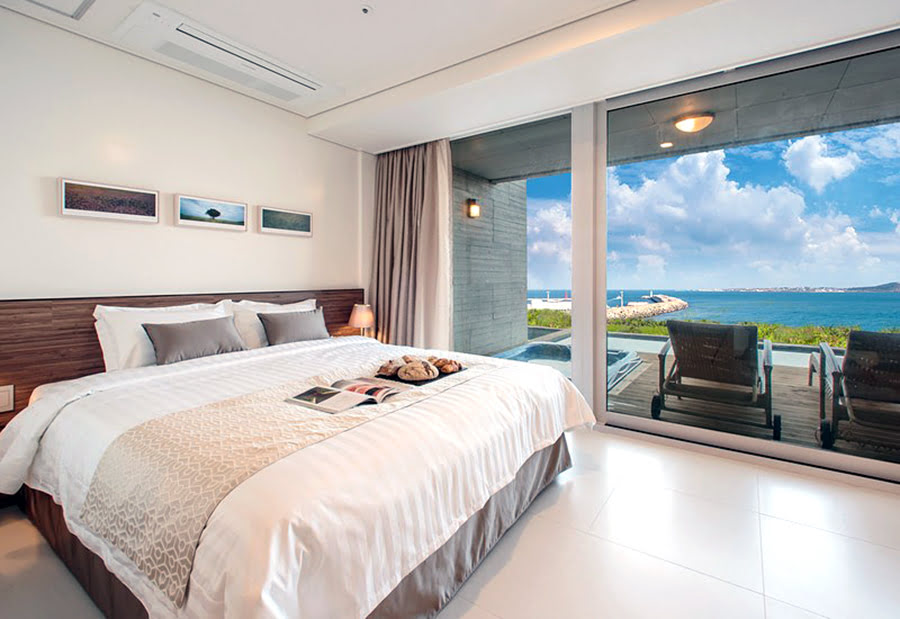
FIND & BOOK A HOTEL IN SEONGSAN TODAY
Check In to Dyne Oceano Hotel , Step Out to Aewol
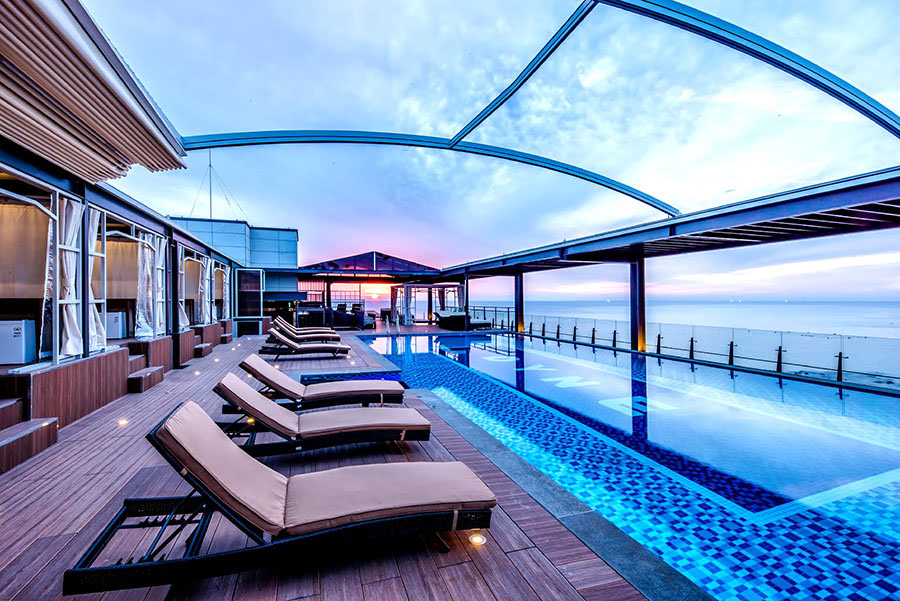
FIND & BOOK A HOTEL IN AEWOL TODAY

You may also like
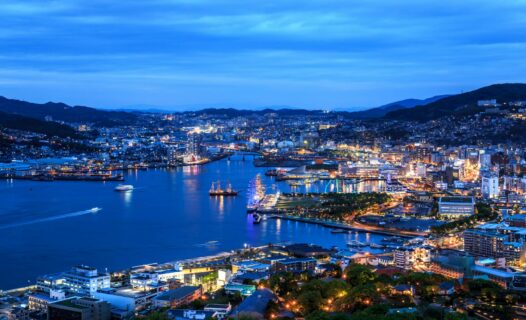
Exploring Nagasaki: A Journey Through History and Culture

Culinary Delights of Jacksonville: A Food Lover's Guide

Exploring the Beaches of Kenting: A Day Trip Guide

Bekasi's Best Street Food Delights: A Food Lover's Guide
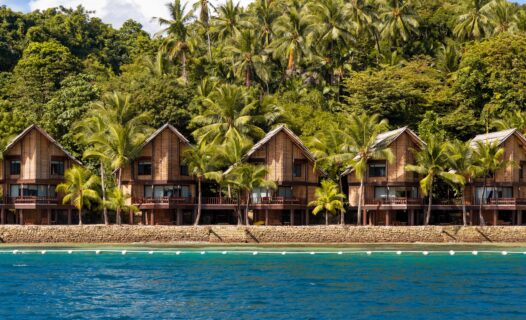
Romantic Getaways: Best Hotels for Couples in Davao City

Romantic Venice: The Perfect Getaway for Couples

Top Souvenir Shops in Tagaytay – Your Ultimate Tagaytay Shopping Guide

Welcome to Nashville: The Heartbeat of American Music

Explore Daegu Shopping Guide: From Traditional Markets to Modern Malls

The Ultimate Guide to Shopping in Hsinchu: From Tech Gadgets to Traditional Crafts

Exploring Makassar's Culinary Gems: A Food Lover's Guide
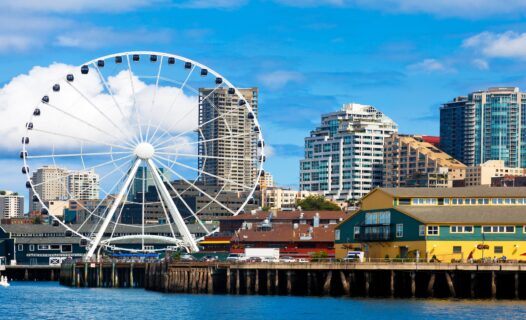
Ultimate Seattle Travel Guide: A 3-Day Exploration of The Emerald City

Exploring Udon Thani: A 3-Day Immersion in History, Culture and Flavor
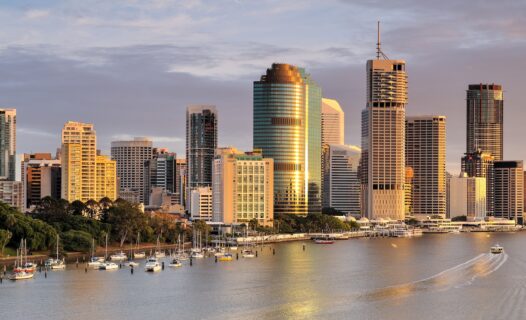
Discover Brisbane: A Travel Guide to Australia's River City

Sustainable Kochi Travel Guide: Eco-Conscious Explorations
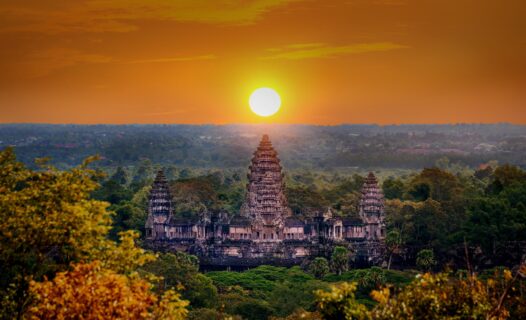
Unforgettable Siem Reap: A 3-Day Guide to Angkor's Wonders and Beyond

Discover Vientiane: A 3-Day Guide to Laos' Tranquil Capital
3-day jacksonville itinerary: explore florida’s vibrant city life & natural beauty.
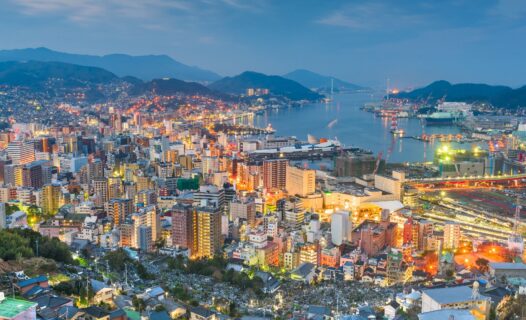
3-Day Nagasaki Itinerary: Exploring History and Culture
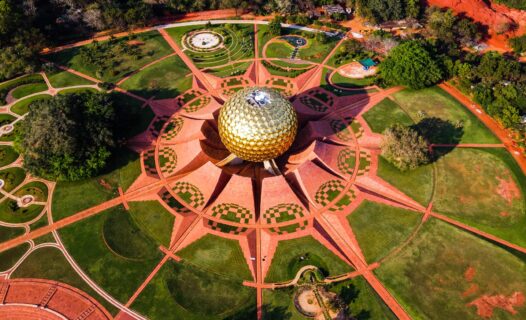
Embrace the Monsoon Magic: A 5-Day Immersive Guide to Pondicherry
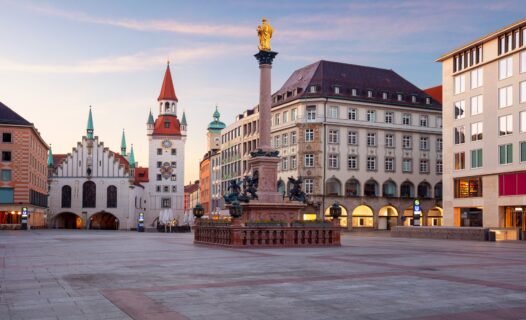
Ultimate 3-Day Munich Itinerary: Bavarian Castles, Culture, and Countryside

Explore the rich history and culture of Nagasaki in this detailed travel guide. Discover top attractions, hidden gems, and practical travel tips for your visit.

Culinary Delights of Jacksonville: A Food Lover's Guide
Explore the finest culinary experiences in Jacksonville, FL with our comprehensive food lover's guide. Discover top restaurants, local eateries, and hidden gems.

Discover the best beaches in Kenting with this detailed day trip guide. From Baisha Beach to Houbihu Fishing Harbour, explore the top coastal spots in Taiwan's tropical paradise.

Bekasi's Best Street Food Delights: A Food Lover's Guide
Discover Bekasi's best street food! From Nasi Goreng to Martabak, explore hidden gems and local favorites for an unforgettable culinary journey.

Explore the top romantic hotels and romantic getaways in Davao City for a memorable trip with your loved one.

Experience the magic of Venice with your loved one. Our guide covers the best romantic spots, dining experiences, and activities for couples.

Explore the best souvenir shops in Tagaytay! Discover unique local crafts, artisanal products, and perfect 'pasalubong' to bring home.

Discover Nashville's soul through our comprehensive travel guide. Explore music history, savor Southern flavors, and immerse yourself in the city's vibrant culture.

Dive into Daegu's shopping scene with our ultimate guide. Discover hidden gems in traditional markets, fashion-forward boutiques, and luxurious malls for an unforgettable shopping spree in South Korea’s vibrant city.

Welcome to Hsinchu, a city where the future meets tradition, creating a shopping paradise that caters to tech enthusiasts, history buffs, and …

Exploring Makassar's Culinary Gems: A Food Lover's Guide
Discover Makassar's best culinary delights with our in-depth travel guide. Explore traditional markets, savor local dishes, and find the best dining spots in this vibrant city.

Dive into our 3-day Seattle travel guide to uncover the best of The Emerald City. From iconic Space Needle views to bustling Pike Place Market, experience Seattle's top attractions, rich culture, and natural beauty.

Discover the hidden gems of Udon Thani in our comprehensive 3-day travel guide. Explore ancient sites, savor Isaan cuisine, and immerse in Thai culture.

Discover Brisbane: A Travel Guide to Australia's River City
Explore the enchanting city of Brisbane with our comprehensive travel guide. Discover hidden gems, cultural landmarks, and the vibrant lifestyle of Queensland's capital.

Embark on a sustainable journey through Kochi with our guide. Discover eco-friendly stays, organic cuisine, and activities that protect nature while immersing you in the local culture of Kerala's enchanting city.

Unforgettable Siem Reap: A 3-Day Guide to Angkor's Wonders and Beyond
Embark on a captivating 3-day journey through Siem Reap, from the awe-inspiring Angkor Wat to the serene Tonle Sap Lake and the vibrant local culture.

Discover Vientiane: A 3-Day Guide to Laos' Tranquil Capital
Embark on an unforgettable journey through Vientiane with our 3-day guide. Explore ancient temples, savor Laotian cuisine, and unwind by the Mekong River.

3-Day Jacksonville Itinerary: Explore Florida’s Vibrant City Life & Natural Beauty
Uncover the best of Jacksonville, FL in three days. From historic sites and vibrant cultural hubs to serene beaches and lush parks, this itinerary guides you through the city’s top attractions.

Embark on a captivating 4-day adventure through Nagasaki, where history and culture converge. Discover essential historical sites, cultural gems, and breathtaking views in this immersive travel guide.

Discover the alluring charm of Pondicherry during the monsoon with our detailed 5-day itinerary. Embrace serene mornings, cultural riches, and culinary delights in this enchanting coastal town.

Dive into our extensive 4-day Munich guide, from historic squares to Neuschwanstein Castle and the Bavarian Alps.
Current language
All languages.

Hallasan National Park

Top ways to experience Hallasan National Park and nearby attractions

Most Recent: Reviews ordered by most recent publish date in descending order.
Detailed Reviews: Reviews ordered by recency and descriptiveness of user-identified themes such as waiting time, length of visit, general tips, and location information.
Also popular with travellers
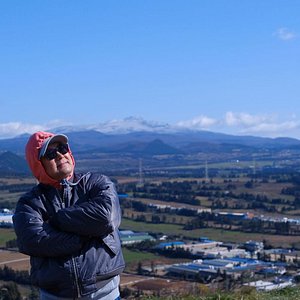
HALLASAN NATIONAL PARK: All You Need to Know BEFORE You Go (with Photos)
View Cart Checkout
- No products in the cart.
Subtotal: $ 0.0

- Things to do
- Virtual Tour
- One Day Tour
- Multi Day Tour (2~5 Days)
- Multi Day Tour (6~13 Days)
- Customized Tour
- DMC & PCO Service
- Virtual & Hybrid Event
- Clients & Project
- Airport Transportation
- Korea chauffeur service
- Hotel + Airport Transportation
- Accommodations
- Tourist Map
Hallasan National Park Visitor center
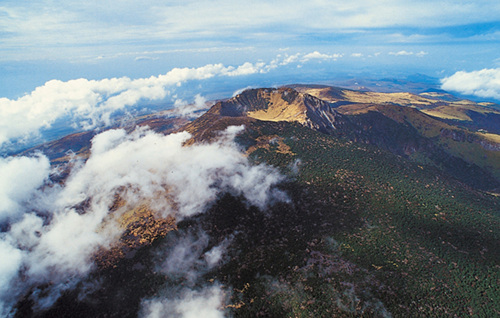
Operating Hours
Hallasan Mountain rises up proudly from the center of Jeju Island and is perhaps the island’s most memorable landmarks. Also called Mt. Yeongjusan, meaning “mountain high enough to pull the galaxy,” Hallasan Mountain is widely known by scientists for its geological value. Designated as a national park in 1970, there are 368 parasitic volcanoes called Oreums (peaks) around the main mountain.
Hallasan Mountain is famous for its vertical ecosystem of plants that results from the varying temperatures along the mountainside. Over 1,800 kinds of plants and 4,000 species of animals (3,300 species of insects) have been identified; to explore the mountain’s treasures, simply follow one of the well-developed mountain hiking trails.
Hallasan Mountain is relatively easy to hike. With hiking courses less than 10 km in length, it is possible to go to the peak and back in one day. However, the constantly changing weather brings a lot of wind, so make sure that you are well prepared before you start climbing.
Not available
Leave a Reply Cancel reply
Your email address will not be published. Required fields are marked *
Save my name, email, and website in this browser for the next time I comment.
Post comment

HIKING HALLASAN IN JEJU – COMPLETE GUIDE
HOW TO HIKE HALLASAN MOUNTAIN IN JEJU? HOW LONG IS THE HIKE TO THE TOP OF HALLASAN? HOW TO RESERVE THE ENTRANCE TO THE HIKE?
Hallasan Mountain in Jeju is the highest peak in South Korea. Mount Hallasan rises to 1,950 meters high. If you are traveling to Jeju , make sure to add a hike to Hallasan Mountain on your itinerary.
Hallasan is the highest peak in South Korea!
Formed by volcanic activity, the mountain is an extinct volcano made largely of lava. I t is home to the magnificent Baekrokdam (a lake inside the crater of the volcano at the peak).
There are 4 main trails to hike on Hallasan Mountain, out of which only 2 reach its peak. In this post, we will provide you with a full guide about each hike and share our experience of reaching Hallasan’s peak, a truly amazing adventure!
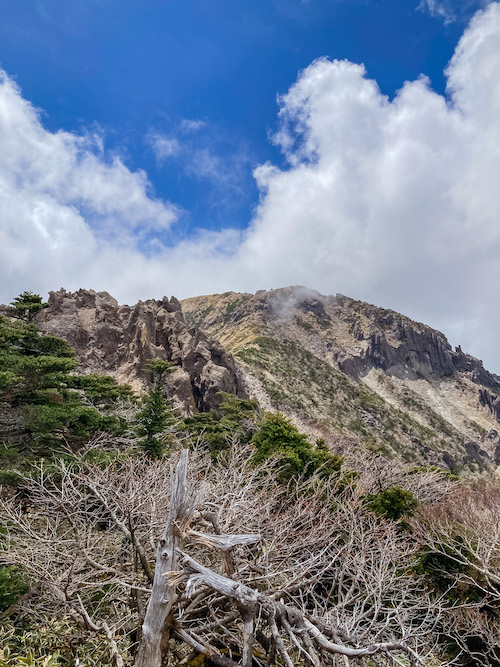
Why is it worth hiking Mount Hallasan in Jeju?
– The Scenery is absolutely stunning with breathtaking views! – Mt. Hallasan is listed as UNESCO World Heritage Site – It is the highest peak in South Korea – Hiking to the top is very challenging but very rewarding! – You can observe the right biodiversity – And so much more which you can discover in this full guide on hiking Mt. Hallansan
About Hallasan Mountain in Jeju

Hallasan was an active volcano until about 25,000 years ago, but its last eruption was in 1007. So no worry, it’s not about to wake up.
It is characterized by a large number of lava tunnels forming a total of 42 kilometers.
Thanks to this, the island and its tunnels were classified in 2007 as a UNESCO World Heritage Site. You can visit some of its laval tunnels, the most popular one is the Manjanggul cave . But we also visited 2 caves in Hallim Park , much smaller, but still fascinating.
Hallasan Mountain has been a natural monument since 1966. It has been a UNESCO biosphere reserve since 2002 (biosphere reserves are areas comprising terrestrial, marine and coastal ecosystems. Each reserve promotes solutions to reconcile the conservation of biodiversity and its sustainable use).
We wrote many posts about Jeju which we compiled here . Check it out if you plan a trip to Jeju.
Which trails go to the top of Mt. Hallasan?

There are 4 main trails at Hallasan. Out of which 2 go to the top
Here is the overview of the 4 trails:
Trail 1: Yeongsil trail (not going to the top)
Yeongsil is the easiest trail at Hallasan.
- Duration: 2 hours
- Length : 3.7 kilometers (one way)
- Reach the summit: NO
- Booking required: NO
- Starting point: Yeongsil Rest Area, Seoguipo-si Youngsil-ro 495 ( here )
- How to get there: If you are renting a car, then it’s relatively easy to reach the starting point. There are plenty of parking spaces. If you want to get there by bus, take #240 from Jeju City.
Our Experience:
Yeongsil is best known in autumn thanks to the amazing foliage. The start of the hike takes place in the woods, you are surrounded on both sides by trees and small streams. It’s quite a relaxing atmosphere.
The path cleared up after the forest for a beautiful view of Hallasan. Some of the highlights of Yeongsil are volcano rocks, waterfalls, the view of big valleys, and the crater wall of Hallasan Mountain.
Overall it’s a great and easy hike. If you want to train before tackling the tougher hikes to the summit, Yeongsil is a great start.
Trail 2 Eorimok trail (not going to the top)
- Length: 4.7 kilometers (one way)
- Duration: 2.5 to 3 hours
- Starting point: Eorimok rest area, Jeju-si 1100-ro 2070-61 ( here )
- How to get there: Again, very easy to reach by car. There are plenty of parking spaces. If you want to get there by bus, take #240 from Jeju City (same but to reach Yeongsil)
This short trail is also easy to access for beginners. In spring, the nearby meadows are covered with red royal azaleas. From the stone walkway that leads to Mansedongsan, you will enjoy a breathtaking panoramic view of the countryside and the characteristic Oreums.
A great hike, which we really enjoyed. However, as this is one of the shortest trail and yet very scenic, it is also one of the most popular. So don’t expect to be the only one on the trail.
Trail 3: Seongpanak Trail (reaching the summit)
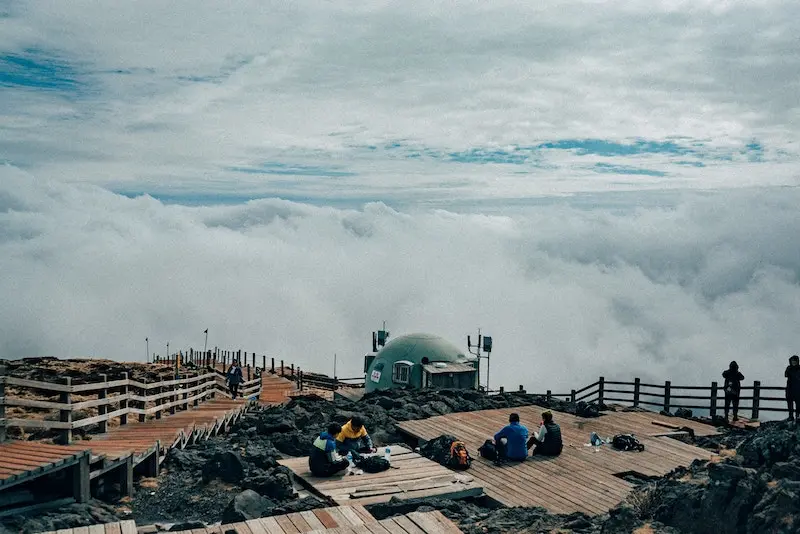
- Length: 9.6 kilometers (one way)
- Duration : 7h – 9h
- Reach the summit: YES
- Booking required: YES ( here )
- Starting point: Seongpanak parking lot, Jeju-si Jochun-eup 516-ro 1865 ( here )
- How to get there : If you get there by car, there is a huge parking lot. Getting to the Seongpanak trail by bus is easy. From Jeju International Airport – Take bus#181, from Jeju Bus Terminal – Take bus#281 and from Seogwipo – Take bus#182.
Our experience :
Seongpanak trail is the most popular trail to reach the summit. Its constant gentle slope makes it easier to reach the summit.
However, out of the 2 trails that bring you to the summit, we felt that Seongpanak was less scenic as most of the time the trail goes through a lush forest without a major panorama until reaching the summit.
As it is the easiest trail to reach the summit, expect quite a number of hikers to share the path with you. (We will go into more detail about Seongpanak trail the later in this post).
Trail 4: Gwaneumsa Trail (reaching the summit)
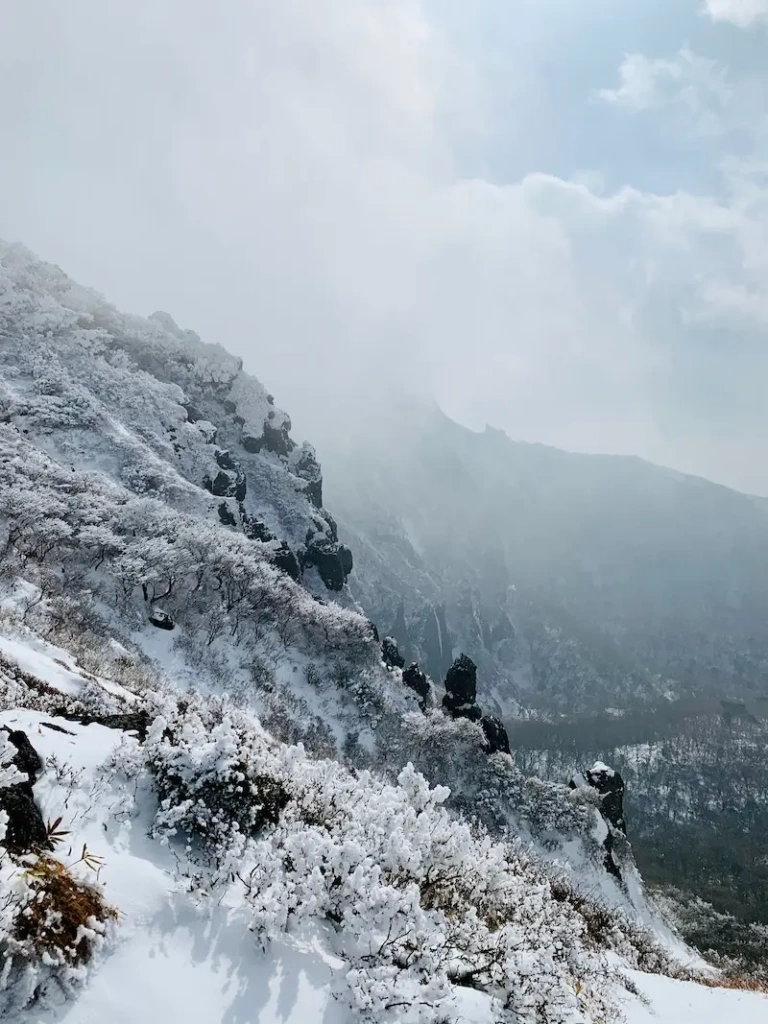
- Length: 8.7 kilometers (one way)
- Duration : 8h – 10h
- Starting point: Gwaneumsa parking lot near Gwaneumsa temple, Jeju-si Sanrokbuk-ro 588 ( he r e )
- How to get there : Taking a taxi or your own rental vehicle is the easiest way. ( if you need a rental car, you can book here for the best rate as a foreigner)
Our experience:
The Gwaneumsa Trail offers the best view of the vertiginous valleys and breathtaking terrain of Mount Hallasan. Halfway along the route are Guringul (a lava cave) and the valley of Tamna.
The latter is particularly splendid in autumn thanks to the beauty of its foliage, and in winter, when the whole valley lies under a thin layer of snow.
Although considered the hardest trail to reach the summit as it is the steepest with many stairs, Gwaneumsa is by far our favorite one and most scenic. (later in this post we will get into more details about the Gwaneumsa trail)
Important information before hiking Mount Hallasan

Start early
Not only are there cut-off times you have to stick to, but hiking Hallasan is an experience to really enjoy. So leave yourself enough time and do not rush it. Depending on your level you may need to take long breaks.
Remember, to reach the summit and get back down you will need at least 7 hours. We needed 8.5 hours!
Pack plenty of food and water
This hike will take the whole day. We read before that there should be a place to get water and small snacks along the way but there wasn’t. We later learned that they stopped it due to Covid… not sure why though.
But this means that you need to bring sufficient food for a full day. The most popular snack for hikers in Korea is Gimpap. It’s a Korean dish made from cooked rice and ingredients such as vegetables, fish, and meats that are rolled in dried sheets of seaweed.
You can buy them pretty much in any convenience store or supermarket. We bought 2 each + other snacks and fruits. We finished everything including 1.5 liters of water each.
Prepare for the weather to change
Have layers ready to take on or off. The temperature may change rapidly. Also when you take a break you may feel cold, so it’s better to take one more layer. When we started our hike it was raining in the morning but we had a beautiful blue sky after lunch time.
The sun was really strong at the summit, hence we were happy that we brought our sunscreen too.
You need to book online (at least 1 day before)!
To limit the number of people hiking at the same time on Mount Hallasan, the government implemented a booking system. You do not need to pay but it is mandatory to book in advance.
This is only mandatory for the 2 hikes reaching the top (Seongpanak and Gwaneumsa). You also need to choose your starting time, you have 3 options (5:00-8:00 / 8:00-10:00 or 10:00-13:00).
Note that to reach the top (unless you decide to run) you shouldn’t start after 10:00am ! There are cut-off times, so you need to reach a few checkpoints at certain times, otherwise the trail will be close to the top. You don’t want to hike for 3 hours and then realize that the gate is closed and go all the way back…
To book, simply go to this website here . The website is also in English.
After your booking is completed, you will get a confirmation by email or Kakao message with a QR code.
imply scan the QR code at the entrance of the trail to go through the gate. If you do not show up but make a booking you will be restricted from accessing the trail for a few months. So make sure to cancel your booking if you can’t make it that day.
Get the right gear
Actually, the hike doesn’t require any specific gear, but you definitely should have proper hiking shoes. On Gwaneumsa, the trail is pretty much even with many stairs, however on Seongpanak the trail is totally uneven. If you do not have proper shoes, the risk of an accident can be quite severe. Better be well prepared.
The best time to hike to the summit
Spring and autumn would be the best seasons to hike to the top of Mount Hallasan. The weather should be more stable and less hot than summer.
If you decide to hike in summer, take extra water and sunscreens, as the sun would be very strong at the top. Winter could be beautiful if it’s covered in snow, but you will need to get extra warm clothes. Jeju can be quite windy as well.
Our experience getting to the summit via the Gwaneumsa trail

We decided to hike up from Gwaneumsa and go down from Seongpanak. When booking online, you only need to choose from which way you want to start. However, you are free to get down from the other trail.
Most people would normally choose the other option, going up from Seongpanak as the slope is much more gentle, and then going down from Gwaneumsa.
However, we usually hate going down when the trails are very steep and have many stairs. Remember the full hike is 8 to 10 hours . Hence, you need to think about your knees and legs and how tired you would be. Besides, we knew Gwaneumsa was more scenic, so we thought we would feel more motivated to reach the top with a beautiful panorama surrounding us.
After finishing the hike, we felt that we made the best choice by going up via Gwaneumsa. The other benefit, is that much less people are hiking via Gwaneumsa, so we had the entire trail for ourselves all the way up! We loved it.
We started the hike at 9:00am…

We usually do not like to wake up early on vacations, but here we are, woke up 7:00am, ate a good breakfast, got ready and drove 40min to the start of the trail. We reached Gwaneumsa parking lot a bit before 9:00am. After a quick toilet break we started the hike at 9:00am sharp. (No worry about parking, there are hundreds of spaces)
The start of the hike is really easy.
The trail is gorgeous, in the middle of the forest following a stream with huge rocks from time to time. On the way, there are many informative signs about the plants on Mount Hallasan and different animals living in the forest.
We also saw beautiful caves on the way. We really wanted to take more time to explore, but we knew we had to reach the first checkpoint at 12:30pm and had no idea how long we would need to get there… So we kept a very good pace in this first part of the hike.
Start of the real climb at 10:00am

Things got a bit harder after the first hour. After crossing a beautiful bridge, we saw the first set of steep stairs. We heard before that Gwaneumsa is mostly stairs. So here we go, our first stairs of the day to warm up our legs.

On our way up, we saw a rail following the trail. We then understood that it is used to bring materials up and down, but also if any hiker gets injured, they can easily bring you down.
The little wagon crossed us at some points. Later on, we realized it was the cleaning lady to clean the toilet at the rest area located around 1,000 meters. So well-organized Korea, impressive!
We reached the first checkpoint at 11:30 am

As explained earlier, this is the first checkpoint that you need to reach before 12:30pm in order to get to the summit. If you arrive later than that, the gate will be closed and there will be no way to reach the top.
We were hiking in Spring, and the checkpoint time changes in winter and summer. The first checkpoint is called Samgakbong Shelter. We reached there at 11:30am. So count at least 2.5 hours to get there. Hence, we do not recommend starting the hike after 10:00am.

At Samgakbong we ate our first Gimbap and took a toilet break. The weather wasn’t so good in the morning, with a thick fog. However, the forecasts showed a clear blue sky in the afternoon. So we were still hopeful to see the crater and the panorama from the top…
From Samgakbong to the summit, the most beautiful part of the hike
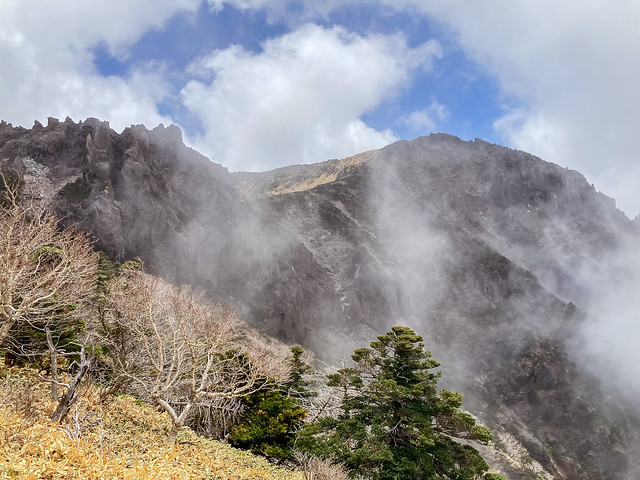
After taking a 30min break at the shelter, we continued our journey to the top. Right after leaving the shelter, the hike became even more beautiful. Not only the sky cleared up but the forest was also behind us, giving us the opportunity to see the splendid peak for the first time.
After crossing a gorgeous hanging bridge, a series of hundreds (perhaps thousands) of stairs awaited us.
The good part is that the view was so stunning, that we did not mind all these stairs that much. The contrast of the green valley, the rocks, and the blue sky was stunning. We suddenly felt in the Lord of the Ring. We could have spent hours contemplating this landscape but we knew we had to reach the summit before 2:pm.
1:15 pm: We made it to the top of Hallasan (and Korea)!

Finally! After a bit more than 4 hours with a 30-minute break, we made it to the top. To our big surprise, as we felt we were pretty much the only ones hiking that day, the summit was full of people! We later understood that most of them came from Seongpanak, the other trail reaching the summit.
At this stage, the weather was beautiful with the sun warming us up. The view on the lake was gorgeous (unfortunately it is not allowed to go down the crater to touch the water). After some photos, it was time to eat some food and recharge our battery. We were so happy we made it to the top.
It is mandatory to start going down before 2:00pm. Hence after another 30min break, we decided to head back via Seongpanak this time.
Going down via Seongpanak trail

We started our descent just before 2:00

On the way down via the Seongpanak trail, the first part was actually really nice and scenic.
The panorama was also beautiful with nice view of the valley, yet less impressive than Gwaneumsa. After about 1h, we reached the forest again. We were expecting an easy way down, however, the trail is really uneven with many stairs also…
Although it is less steep, we felt very tired because the terrain was really rocky as you can see in the photo. We had to be extra careful not to twist our ankles…
At 15:00 we reached Jindallaebat Shelter.

If you hike Seongpanak on your way up to the summit, you need to make sure to reach Jindallaebat Shelter before 12:30pm, otherwise, you won’t be able to reach the summit.
As we were on our way down, we just had a quick toilet break (note that there are no toilets at the summit) and continued our descent.
We saw a deer!

After the shelter, we started to go deep in the forest again and it started to be cloudy again (we were so lucky to reach the summit during a sunny window). The forest is actually very nice and felt a bit mystical within the cloud.
At some point, we saw a deer not too far from the trail searching for some food. What a magical sight in this forest.
We made it back at 17:30pm

After 8.5 hours we made it back to the parking lot of Seongpanak. All and all we took a bit more than 1 hour break. We were very exhausted but so proud of ourselves.
To reach back to our car, parked at the Gwaneumsa Parking area, we took one of the taxis waiting at the exit. The journey to Gwaneumsa took less than 20 minutes.
Where to stay near Hallasan Mountain in Jeju?
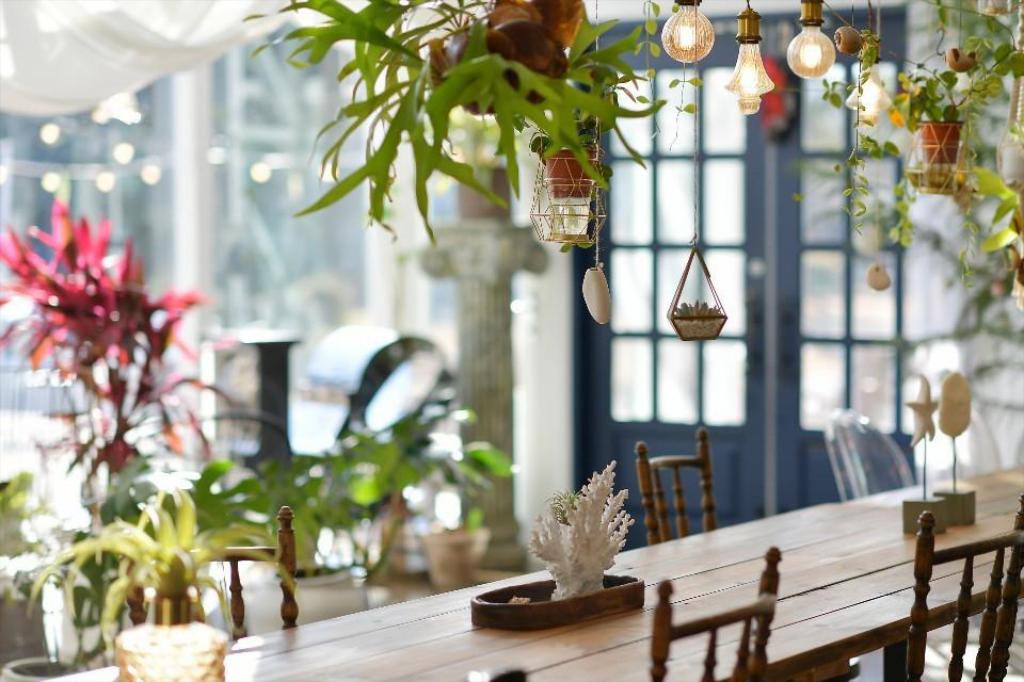
If you want to stay in a place surrounded by nature and near Hallasan Mountain, then Jeju The Gallery Pension is the perfect place for you in Jeju. This very cute pension with beautiful decorations and thoughtful attention is a hidden gem in Jeju. You can book here .
Conclusion – Do we recommend the hike to Hallasan?

Hiking the Hallasan is a must if you visit Jeju. Even if you do not choose to reach the summit, choose one of the easiest hikes which is also beautiful.
For us, reaching the top of the Hallasan was a lifetime experience and our longest hike to date. It was hard, it was tiring but it was a wonderful experience with breathtaking views.
We can now proudly say that we have come to the end of our limits and that we have defeated this giant Halla mountain.
Although many people recommend taking the Seongpanak trail, we would definitely go via Gwaneumsa if we were to do it again. The hike is much more scenic, there are fewer people, and we actually felt that it was less difficult as at least the terrain was even.
If you are planning a trip to Jeju, make sure to read our post with the most awesome things to do in Jeju, here . Also, as we lived in Korea for 3 years, we wrote many posts about amazing things to see in this country. You can see all our posts here .
Related articles
- MOST AWESOME THINGS TO DO IN JEJU
- EXPLORE UDO, JEJU’S SISTER ISLAND
- VISIT THE BEAUTIFUL HALLIM PARK
- CHILL AT HAMDEOK BEACH THE MOST BEAUTIFUL BEACH ON THE ISLAND
- EXPLORE CAMELLIA HILL IN JEJU
- ULTIMATE GUIDE FOR OLLE GIL TRAIL AROUND JEJU
- SURF AT WOLJEONGRI BEACH
- VISIT MANJJANGUL CAVE, THE LARGEST LAVA TUNNEL IN THE WORLD!
- HAVE FUN AT JEJU MAZE PARK!
We are Hammer and Guillaume, a fun couple traveling the world. We will take you to some of the most amazing places on earth. Hammer is a yoga instructor and Guillaume a true water baby, enjoying all kinds of water sports. Follow-us to get the latest update about our travels.
Similar Posts
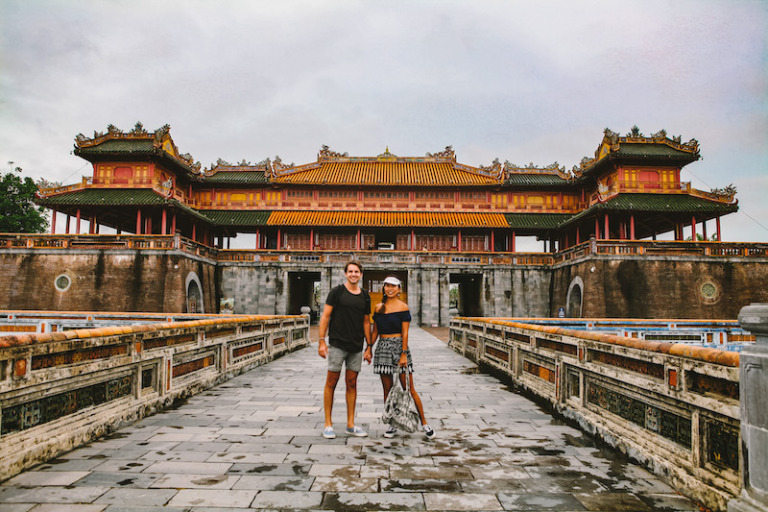
13 AMAZING THINGS TO SEE IN HUE, VIETNAM
If you travel through Vietnam, a stop to Hue, Vietnam’s ancient capital is a must. Here is a guide with all you need to know about Hue.
![jeju hallasan tour DISCOVER SESEH AND CEMAGI IN BALI [FULL GUIDE]](https://afuncouple.com/wp-content/uploads/2023/07/Discover-Seseh-and-Cemagi-in-Bali-3-768x512.jpg)
DISCOVER SESEH AND CEMAGI IN BALI [FULL GUIDE]
With their charm, pristine beaches, and traditional heritage, Seseh and Cemagi offer a refreshing alternative to see the authentic Bali!

GENTING HIGHLANDS IN MALAYSIA – 20 BEST THINGS TO DO
Genting Highlands stands as a picturesque hill resort located just an hour’s drive from Kuala Lumpur, Malaysia’s bustling capital city.

GANGNEUNG IN KOREA – 10 AWESOME THINGS TO DO
Gangneung on the East Coast of South Korea, is the perfect gateway from Seoul. Beautiful beaches, great cafes, stunning national parks, cultural attractions and so much more.
![jeju hallasan tour 15 INCREDIBLE THINGS TO SEE IN GALLE [SRI LANKA]](https://afuncouple.com/wp-content/uploads/2022/08/Best-things-to-see-the-south-of-Sri-Lanka-49-768x512.jpg)
15 INCREDIBLE THINGS TO SEE IN GALLE [SRI LANKA]
Galle is a magnificent fortified city with strong colonial heritage which you must absolutely visit during your trip to Sri Lanka!
![jeju hallasan tour 15 BEST THINGS TO SEE IN TAKAYAMA [JAPAN GUIDE]](https://afuncouple.com/wp-content/uploads/2022/12/Best-things-to-see-in-Takayama-11-768x512.jpg)
15 BEST THINGS TO SEE IN TAKAYAMA [JAPAN GUIDE]
Takayama is nicknamed “little Kyoto”. This charming town in Japan has many places to discover. Here are the best things to see in Takayama.
Leave a Reply Cancel reply
Your email address will not be published. Required fields are marked *

COMMENTS
Places to stay in Jeju. To climb Hallasan mountain, you can book a hotel room in Jeju city or the Seogwipo area. Jeju city. Jeju City is more vibrant, with great nightlife and eateries. It's a starting point for most tours. For a budget stay in Jeju, I highly recommend Yeha Guesthouse, a pleasant stay just a few minutes from the bus terminal ...
Jeju: Mt. Hallasan Hike and UNESCO Sites Day Tour. Join a tour and see all the natural wonders and UNESCO sites in Jeju. Start your day with a convenient hotel or nearby pickup. Next, journey to Mt. Hallasan. Take a 1-hour hike exploring this UNESCO site. Trek along the 1.3 km Eoseungsaengak trail and reach an elevation of 1,169 m above sea level.
Top ways to experience Hallasan National Park and nearby attractions. Jeju Island South UNESCO Day Tour with Lunch included. 55. Recommended. Full-day Tours. from. $85.00. per adult. Jeju Premium Small Group UNESCO Day Tour - South Course.
We specialize in arranging adventure day tour to trek and explore Mount Hallasan at Jeju Island, South Korea. Mount Hallasan is a shield volcano and is the highest mountain in South Korea. ... Jeju Private Tour Package-South of Jeju(Mt.Hallasan & Waterfalls) 3. Full-day Tours. from . $98.00. per adult (price varies by group size)
Jeju: Mt. Hallasan Hike and UNESCO Sites Day Tour. Join a tour and see all the natural wonders and UNESCO sites in Jeju. Start your day with a convenient hotel or nearby pickup. Next, journey to Mt. Hallasan. Take a 1-hour hike exploring this UNESCO site. Trek along the 1.3 km Eoseungsaengak trail and reach an elevation of 1,169 m above sea level.
The closest major area is Jeju City, and if you want to be along Bus 475 route, stay near Jeju University. Need Reservation: Yes; Gwaneumsa Trail is considered the steepest trail when hiking Hallasan with a 1,380m elevation gain over 8.7km but also the most scenic.
Jeju Mt. Hallasan hiking or Oreum Volcanic Cone Day TOUR cancellation policy: For a full refund, cancel at least 24 hours in advance of the start date of the experience. ... Full-Day Tour: Our Jeju Tour was packed (we visited 7 sites + brief tangerine farm stopover + lunch) but we didn't feel tired until we got back to the airport. That's how ...
Explore Hallasan, the highest mountain in South Korea at 1950 meters above sea level. It is one of the most popular courses for beginners in Hallasan, starting with the Eorimok Course and descending to the Yeongsil Course, a total of about 13km and 5-6 hours of climbing. The Eorimok Course is 7 kilometers long and takes about three hours to ...
We specialize in arranging adventure day tour to trek and explore Mount Hallasan at Jeju Island, South Korea. Mount Hallasan is a shield volcano and is the highest mountain in South Korea. The area around the mountain is a designated national park, the Hallasan National Park and is commonly considered to be one of the three main mountains of ...
This tour offers an immersive Jeju: Mt. Hallasan hike experience, starting with a convenient hotel or nearby pickup. Set out on a 1-hour hike on Mt. Hallasan's Eoseungsaengak trail, reaching an elevation of 1,169 meters above sea level. Along the way, marvel at the Jusangjeolli cliff, a unique feature of volcanic regions. ...
Complete Guide to Hiking Mt. Hallasan. Mt. Hallasan is actually a volcano, located on the South Korean island of Jeju. But, don't worry, Hallasan used to be an active volcano until about 5.000 years ago, nowadays it is classified as 'dormant'. With its 1950 meters of height, it is the highest peak in all of South Korea.
There are a wide range of lodging options in Jeju City, ranging from beds in hostels to fancy beachside resorts. A nice western hotel right on the water in Jeju city for about $100-90 ish is the Jeju Oriental Hotel and Casino. A highly rated budget hotel located half way between the beach and downtown area is the Jeju Pacific Hotel.
Mount Hallasan is located on Jeju Island, just south of mainland South Korea. It comes in at 6,388 feet / 1,947 meters in elevation, making it the tallest in the country. The mountain is actually a shield volcano that created most of the island itself (like the locals say "Jeju Island is Hallasan and Hallasan is Jeju".
Hike through Jeju's majestic landscapes on the 'Jeju Mt. Hallasan Hiking & Oreum Volcanic Cone Day Tour,' where adventure awaits at every turn.
Full description. Join a tour and see all the natural wonders and UNESCO sites in Jeju. Start your day with a convenient hotel or nearby pickup. Next, journey to Mt. Hallasan. Take a 1-hour hike exploring this UNESCO site. Trek along the 1.3 km Eoseungsaengak trail and reach an elevation of 1,169 m above sea level.
Bus Route 1: This route runs from Jeju-si (Jeju City) to Seongpanak, the starting point for the Seongpanak Trail. Buses on this route are less frequent, so it's recommended to check the schedule in advance. Bus Route 2: This route operates from Jeju-si to Eorimok, where you can access the Eorimok Trail.
Hallasan National Park. is located in the southernmost part of Korea, on Jeju Island. Standing 1,950m above sea level Hallasan is the highest mountain in South Korea, and is a dormant volcano with a lake crater at its summit. ... Inbound Tour Operator Tourism License # 1203 granted by Korean Mninistry of Culture, Sports and Tourism Tel: 82)-64 ...
Hallim Park is open from 8:30 a.m. to 5:30 p.m. daily. Jeju Folk Village - catch a glimpse of what island life was like in the 1890s with a visit to Jeju Folk Village. The restored community, located on the southeast side of the island, features more than 100 homes and thousands of folk displays.
Jeju Private Tour Package-South of Jeju(Mt.Hallasan & Waterfalls) 3. Full-day Tours. from . S$135.64. per adult (price varies by group size) SmallGroup 7day Korea package Tour with Seoul Gyeongju Busan Jeju. 1. Bus Tours. from . S$2,751.60. per adult. Jeju Island West UNESCO Day Tour with Lunch included. 251.
Hallasan Summit. Get to know this 17.9-km point-to-point trail near Seogwipo-si, Jeju-do. Generally considered a challenging route, it takes an average of 7 h 33 min to complete. This is a very popular area for hiking and walking, so you'll likely encounter other people while exploring. The trail is open year-round and is beautiful to visit ...
Information. Hallasan Mountain rises up proudly from the center of Jeju Island and is perhaps the island's most memorable landmarks. Also called Mt. Yeongjusan, meaning "mountain high enough to pull the galaxy," Hallasan Mountain is widely known by scientists for its geological value. Designated as a national park in 1970, there are 368 ...
Over 1,800 kinds of plants and 4,000 species of animals (3,300 species of insects) have been identified; to explore the mountain's treasures, simply follow one of the well-developed mountain hiking trails. Hallasan Mountain is relatively easy to hike. With hiking courses less than 10 km in length, it is possible to go to the peak and back in ...
Hallasan Mountain in Jeju is the highest peak in South Korea. Mount Hallasan rises to 1,950 meters high. If you are traveling to Jeju, make sure to add a hike to Hallasan Mountain on your itinerary. Hallasan is the highest peak in South Korea! Formed by volcanic activity, the mountain is an extinct volcano made largely of lava.